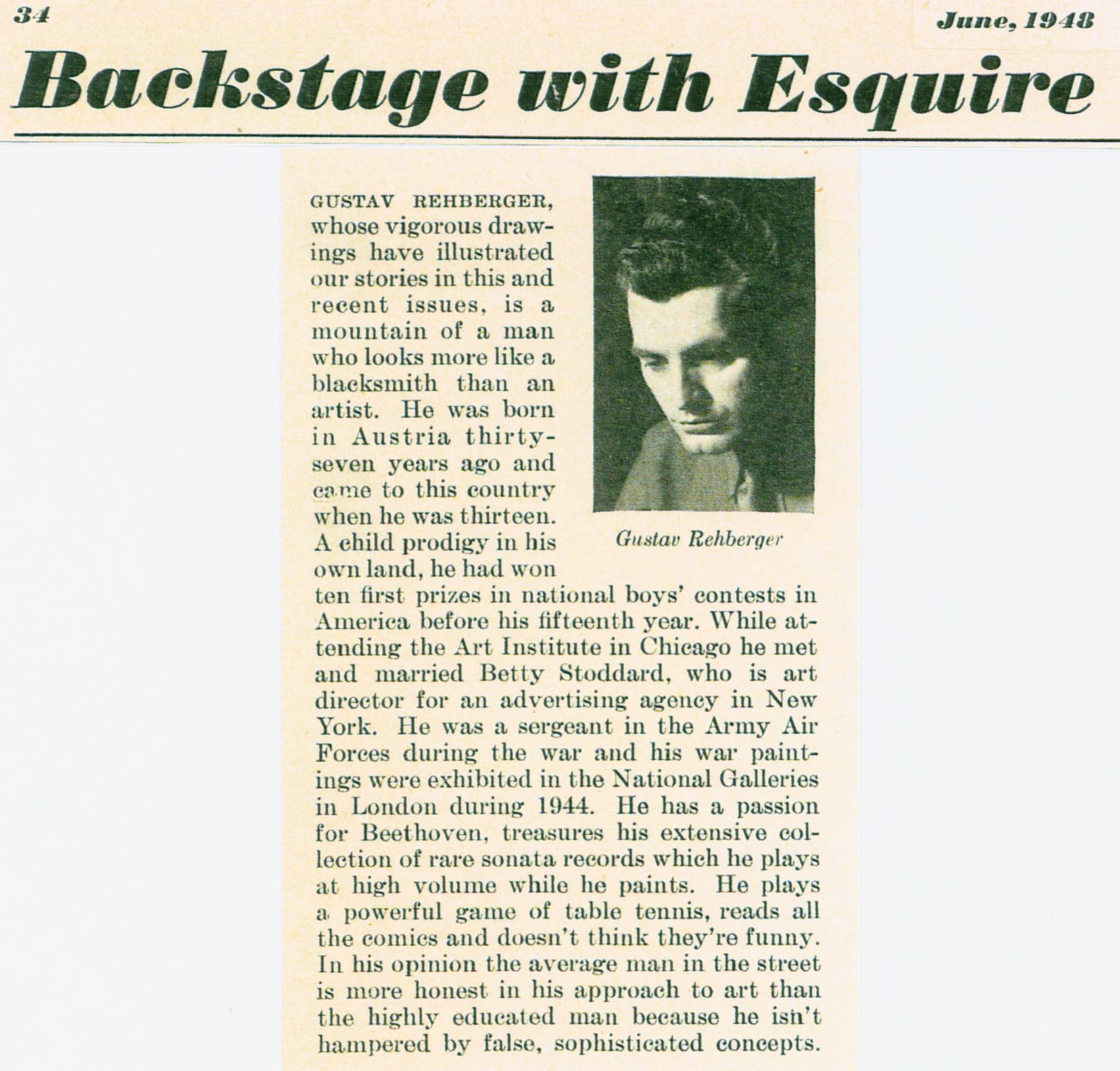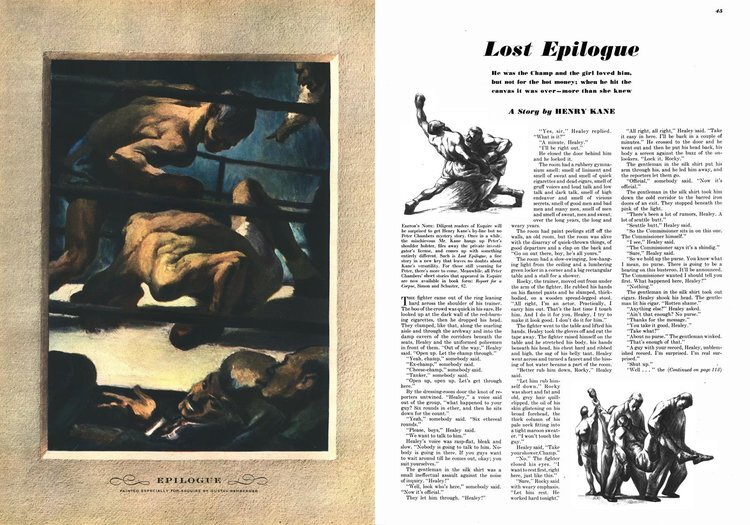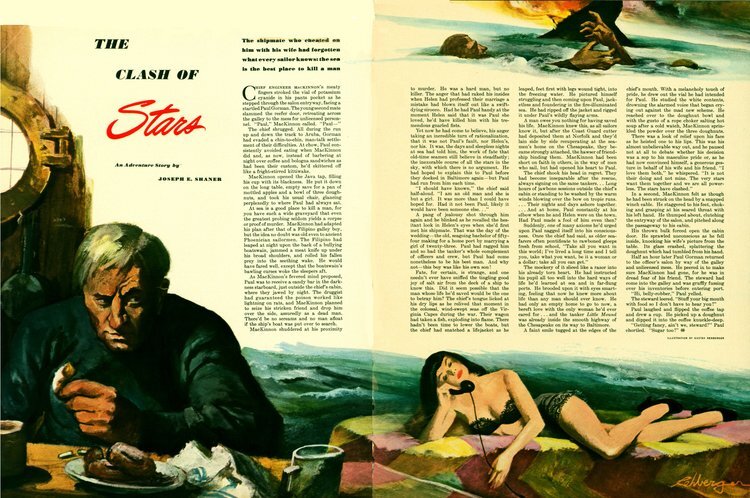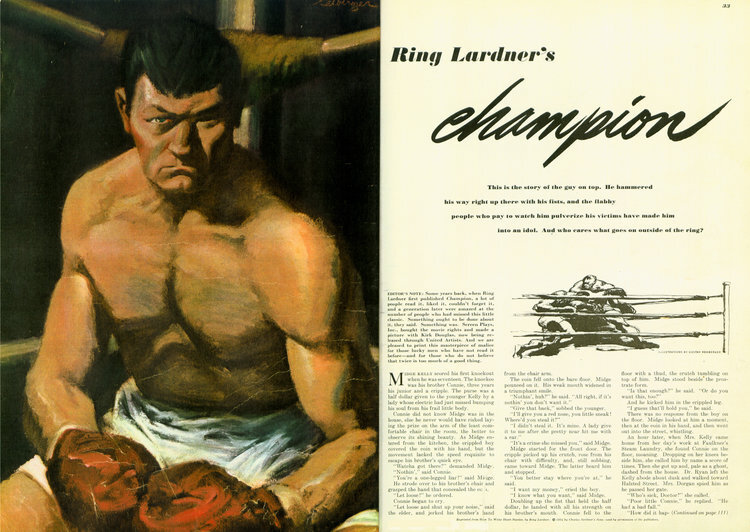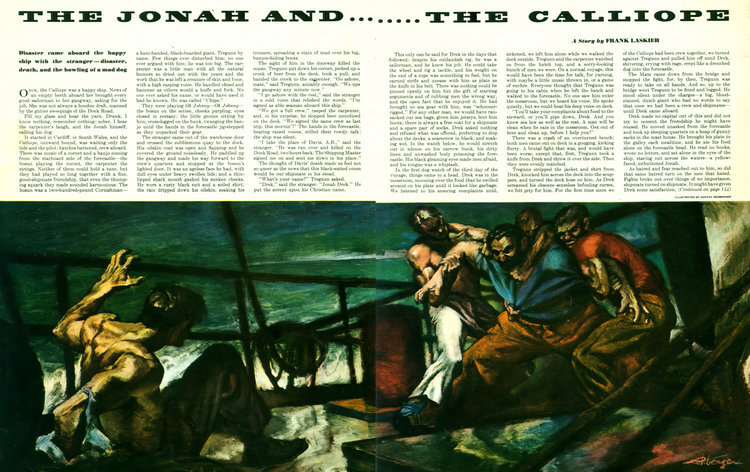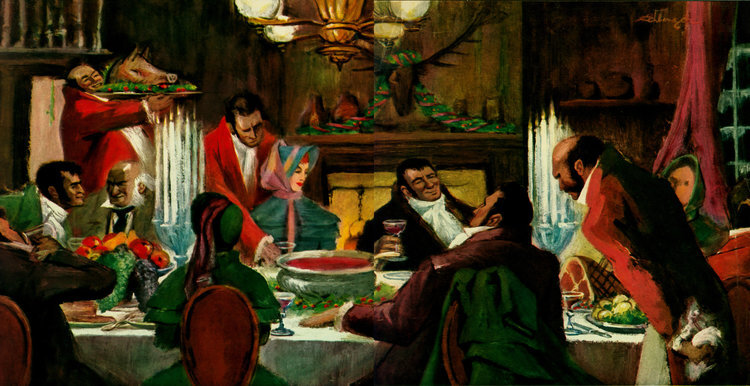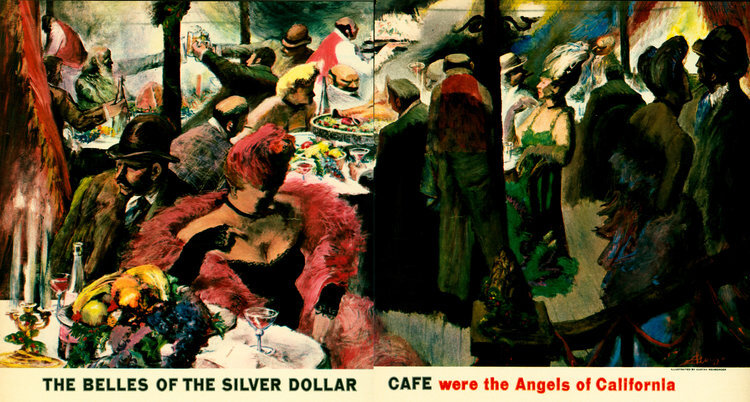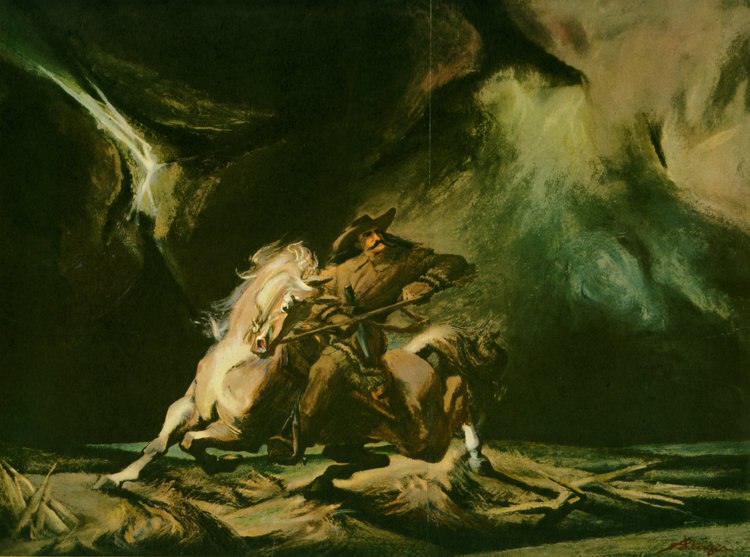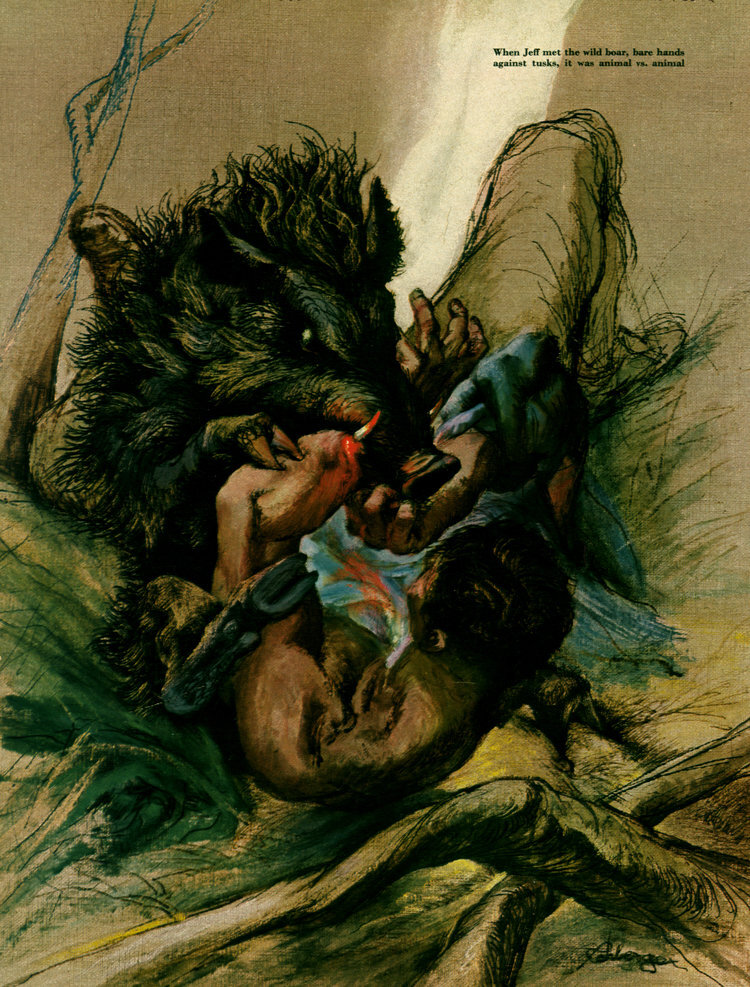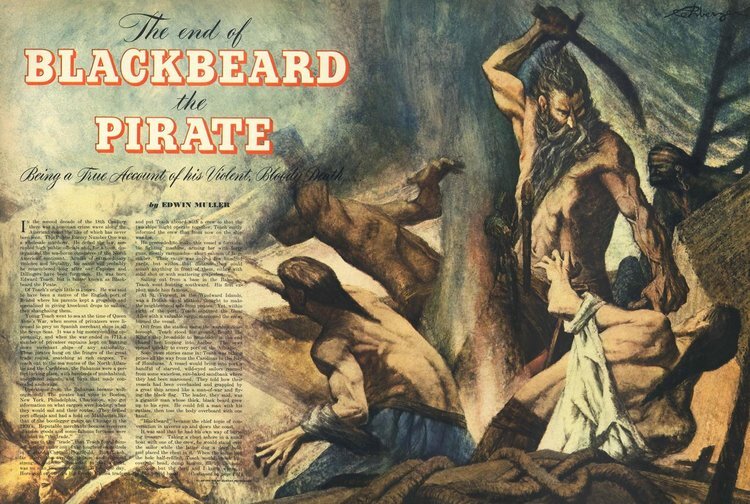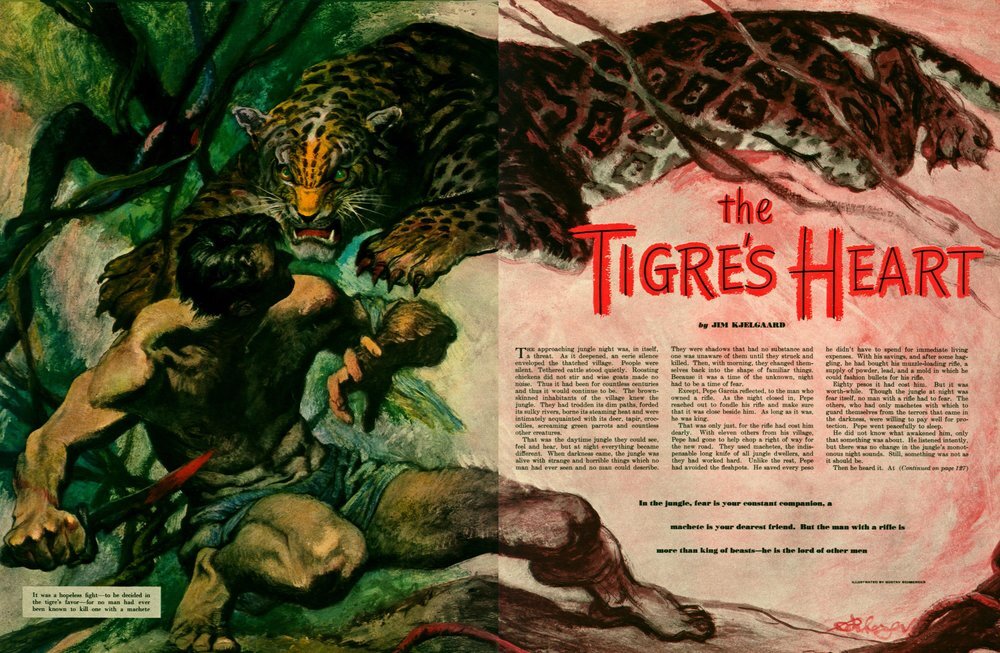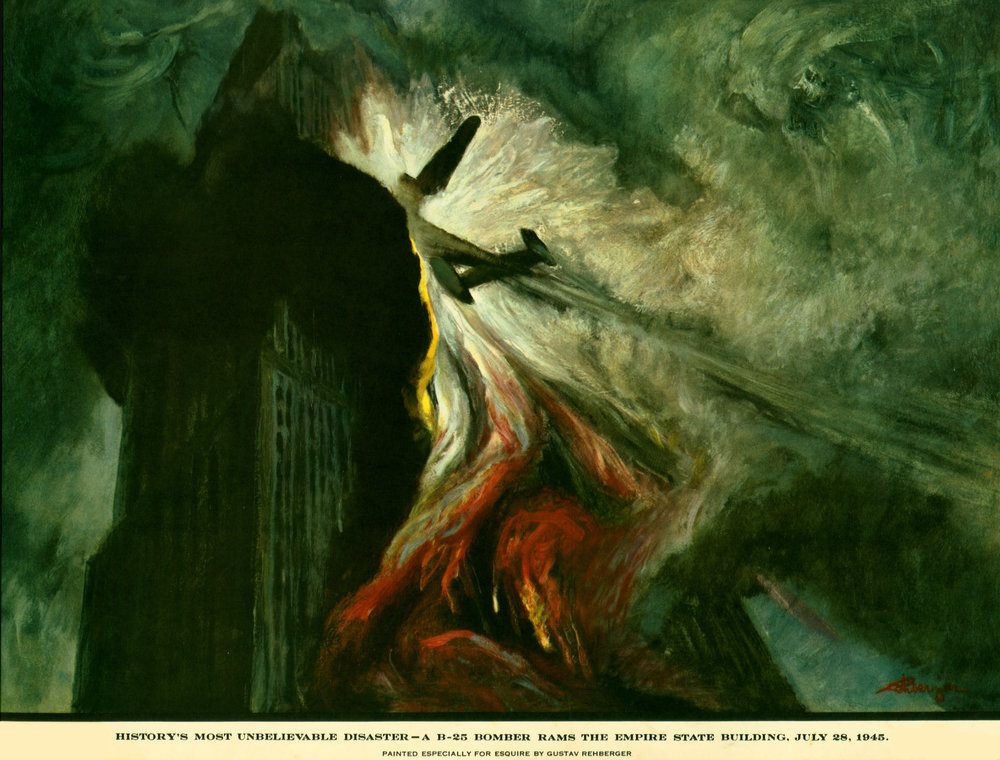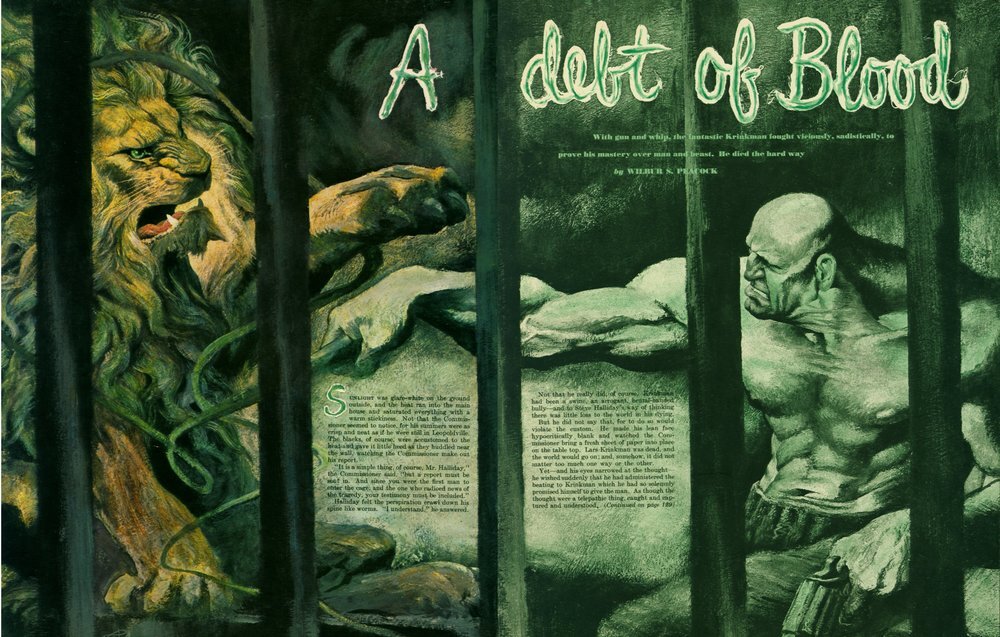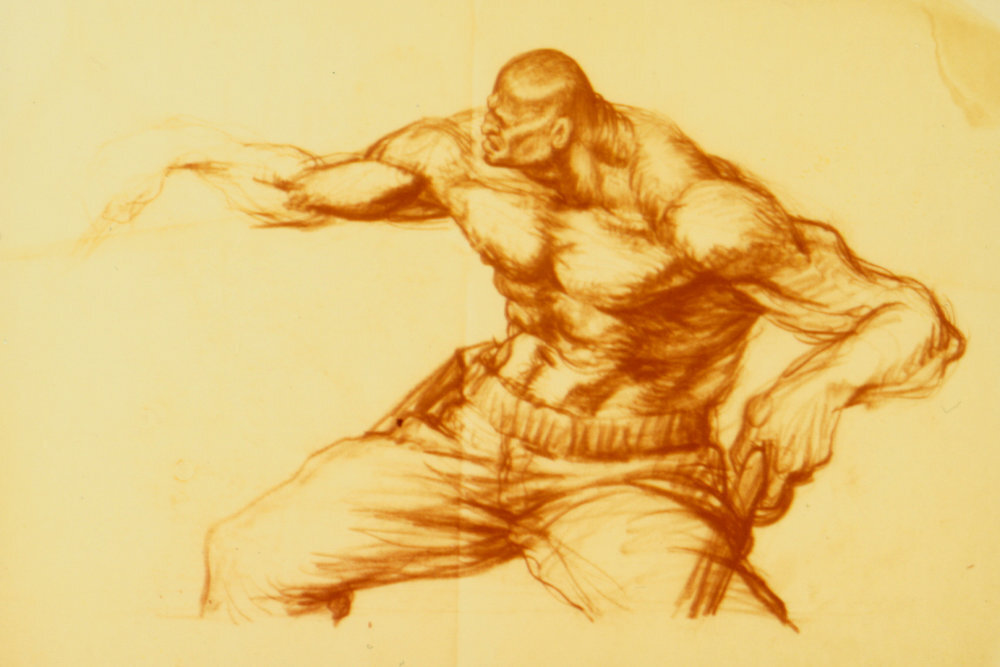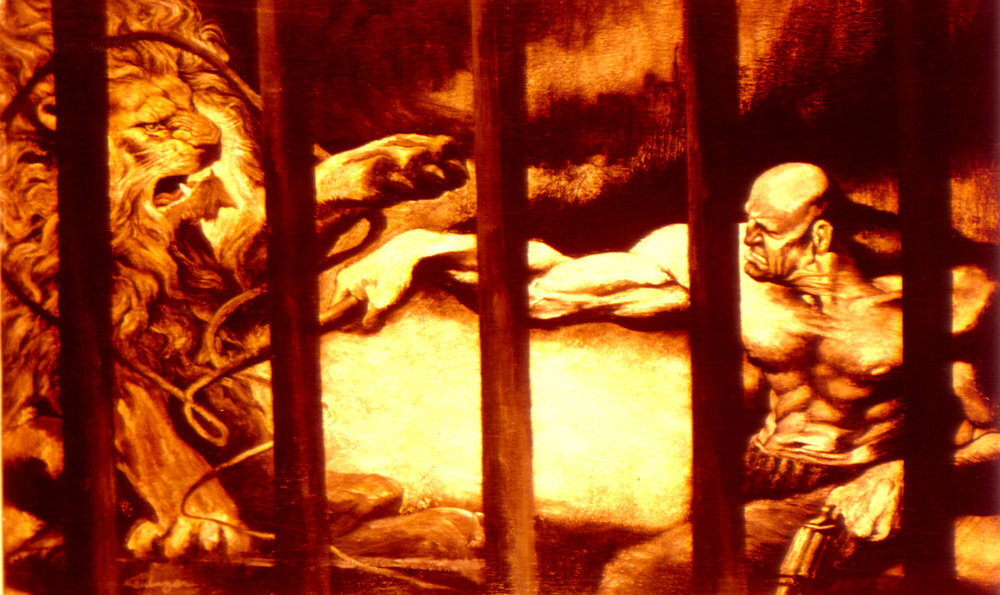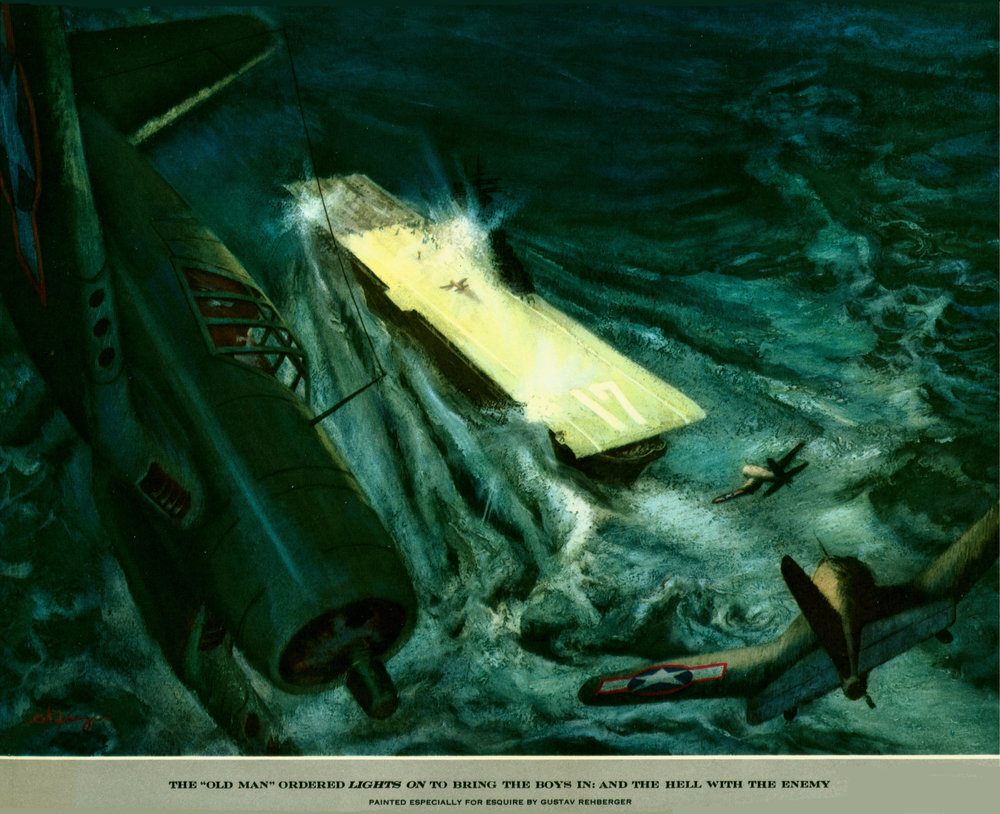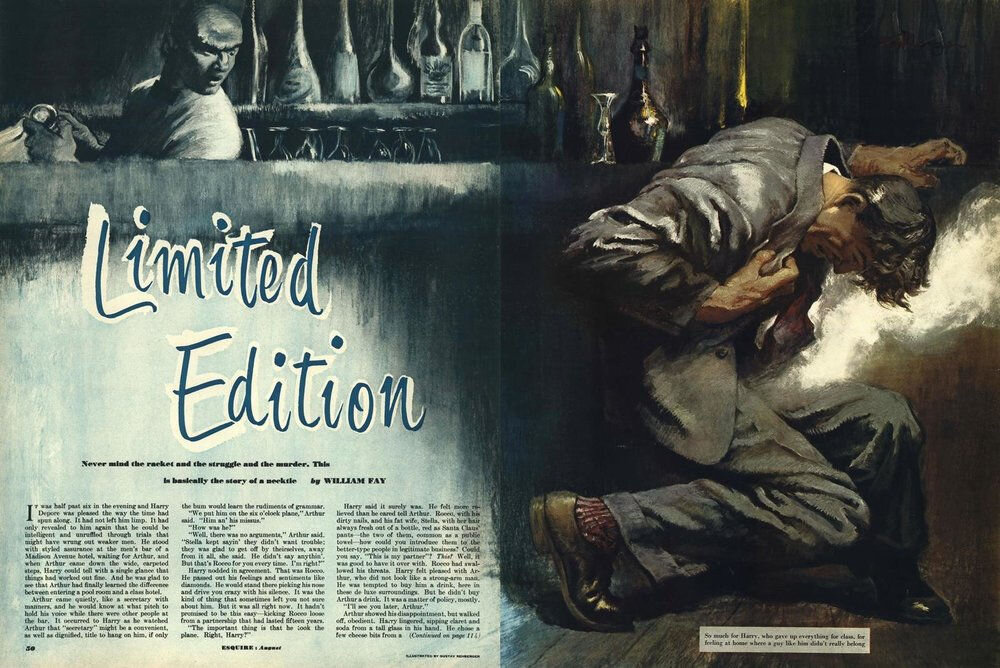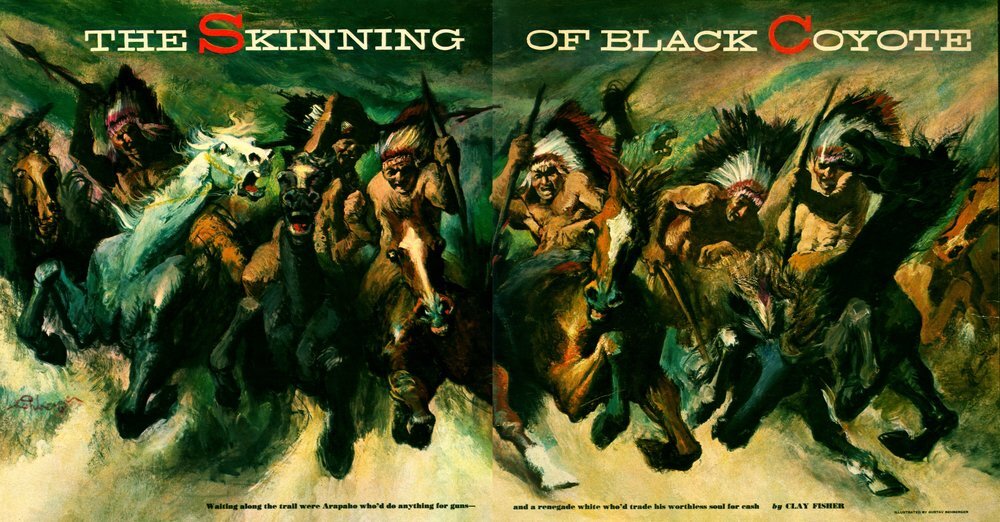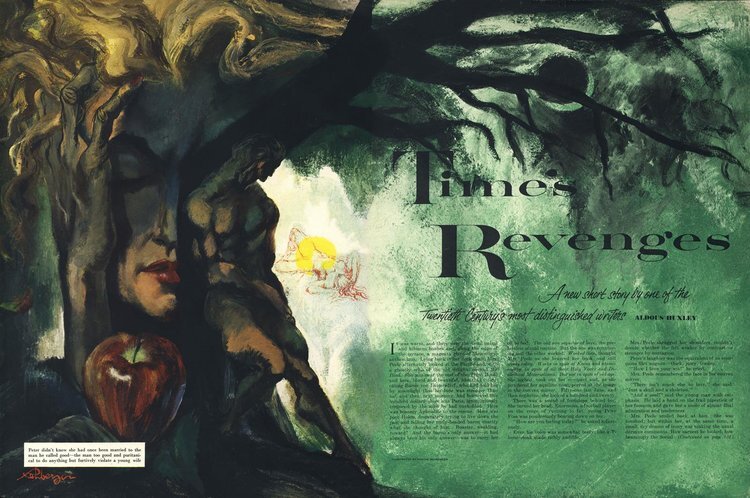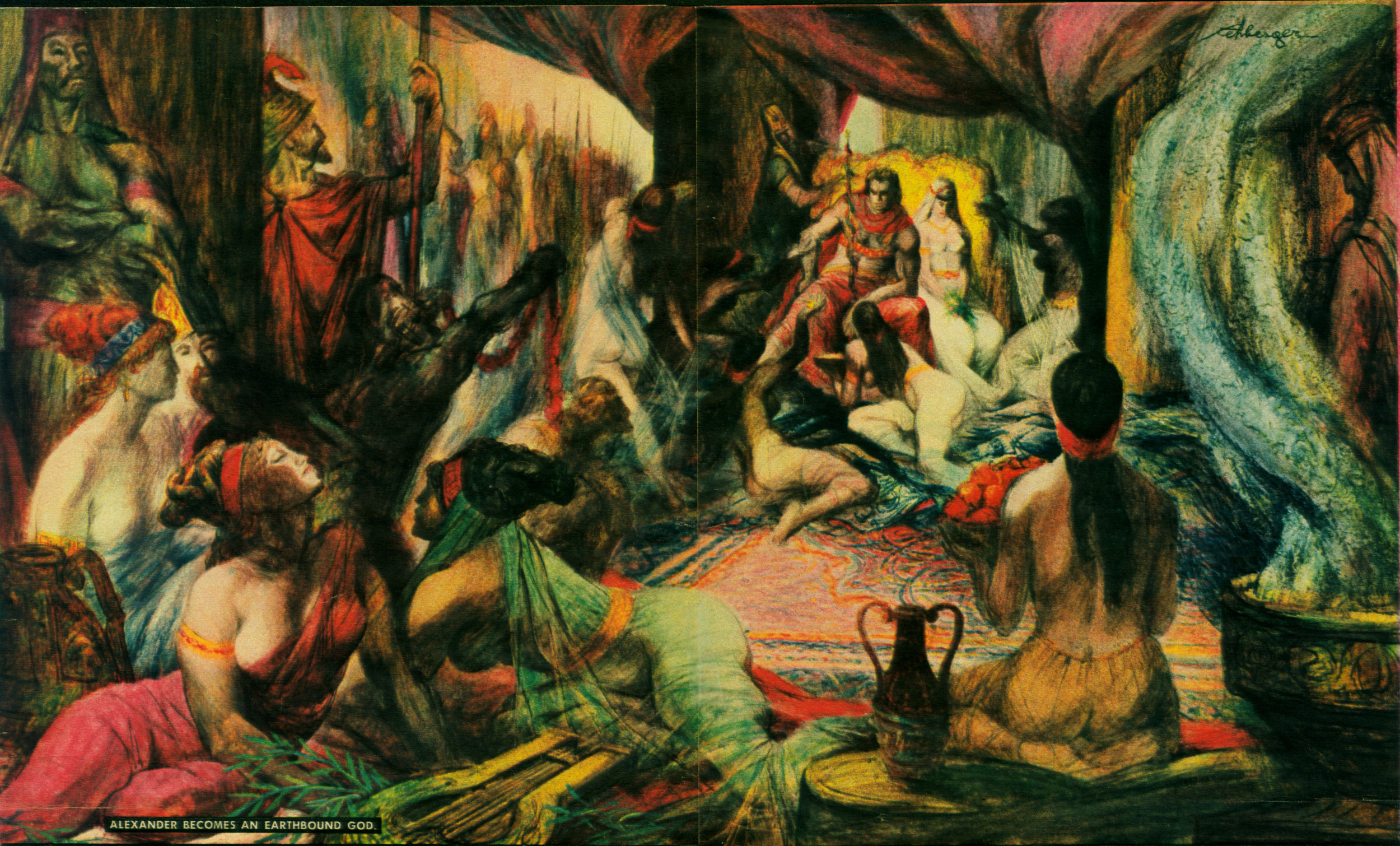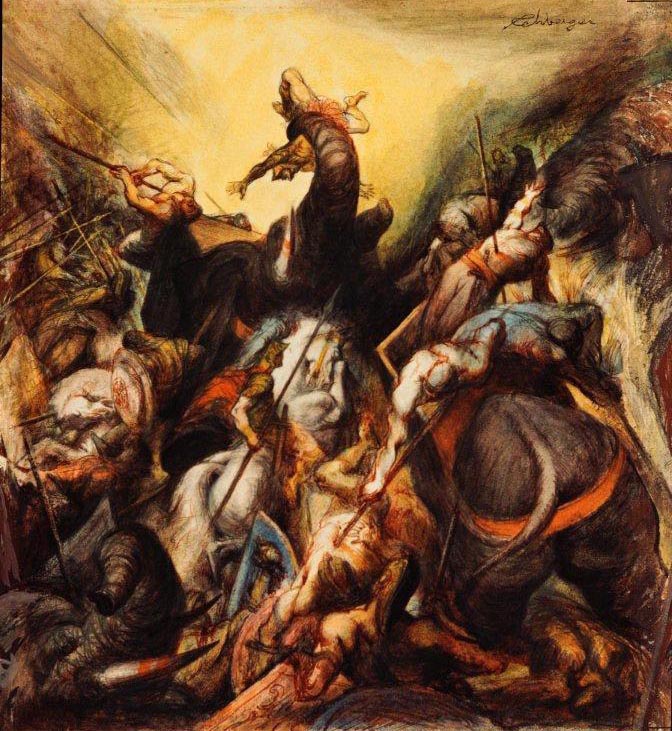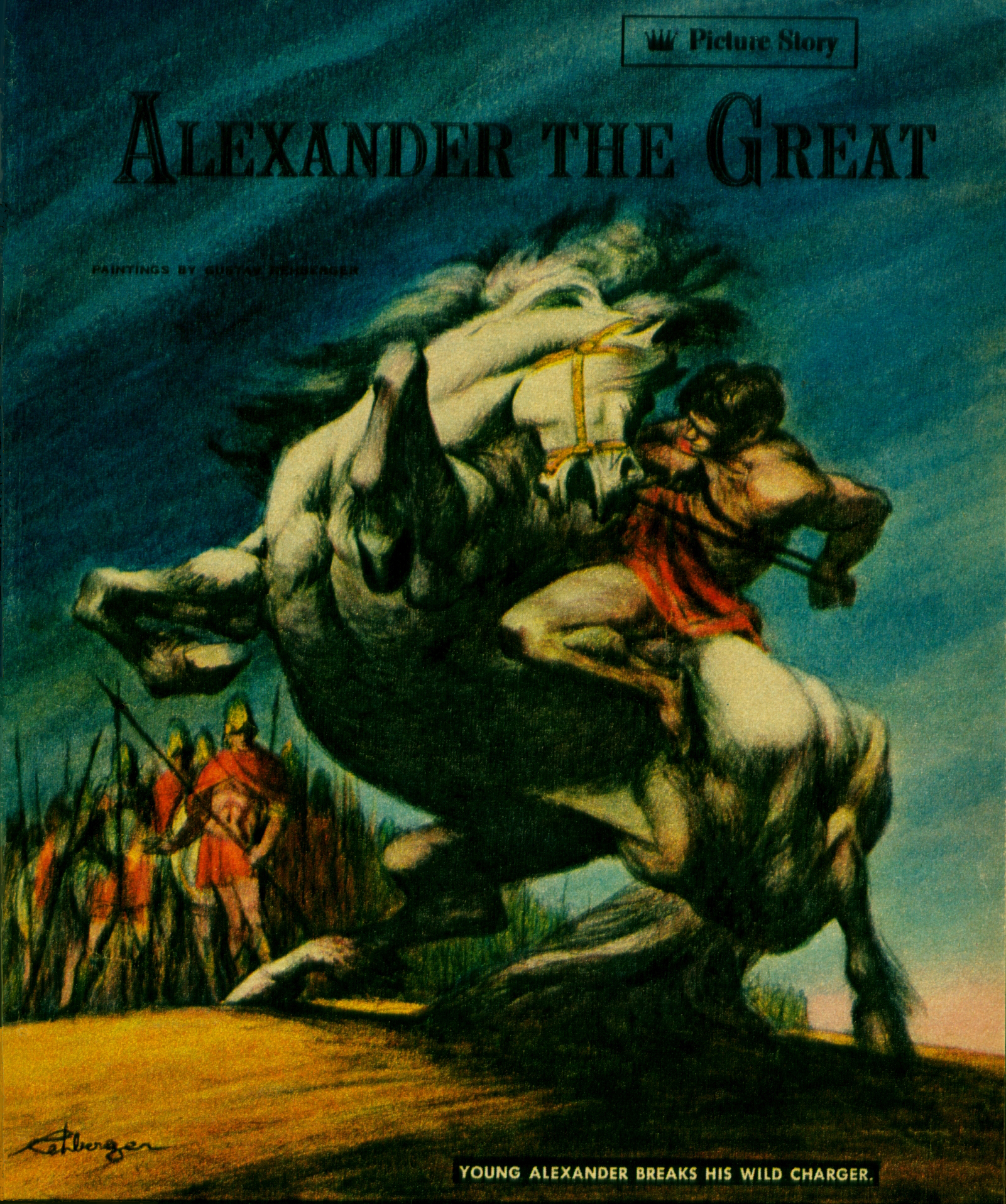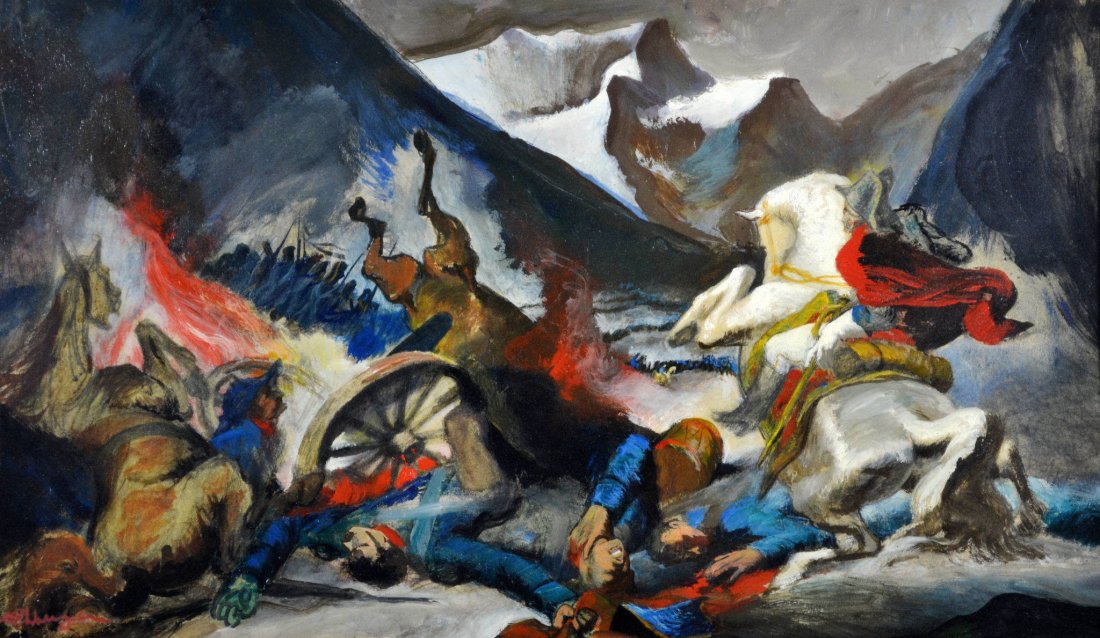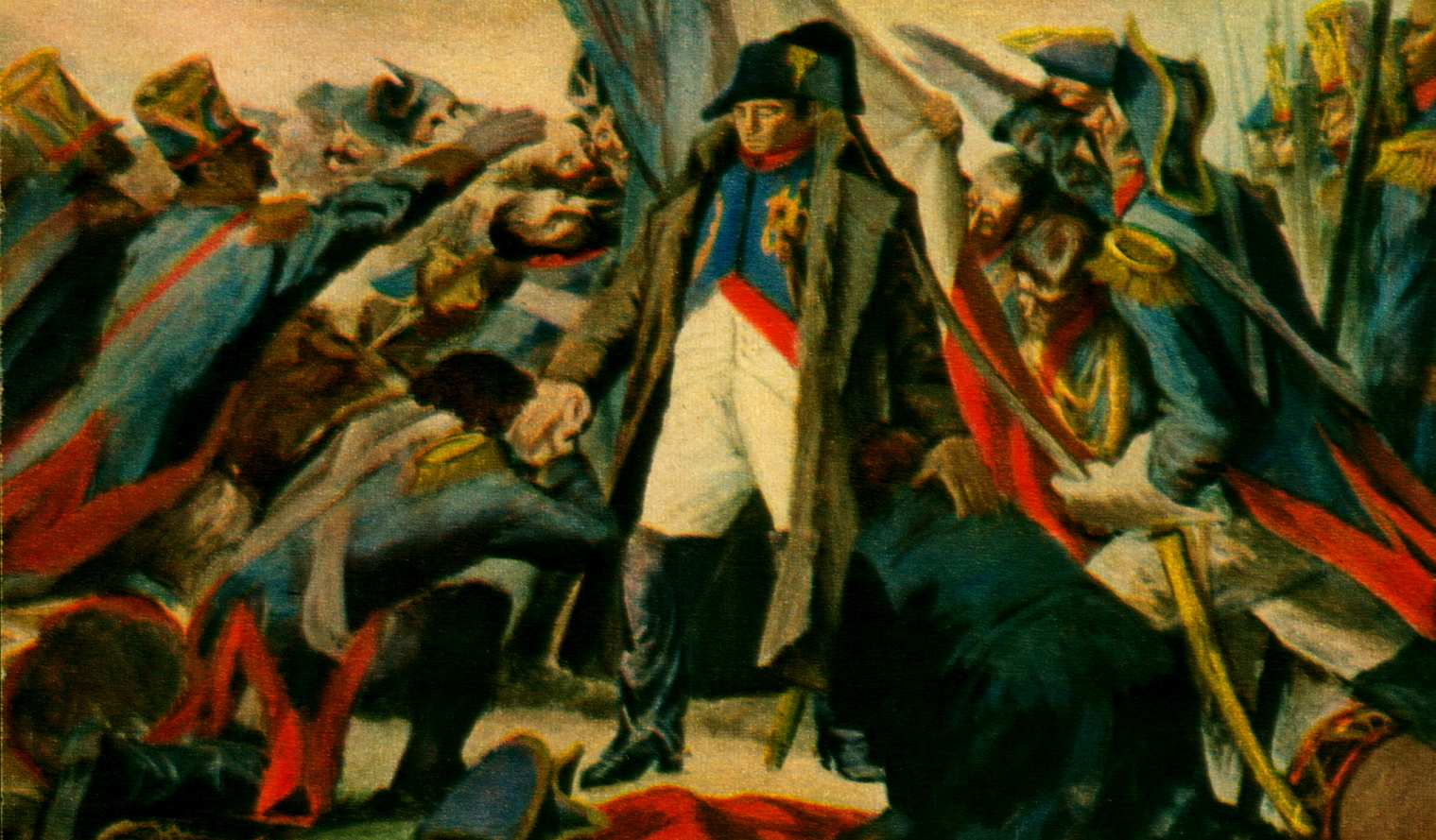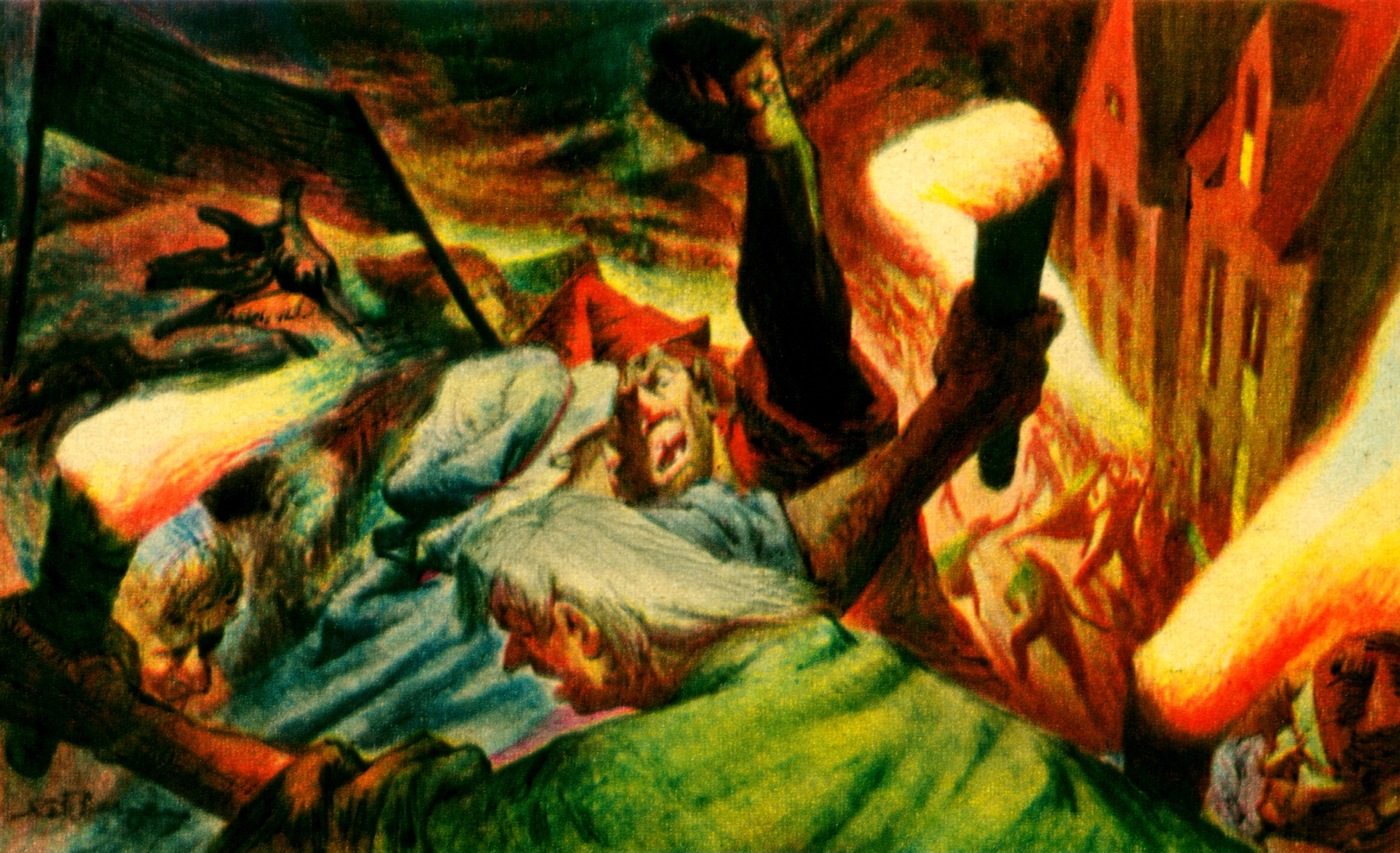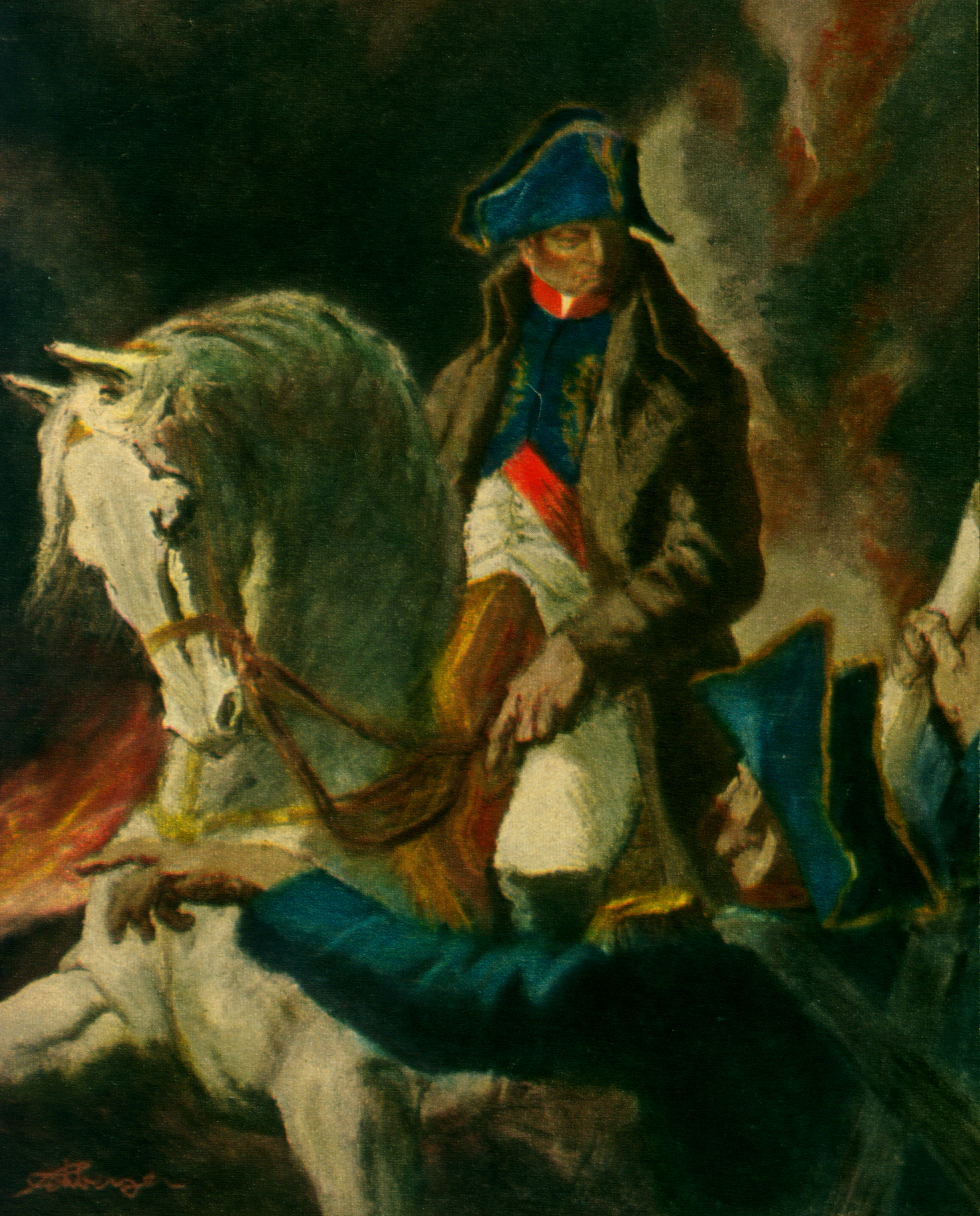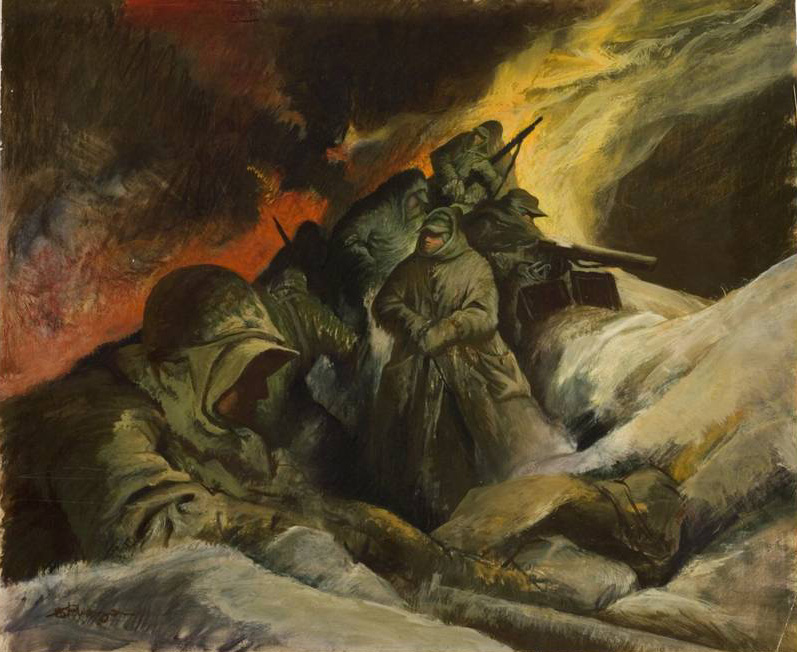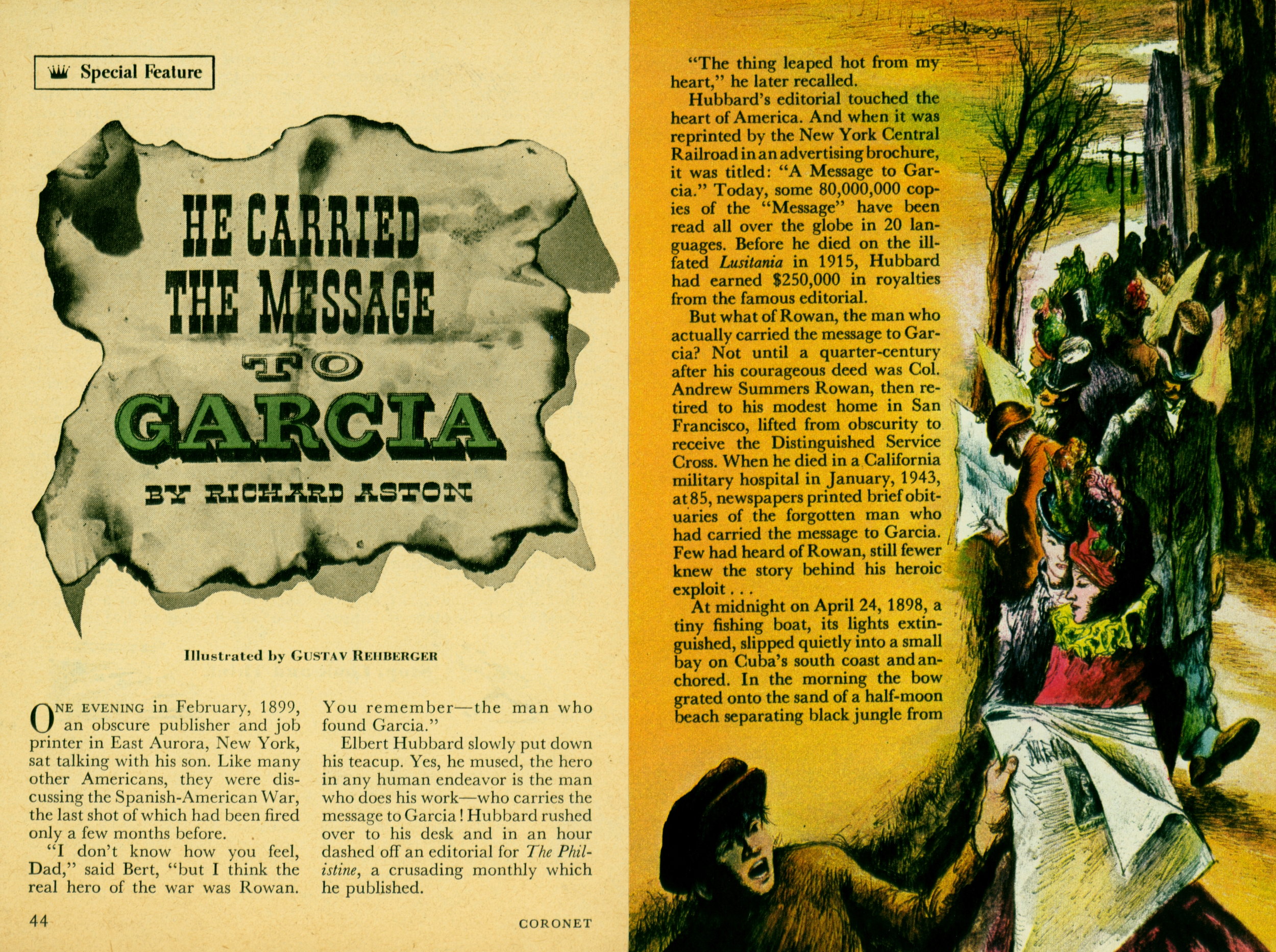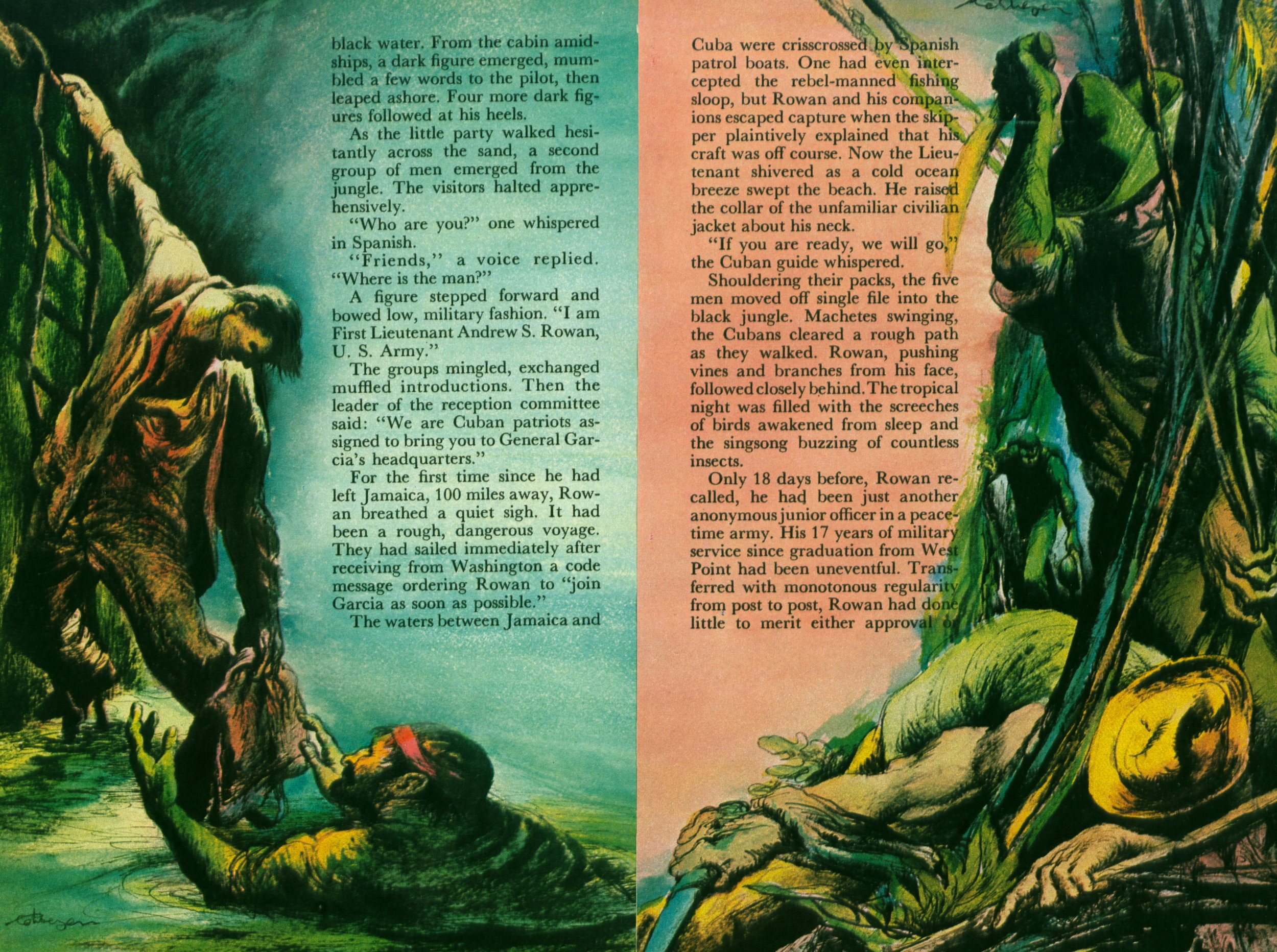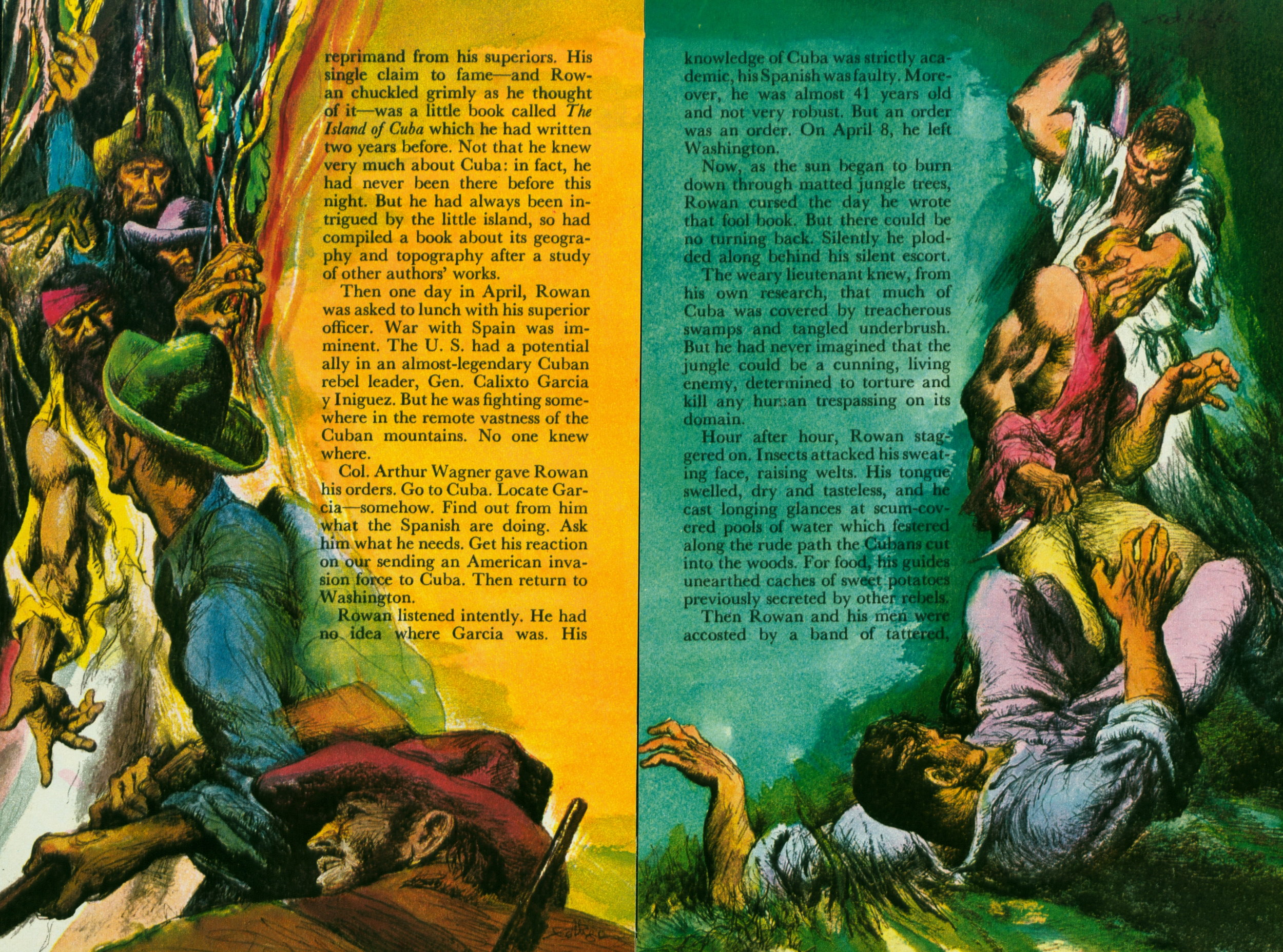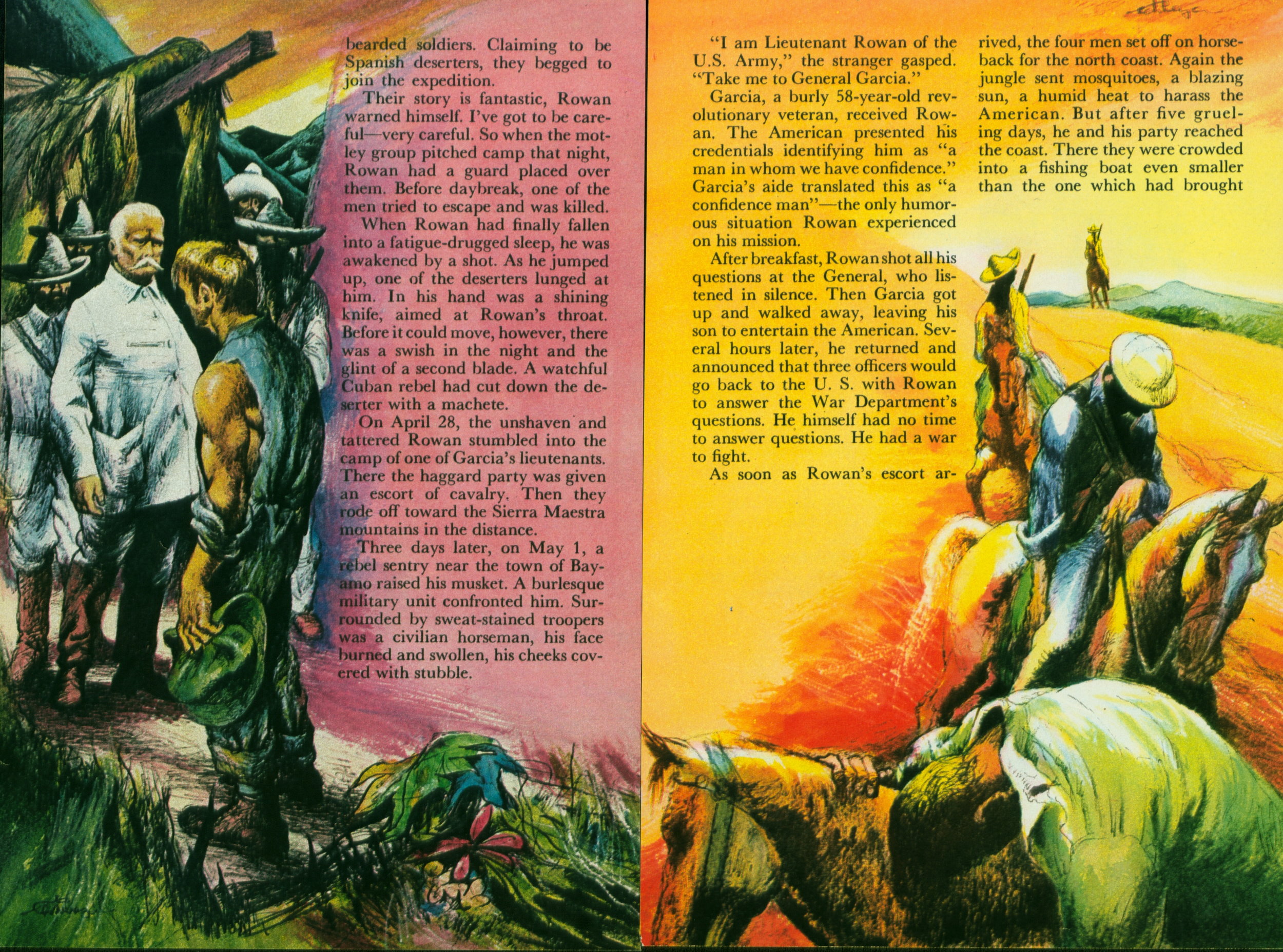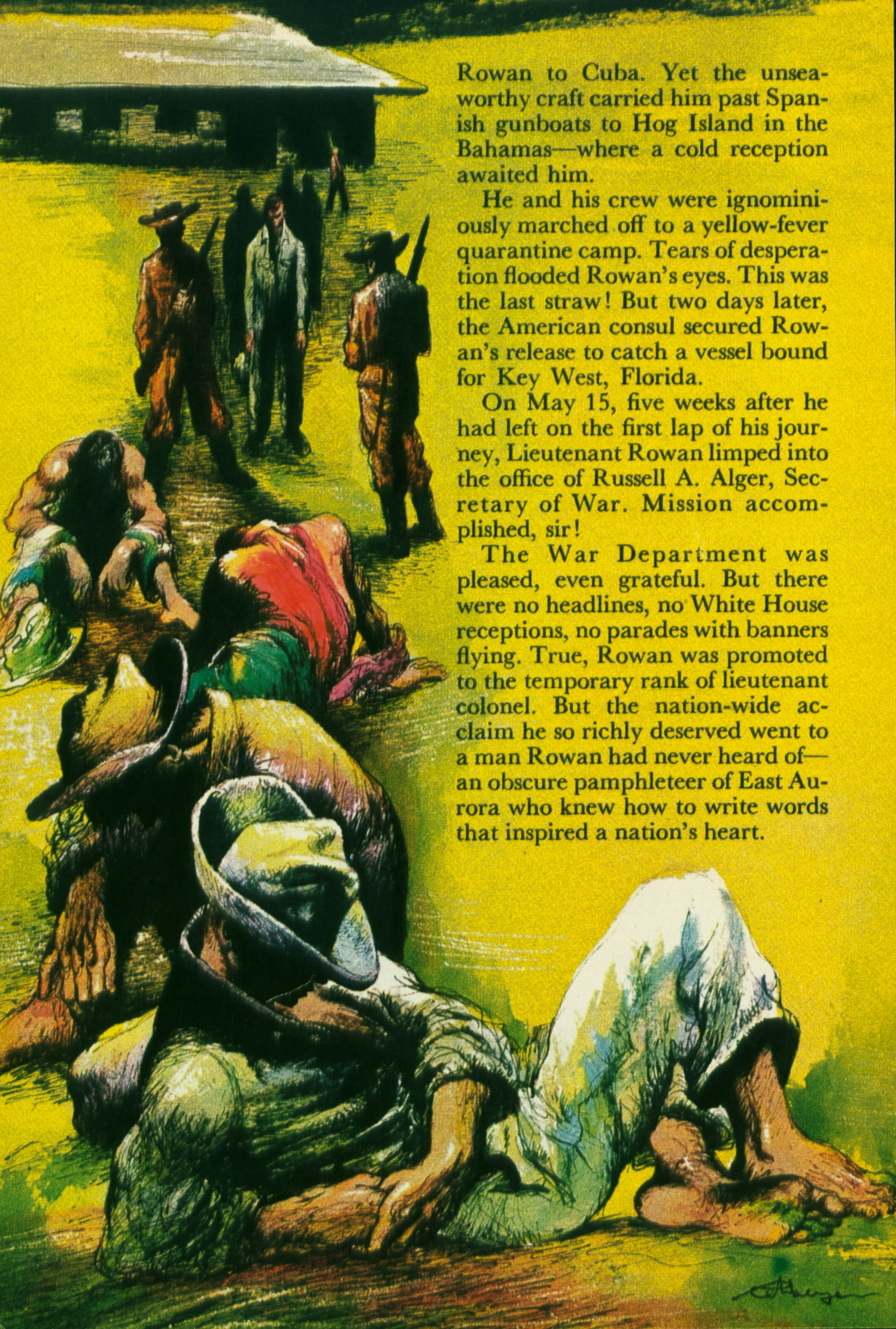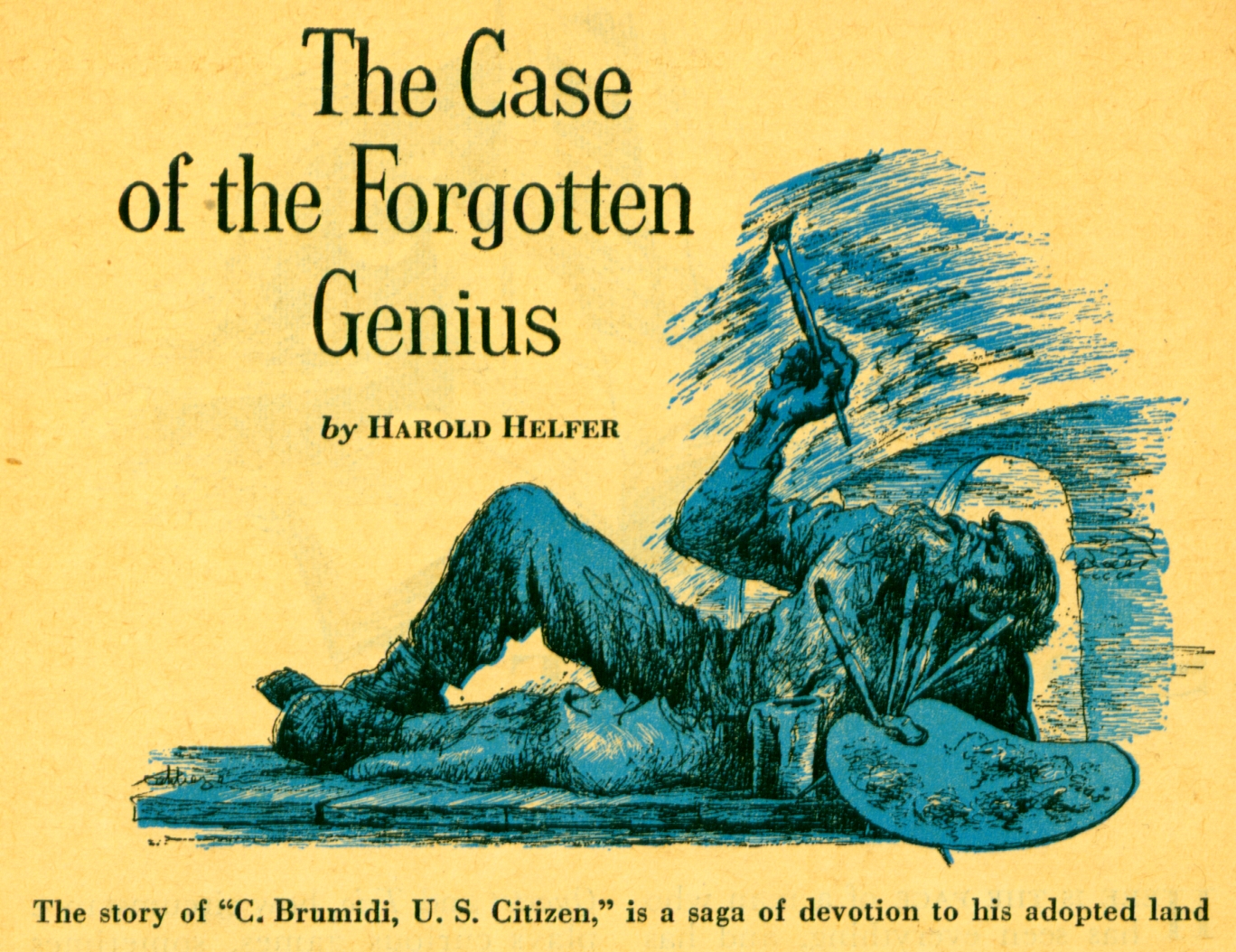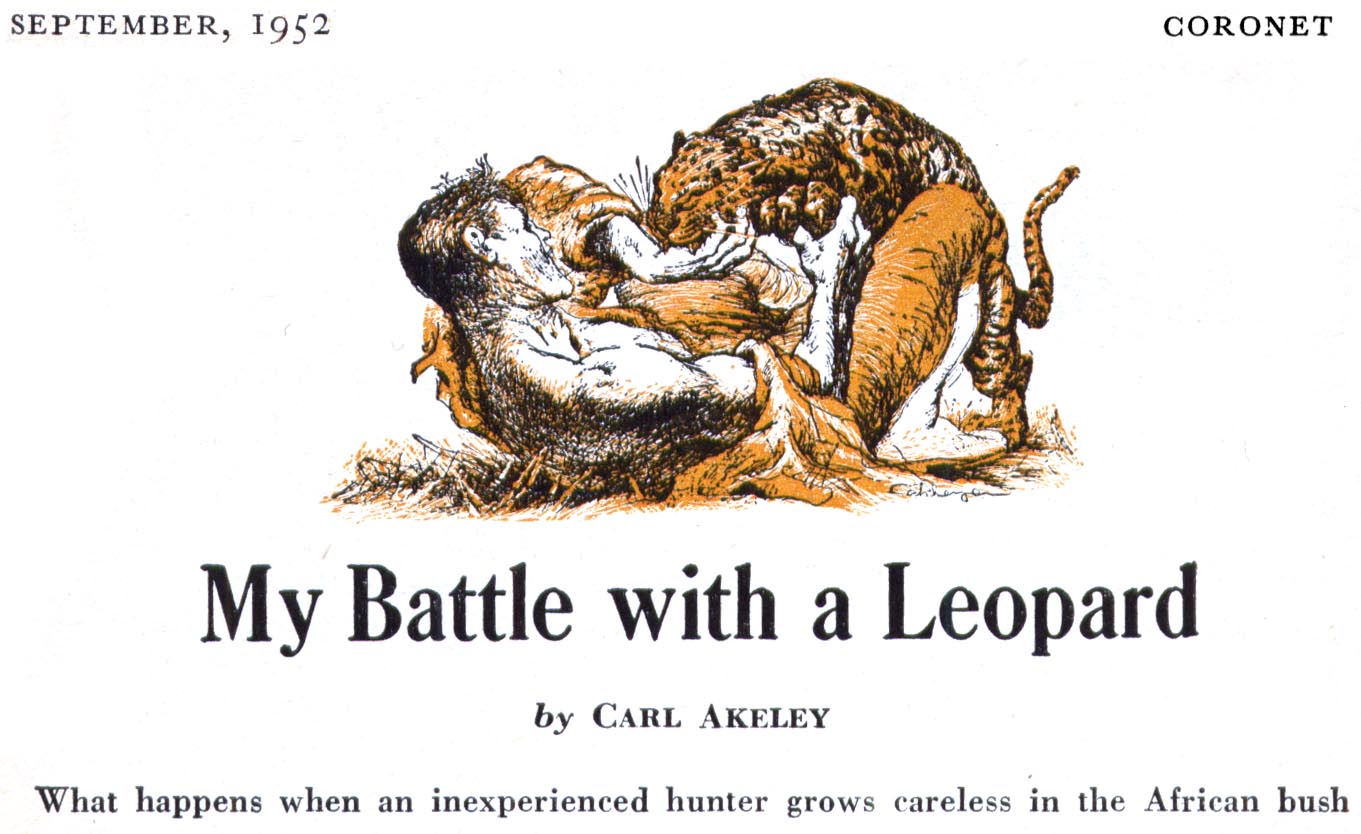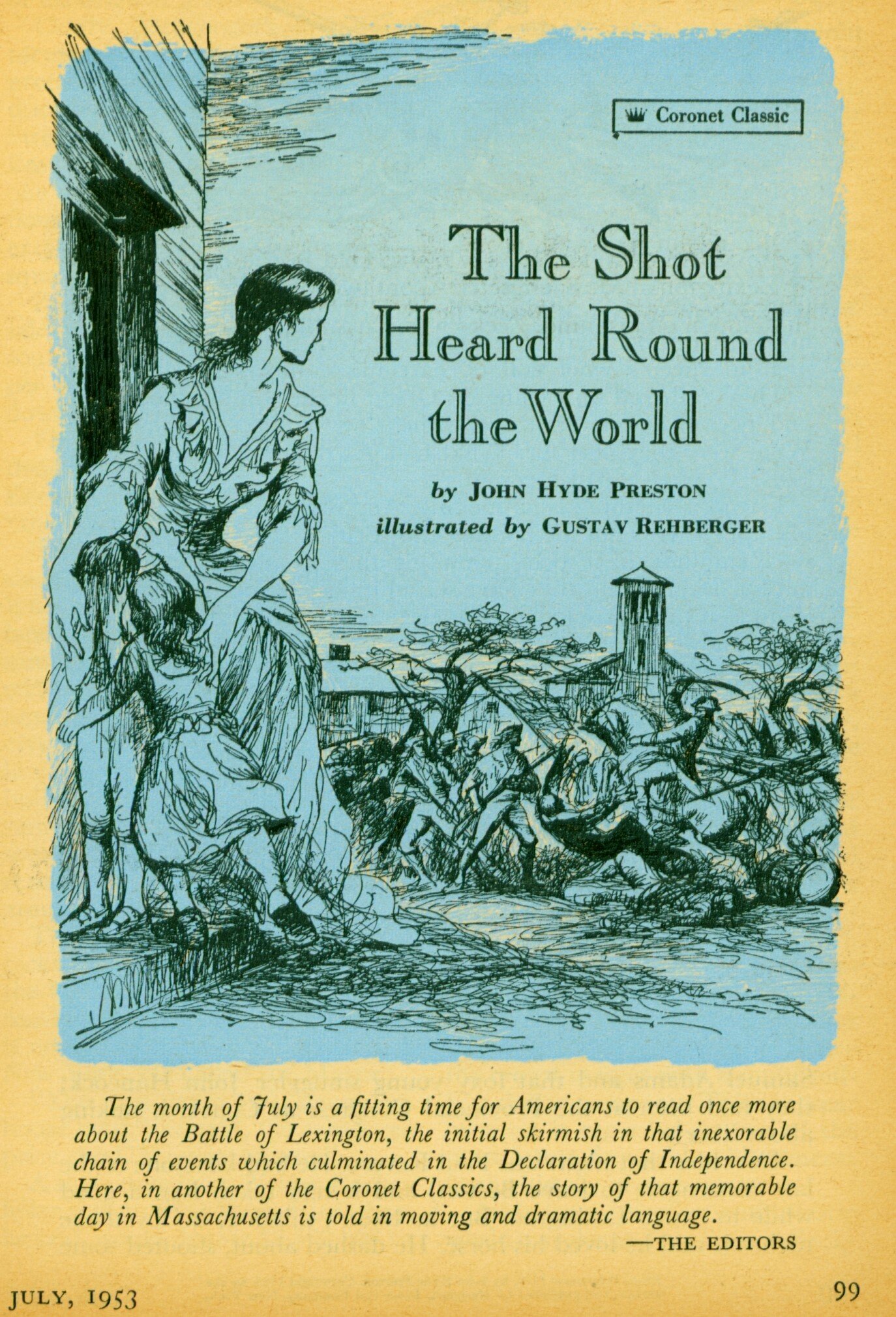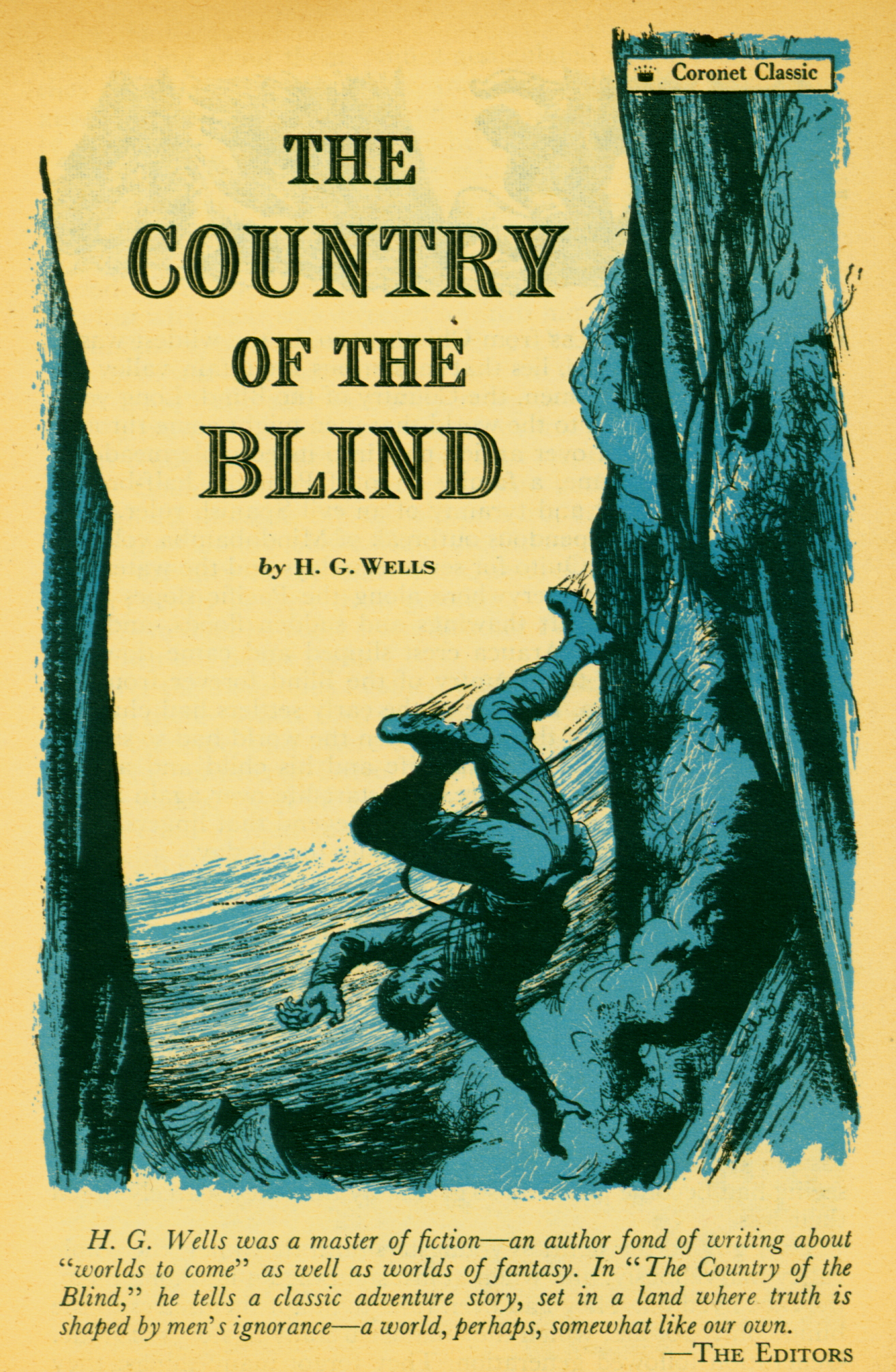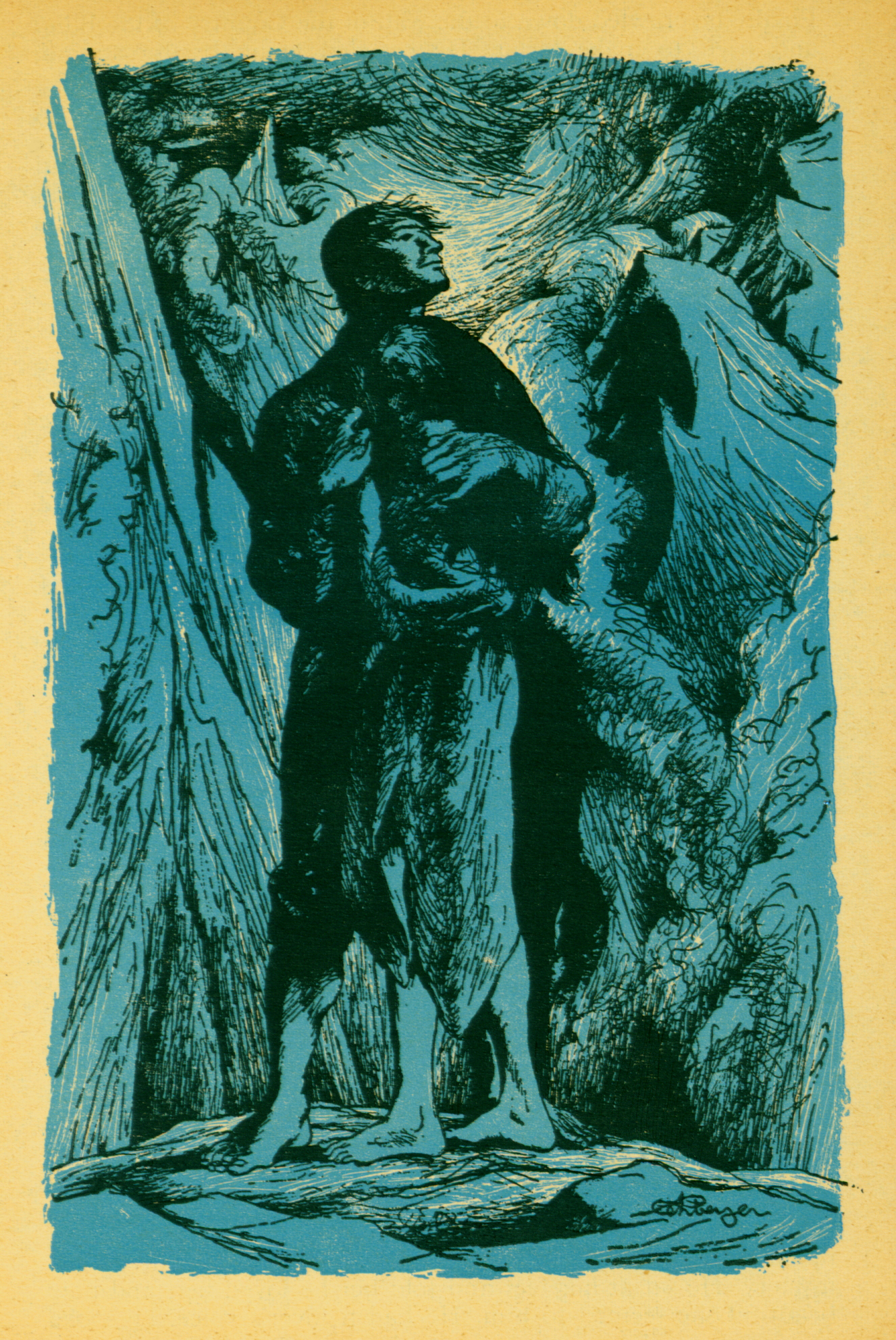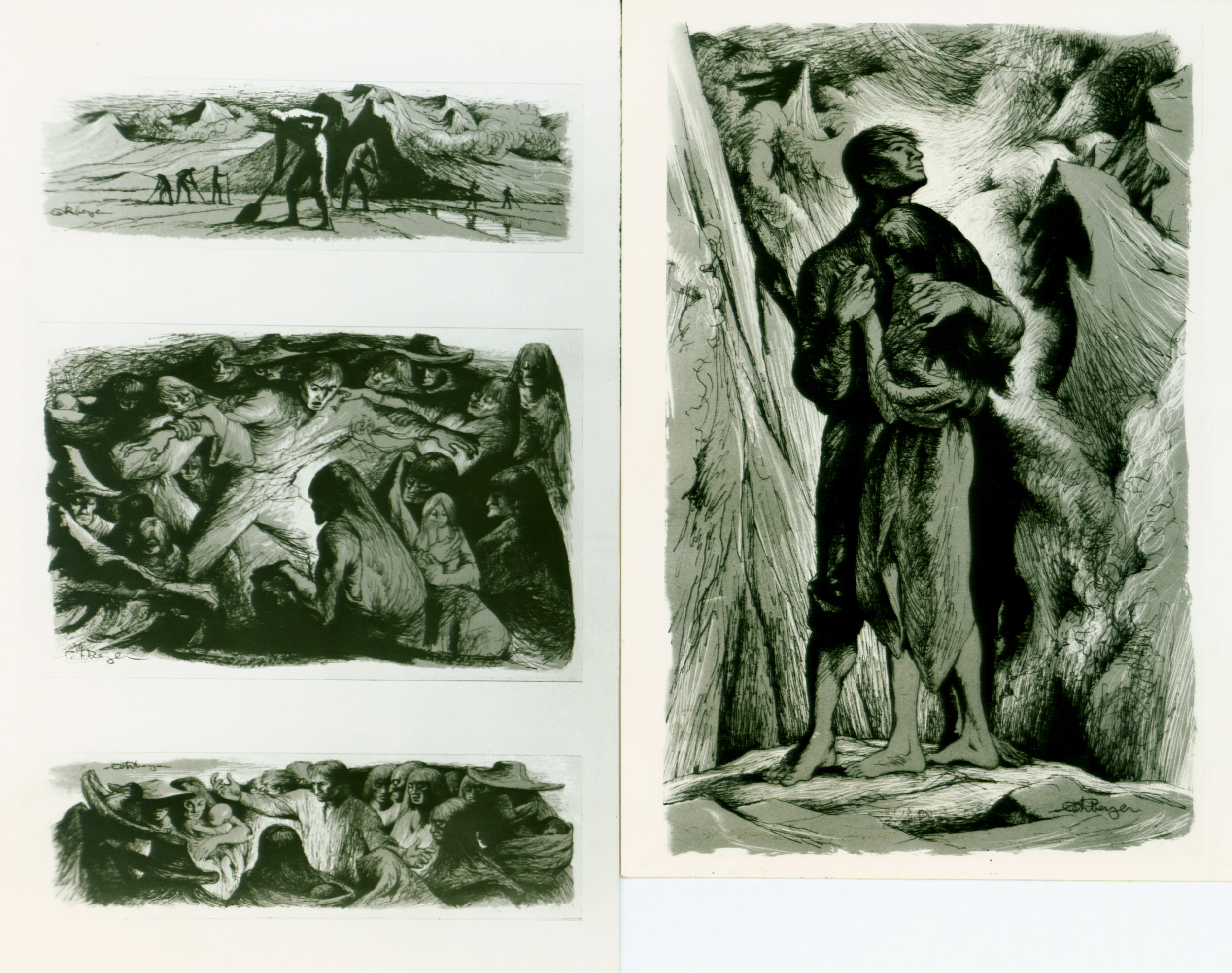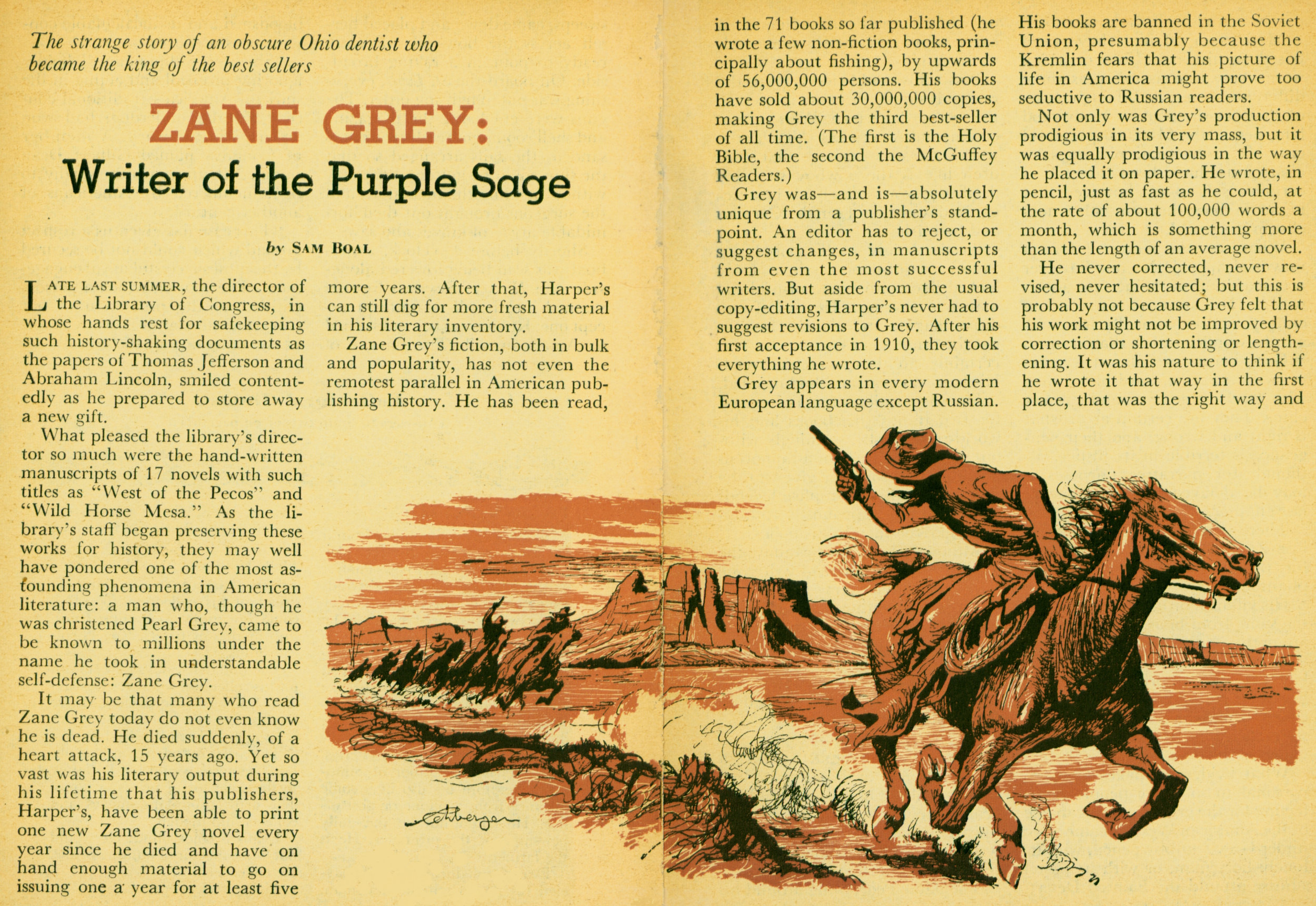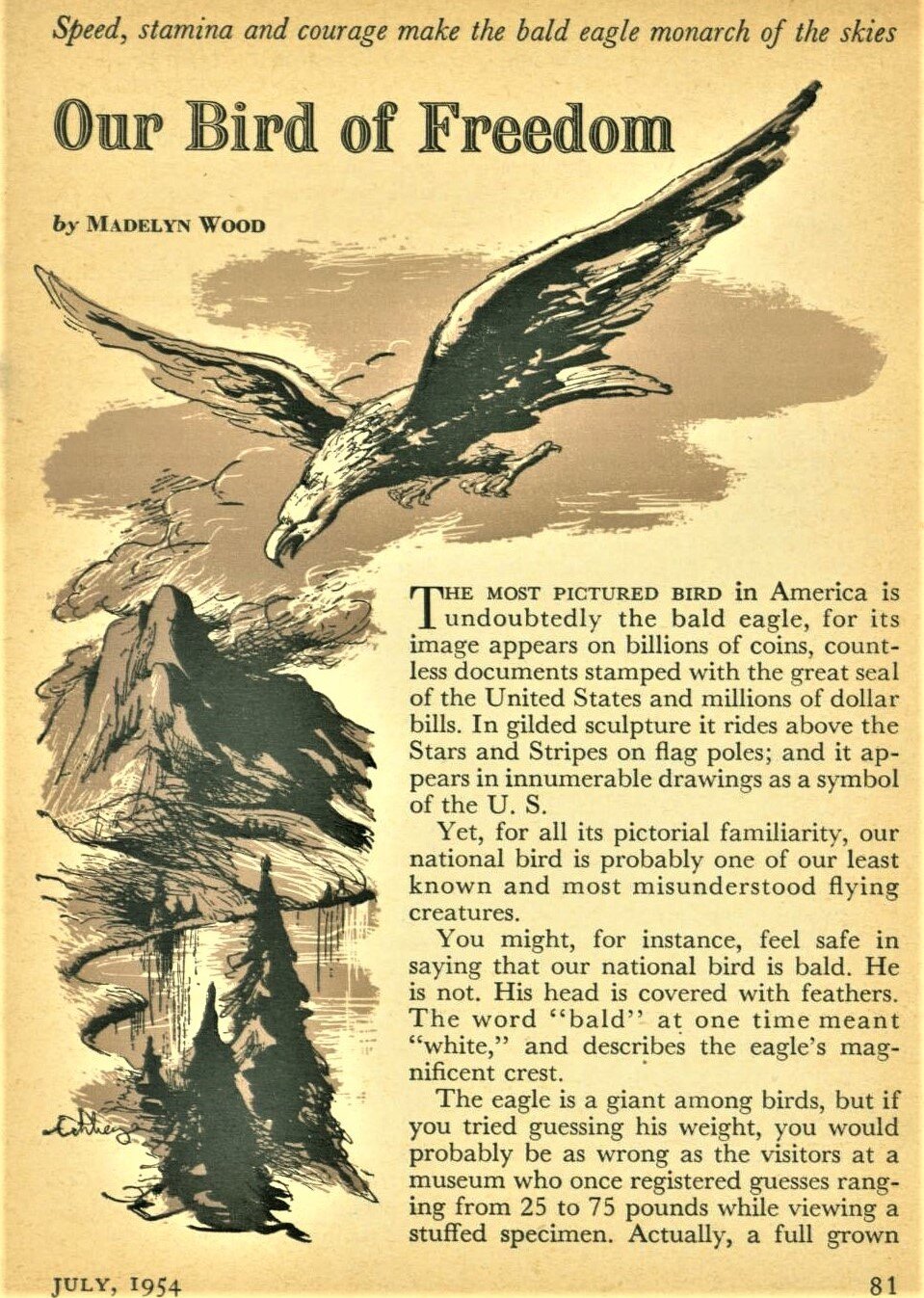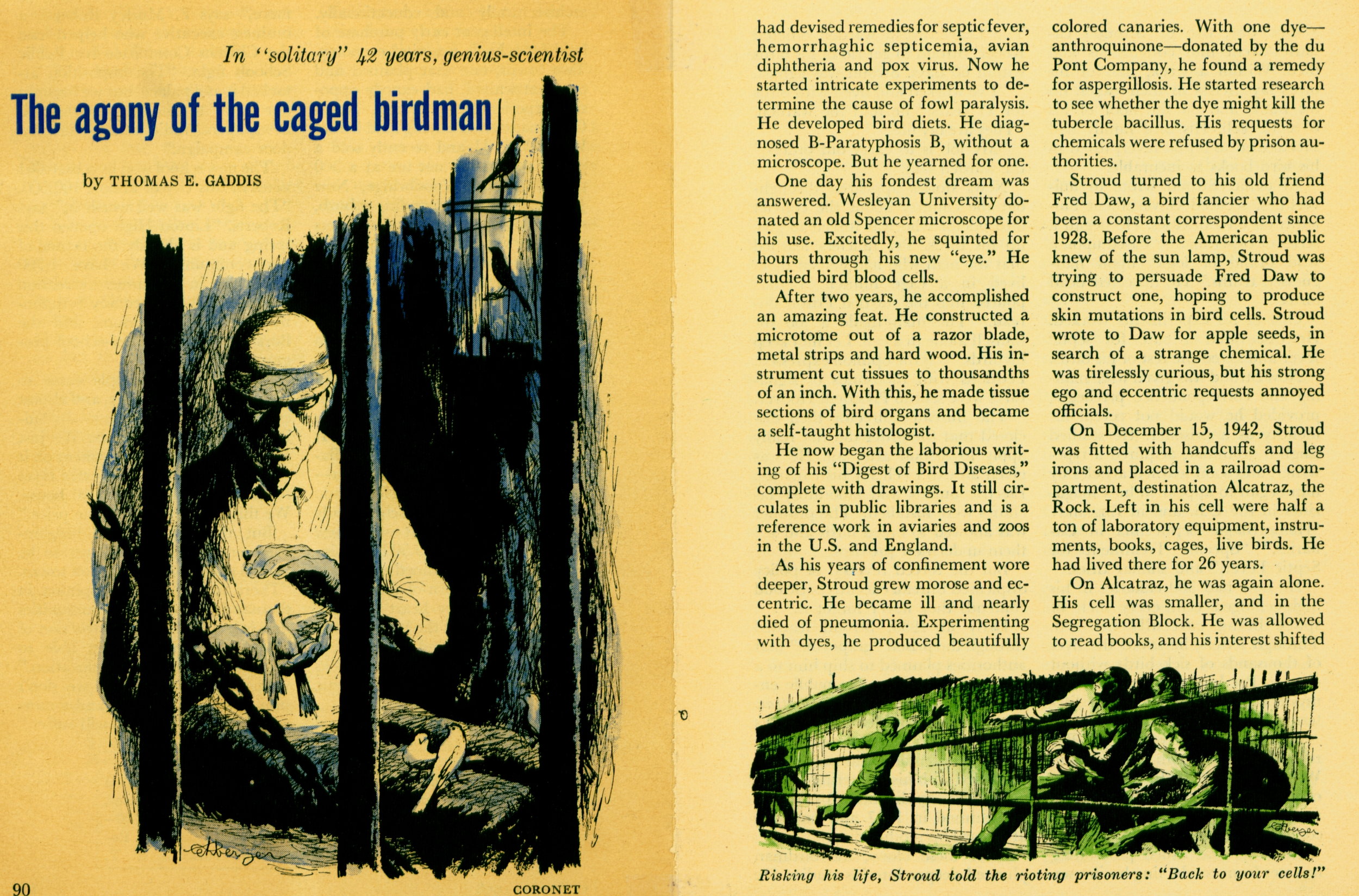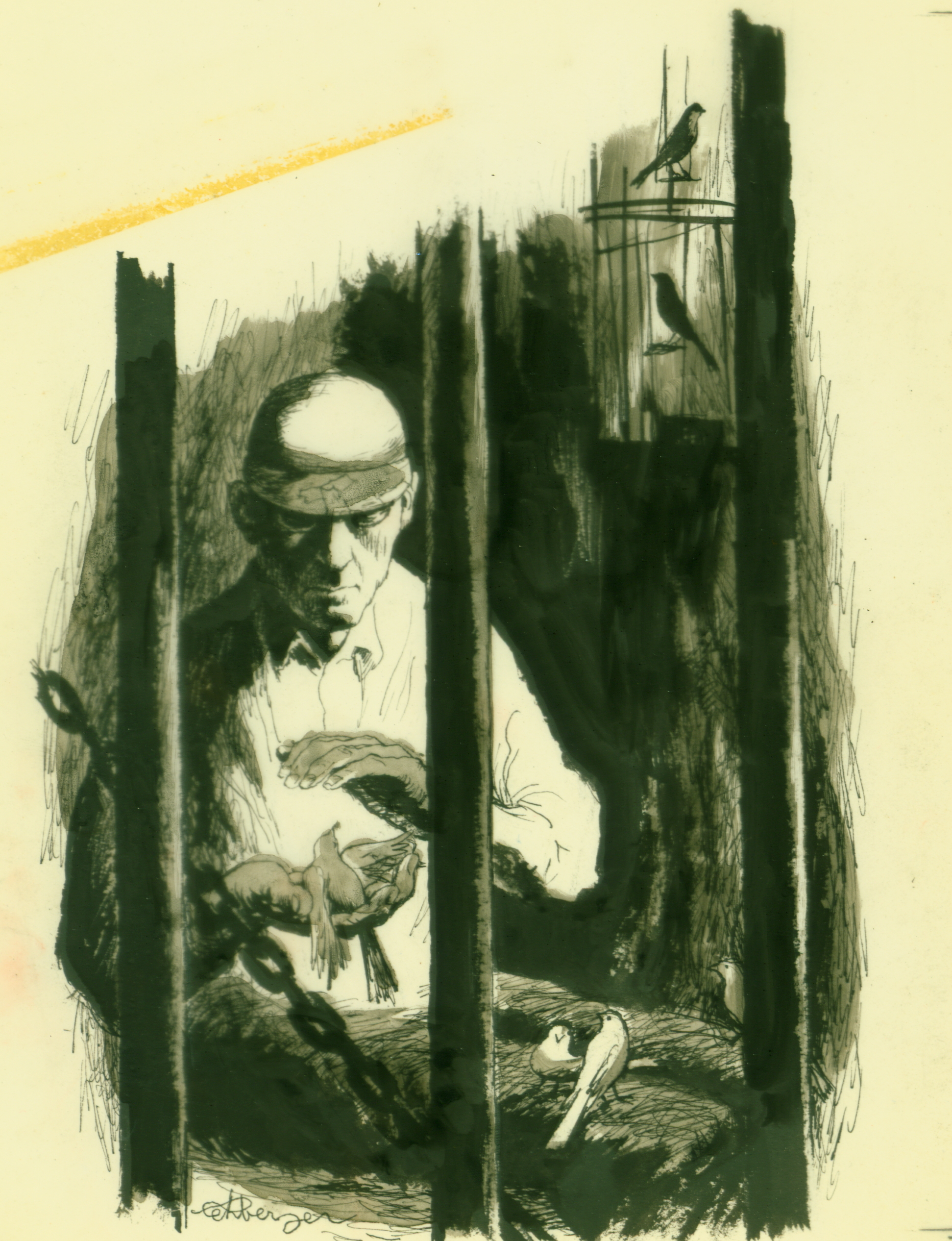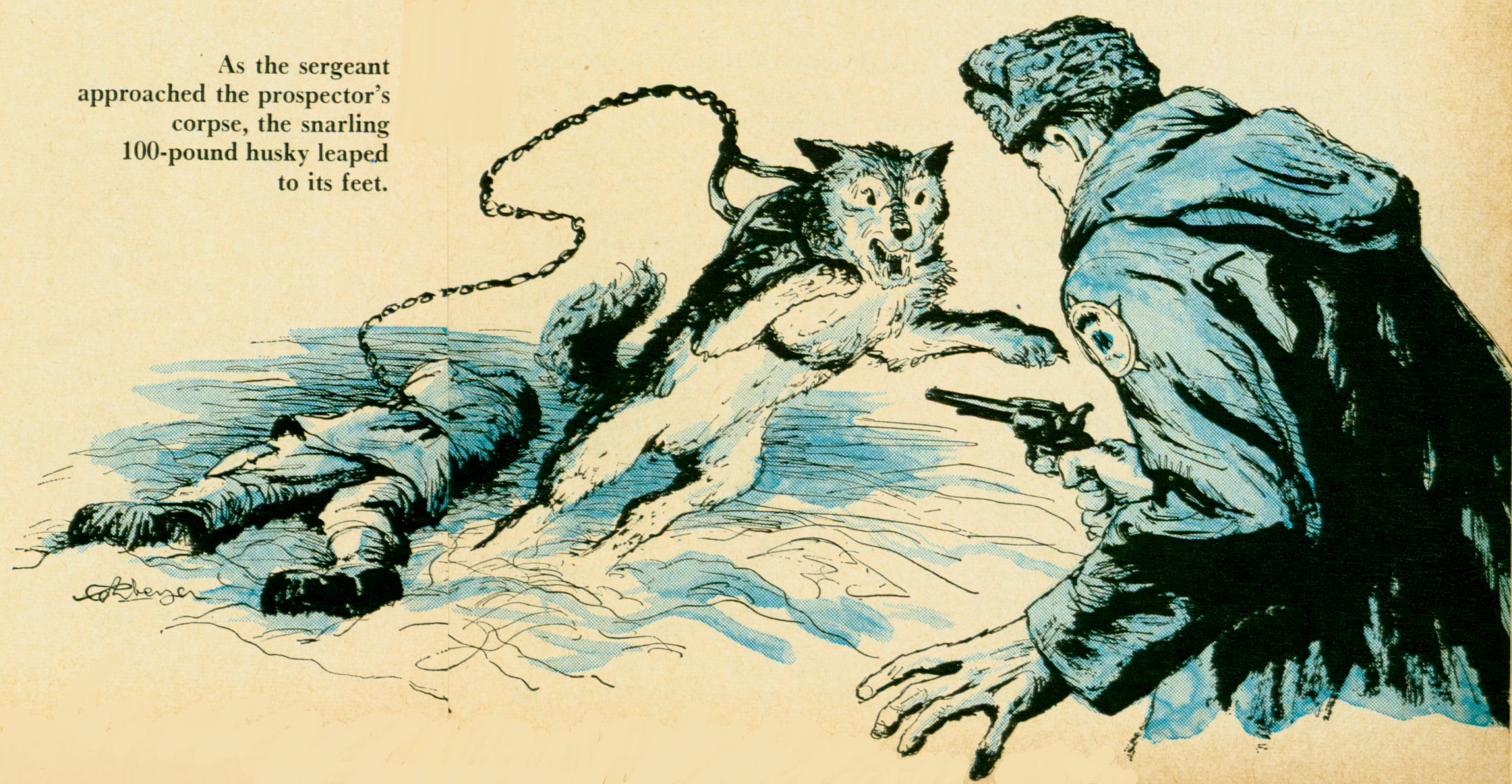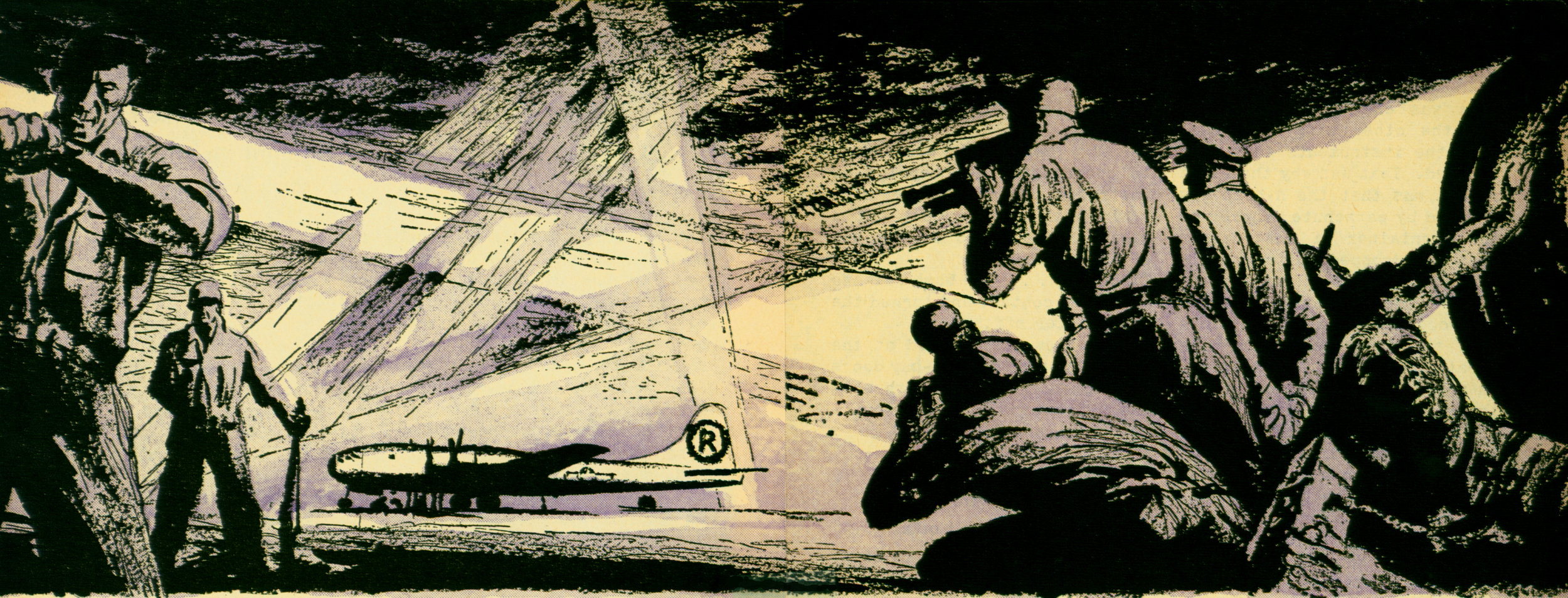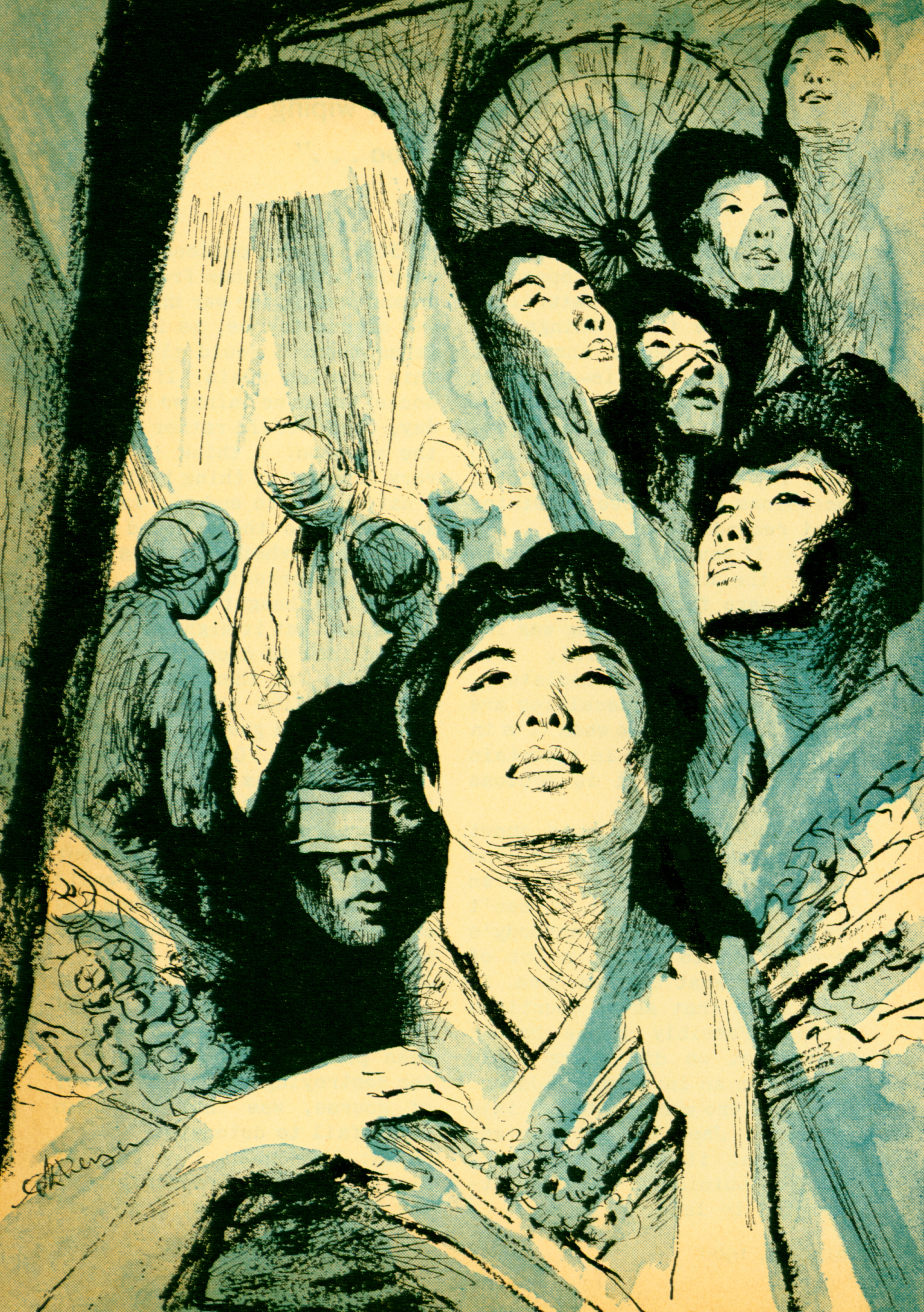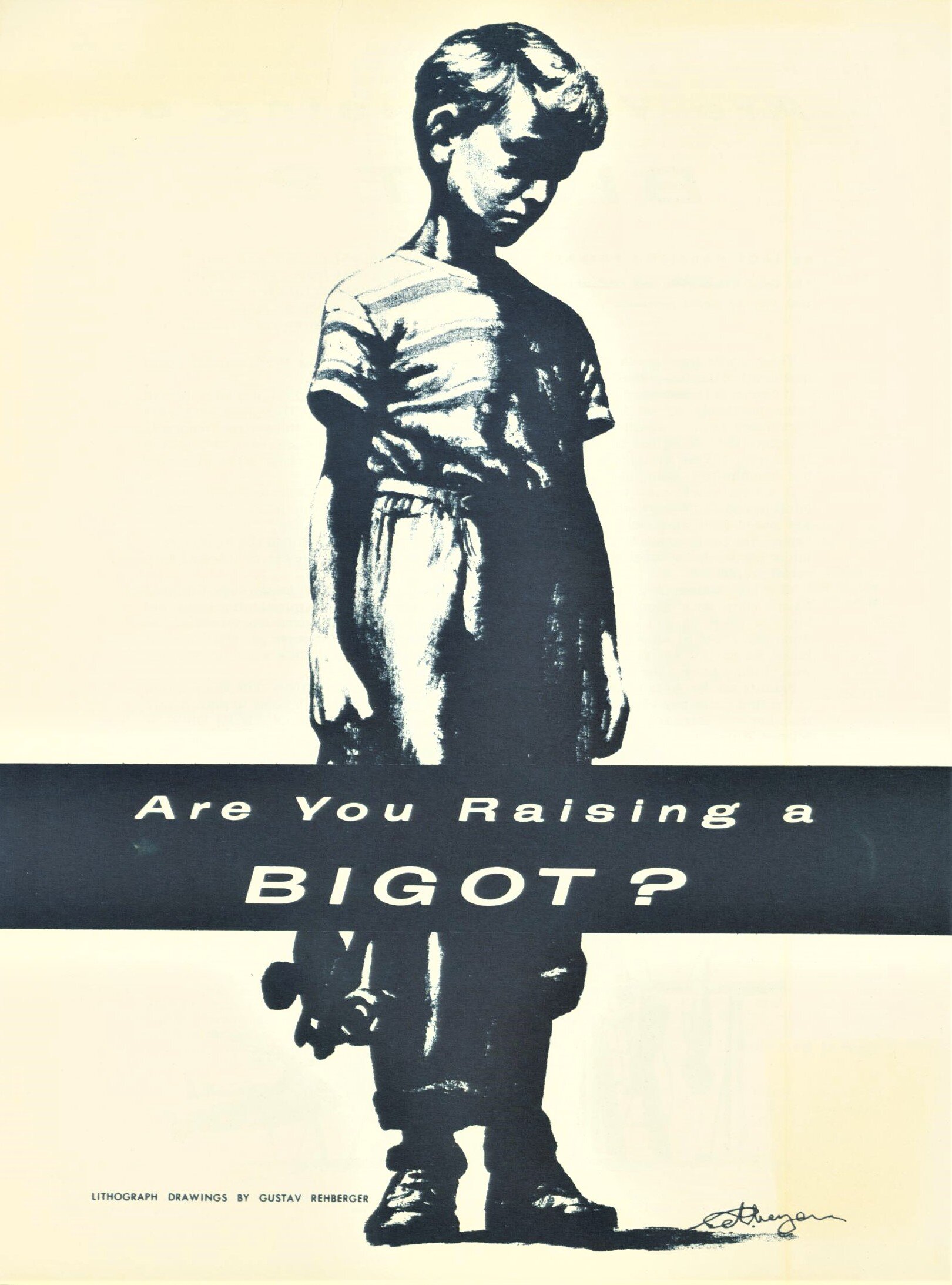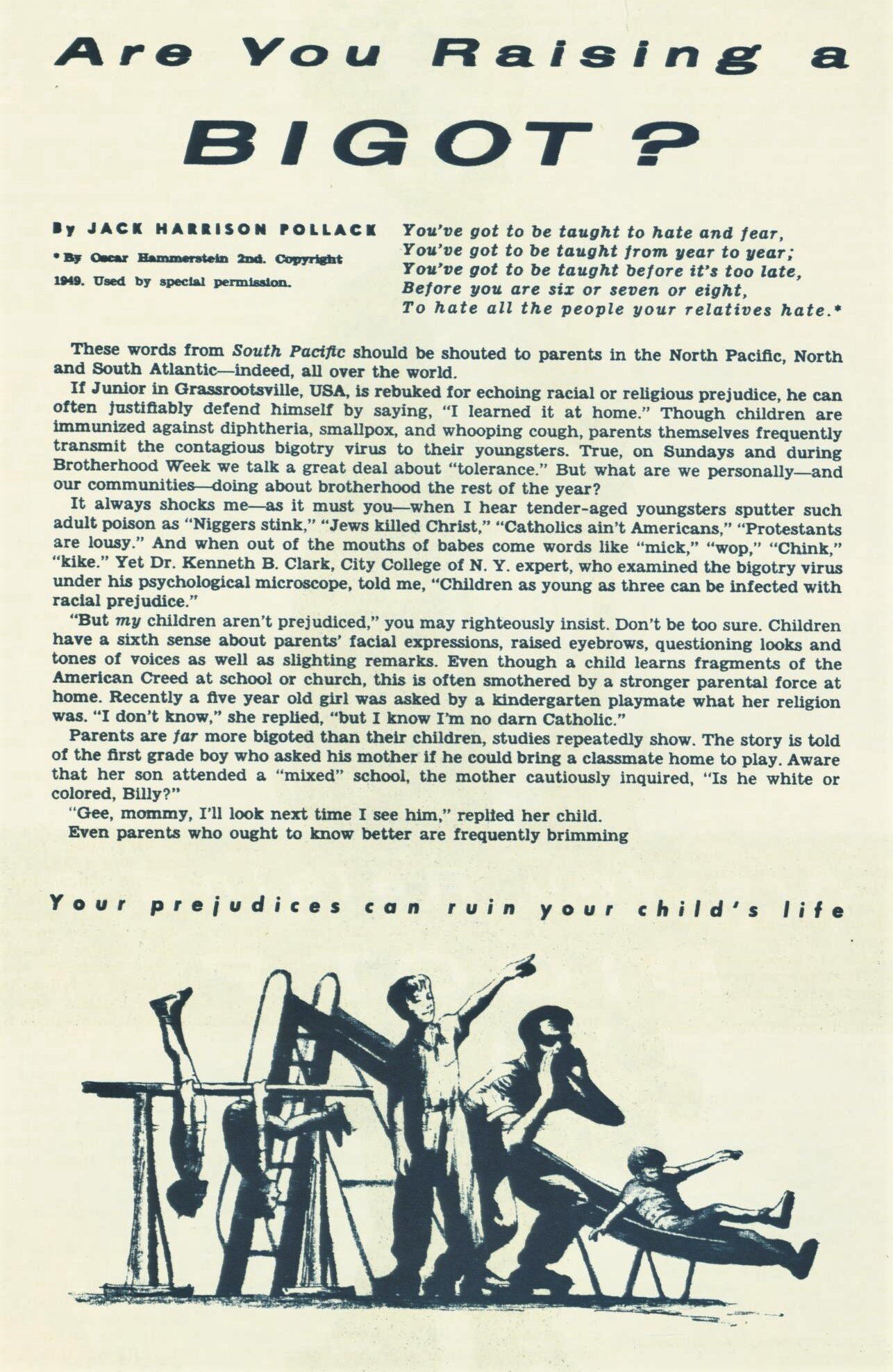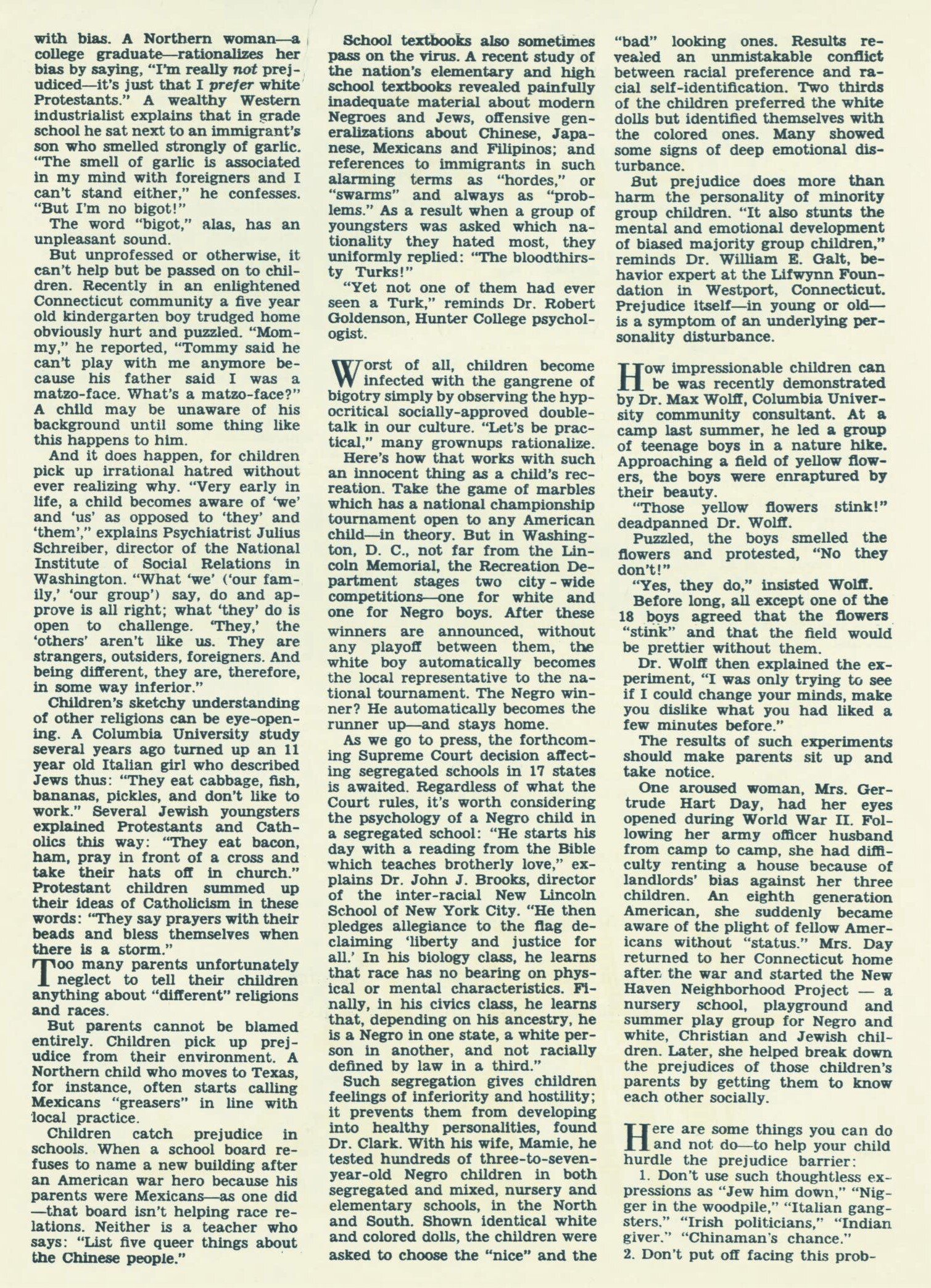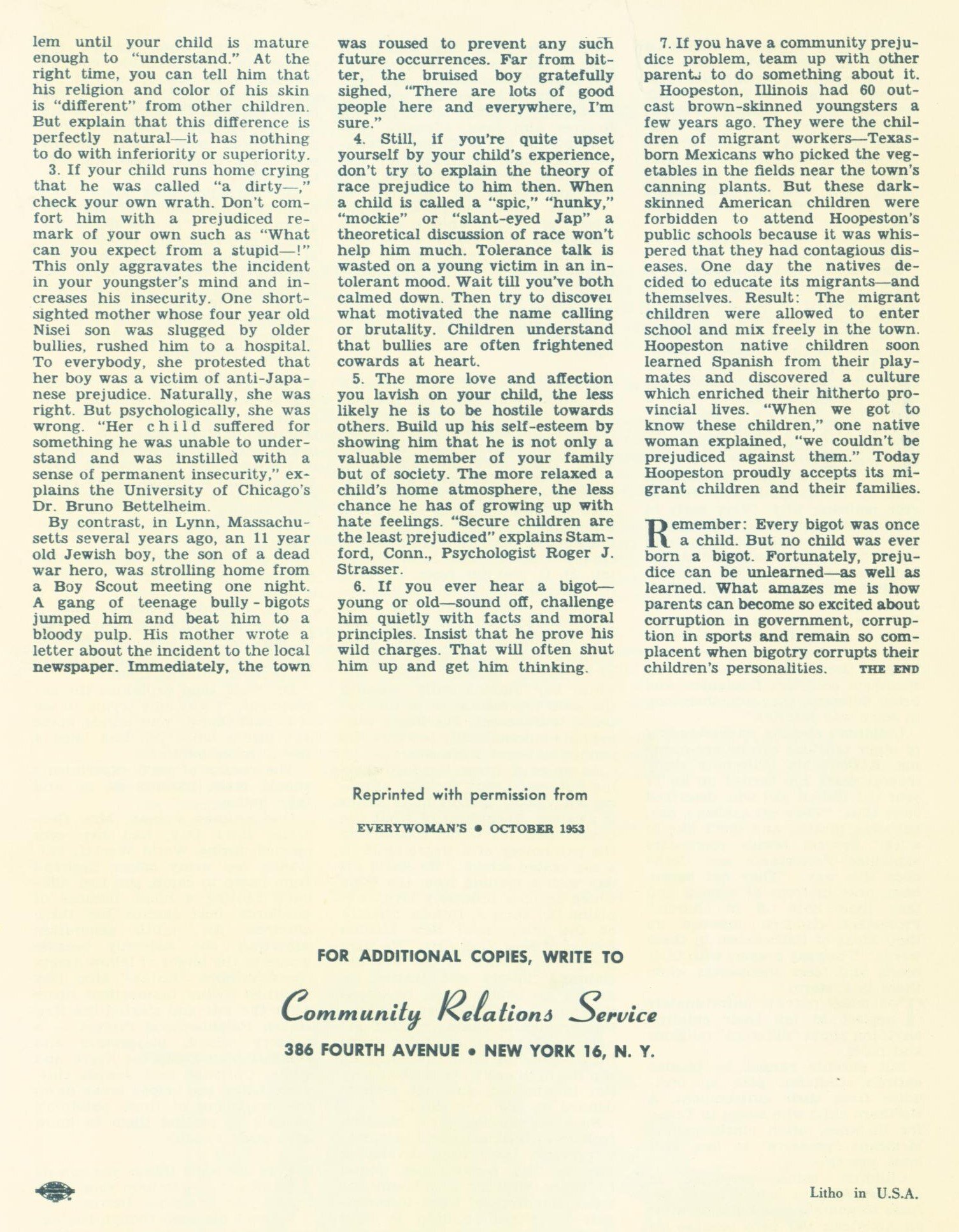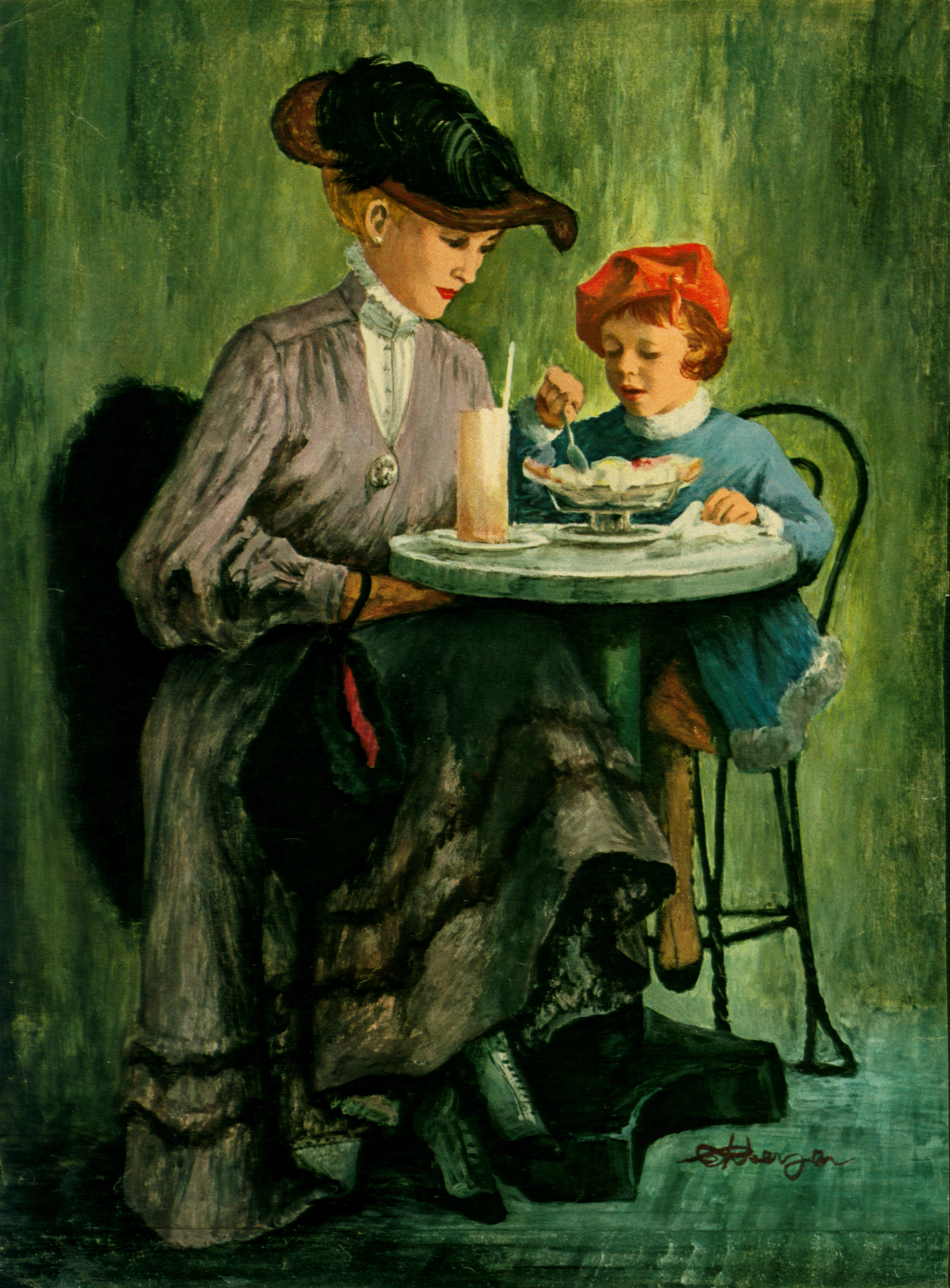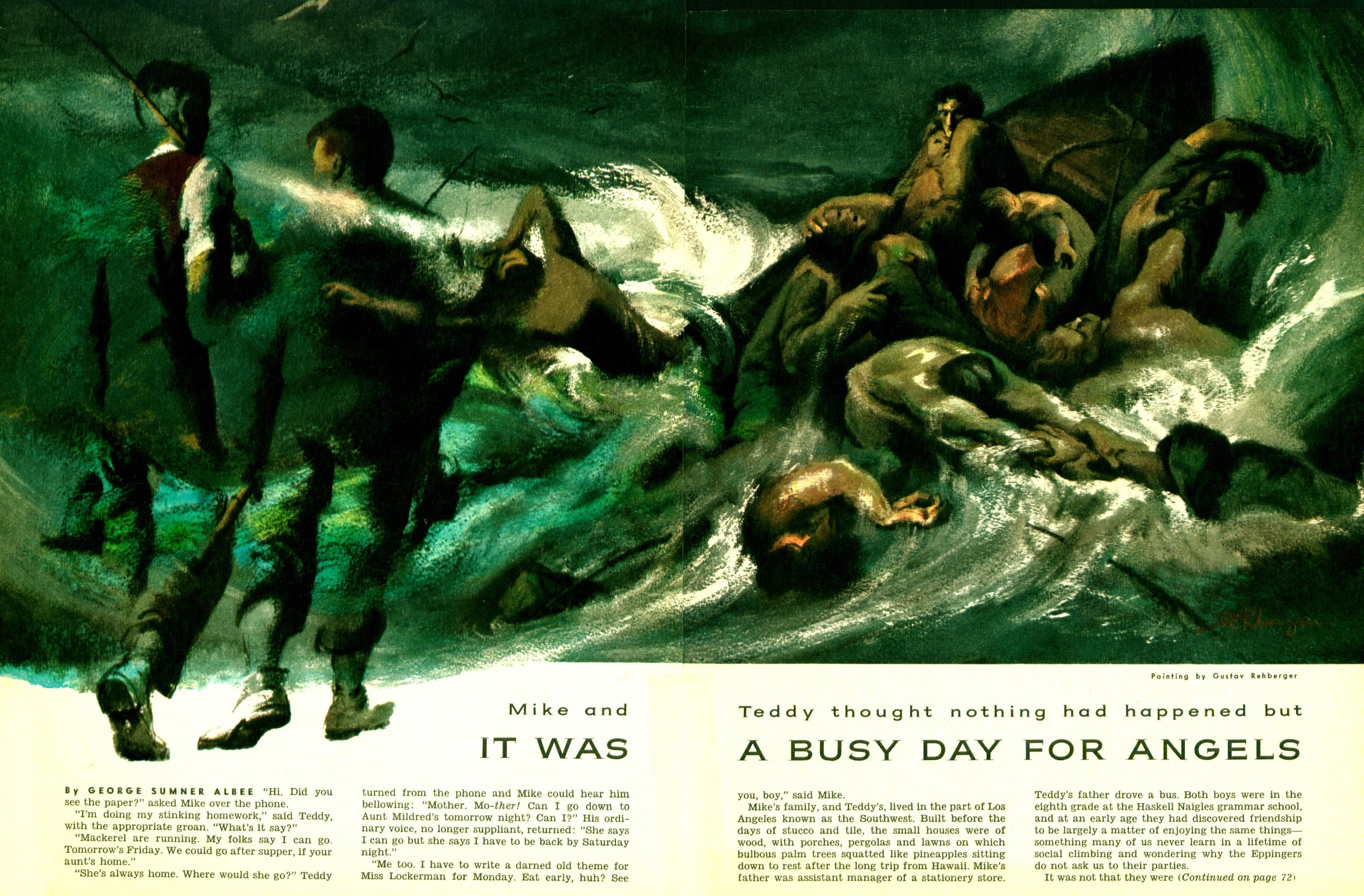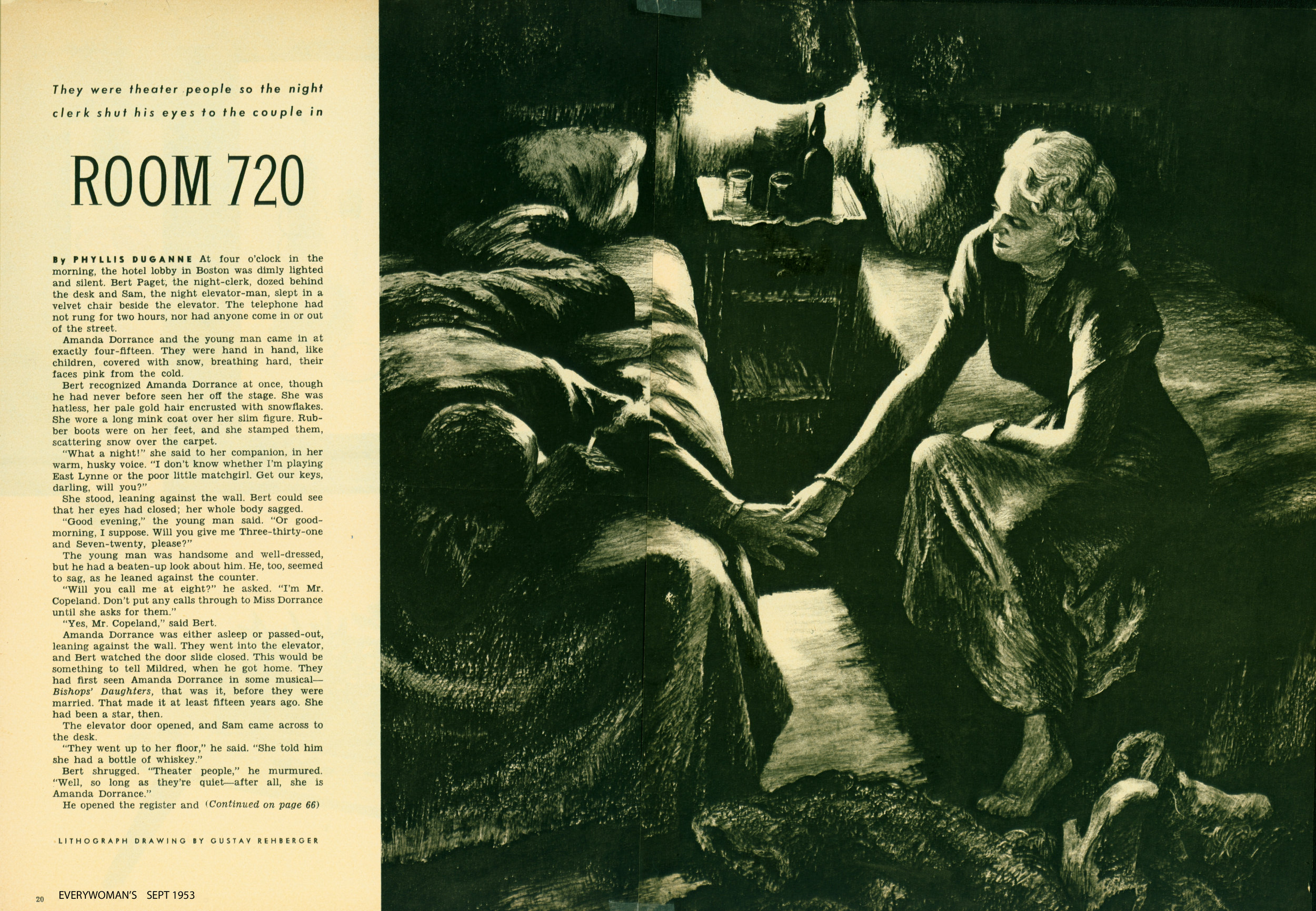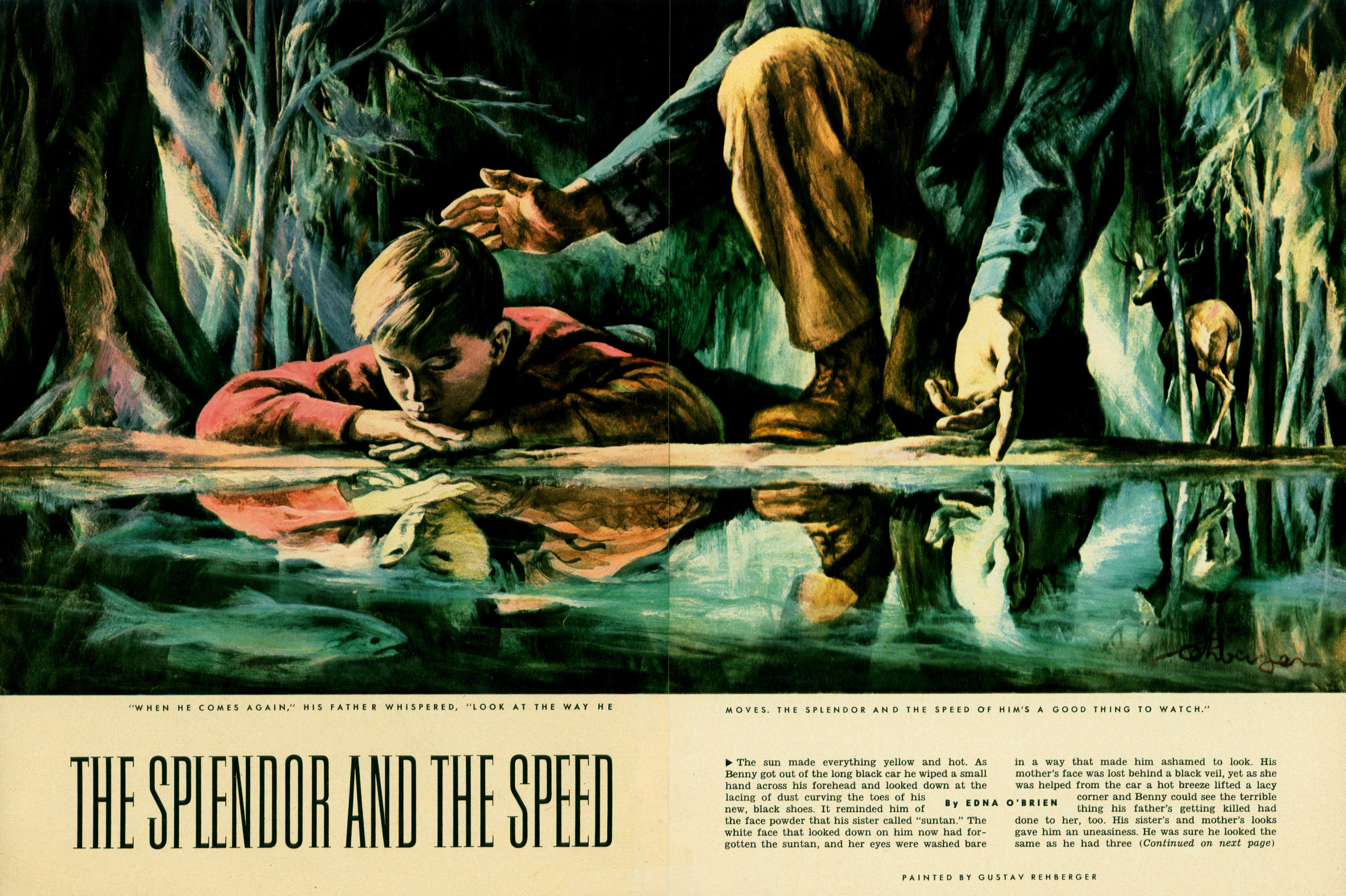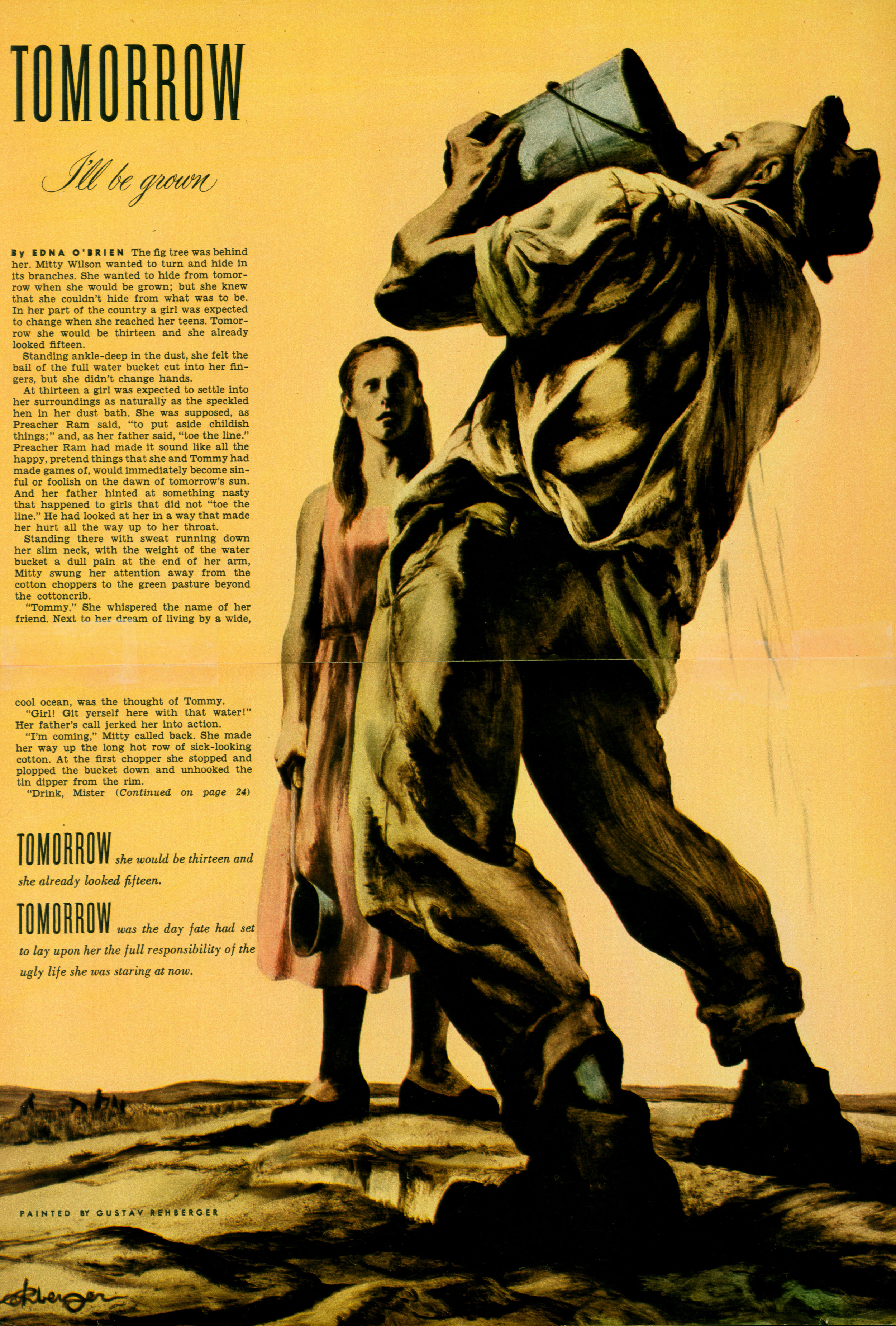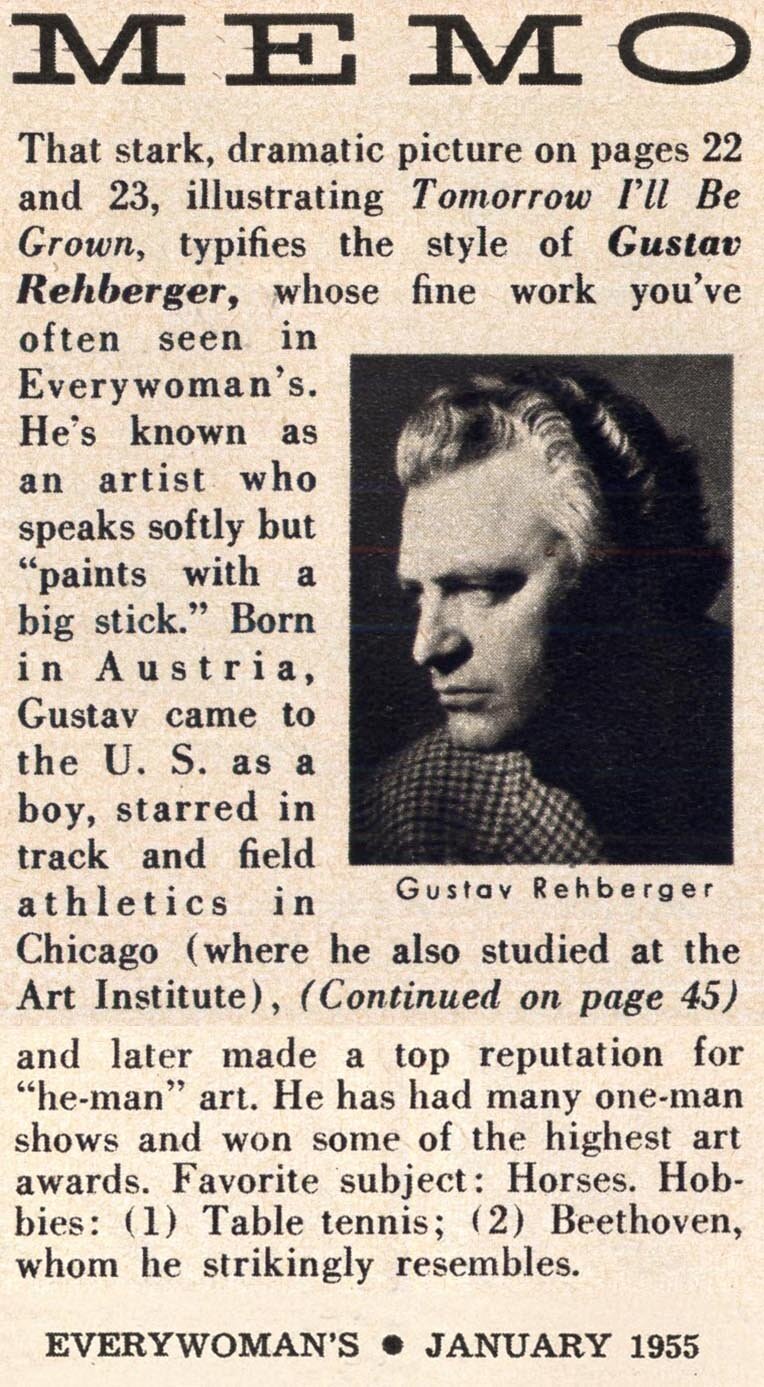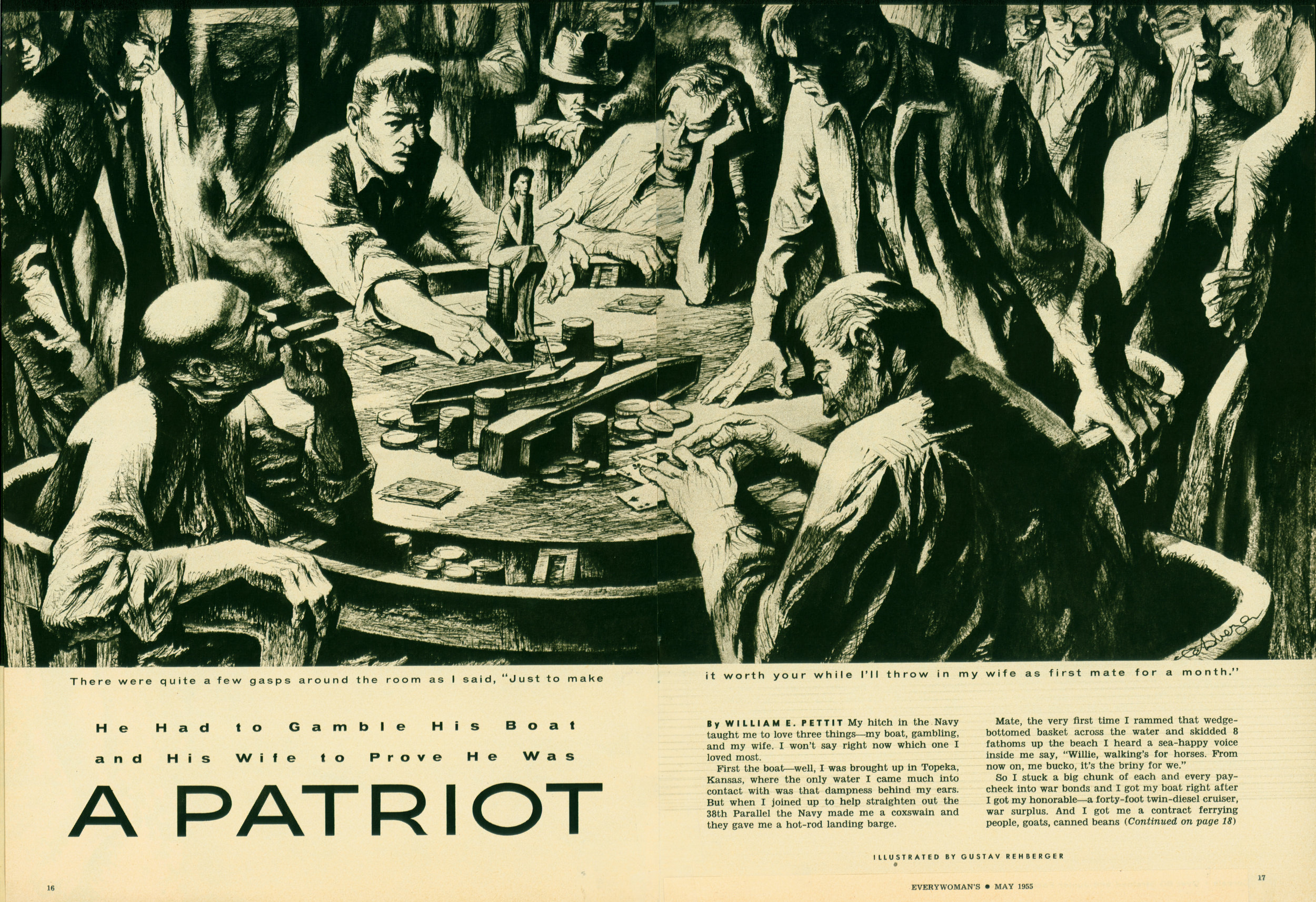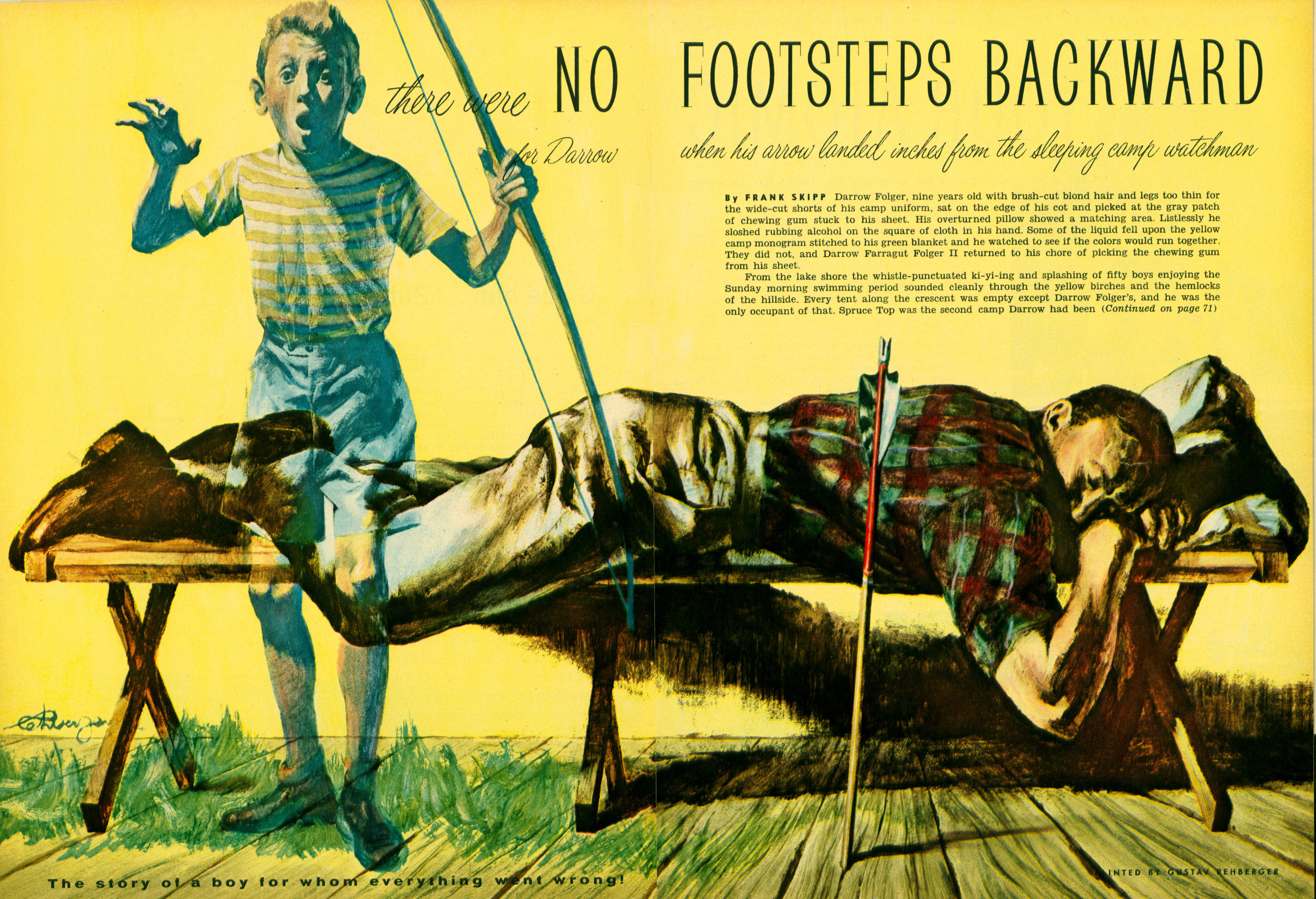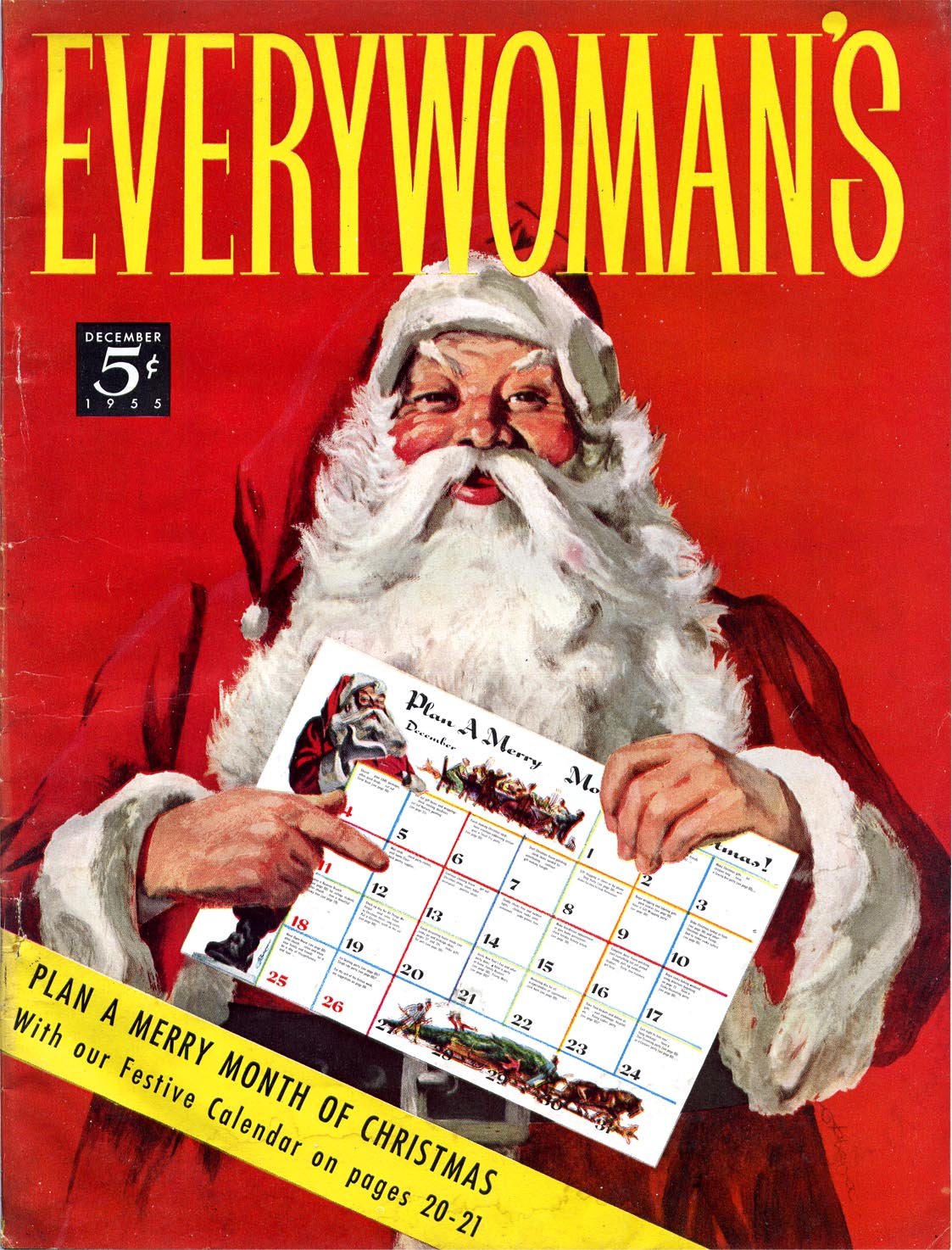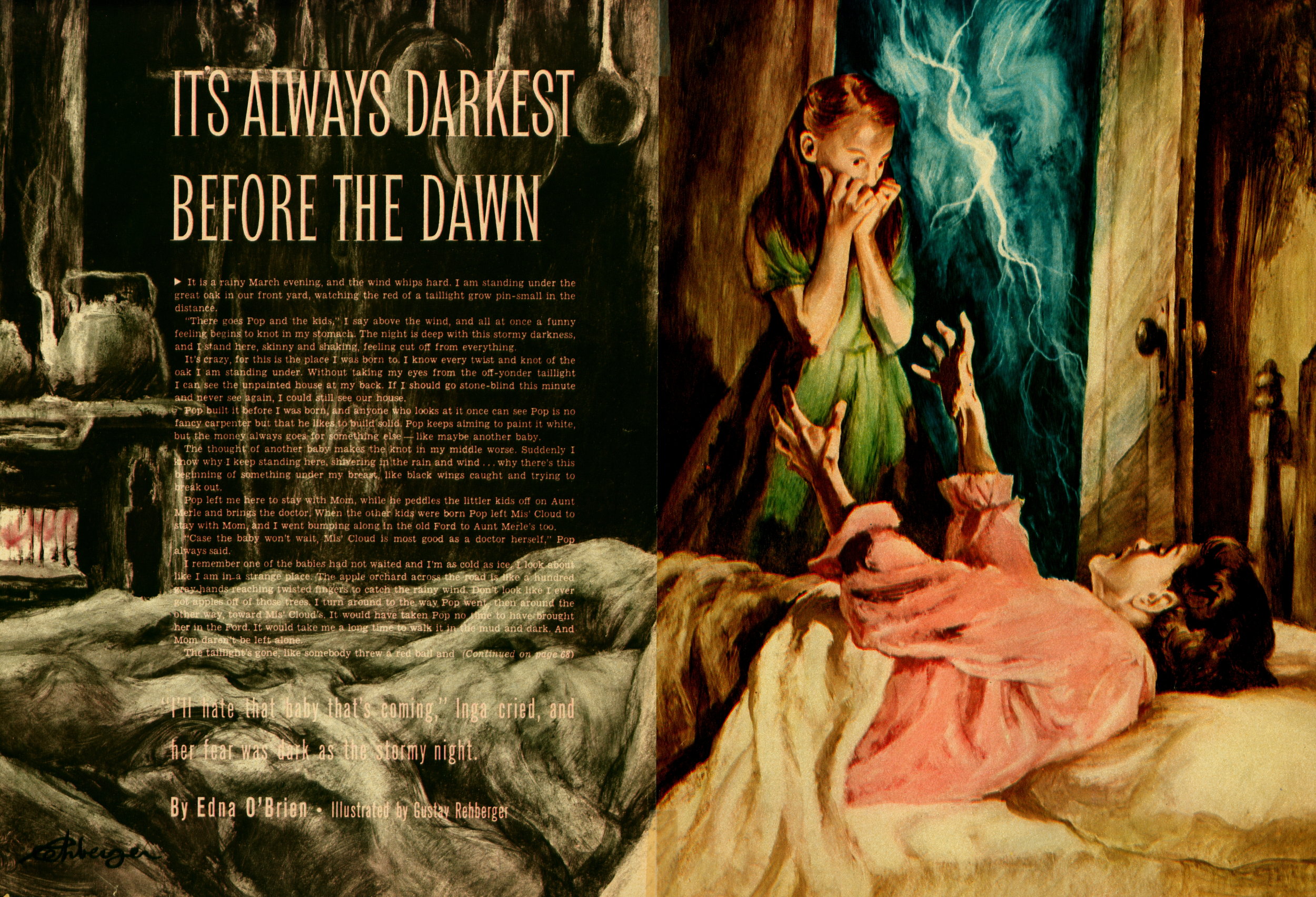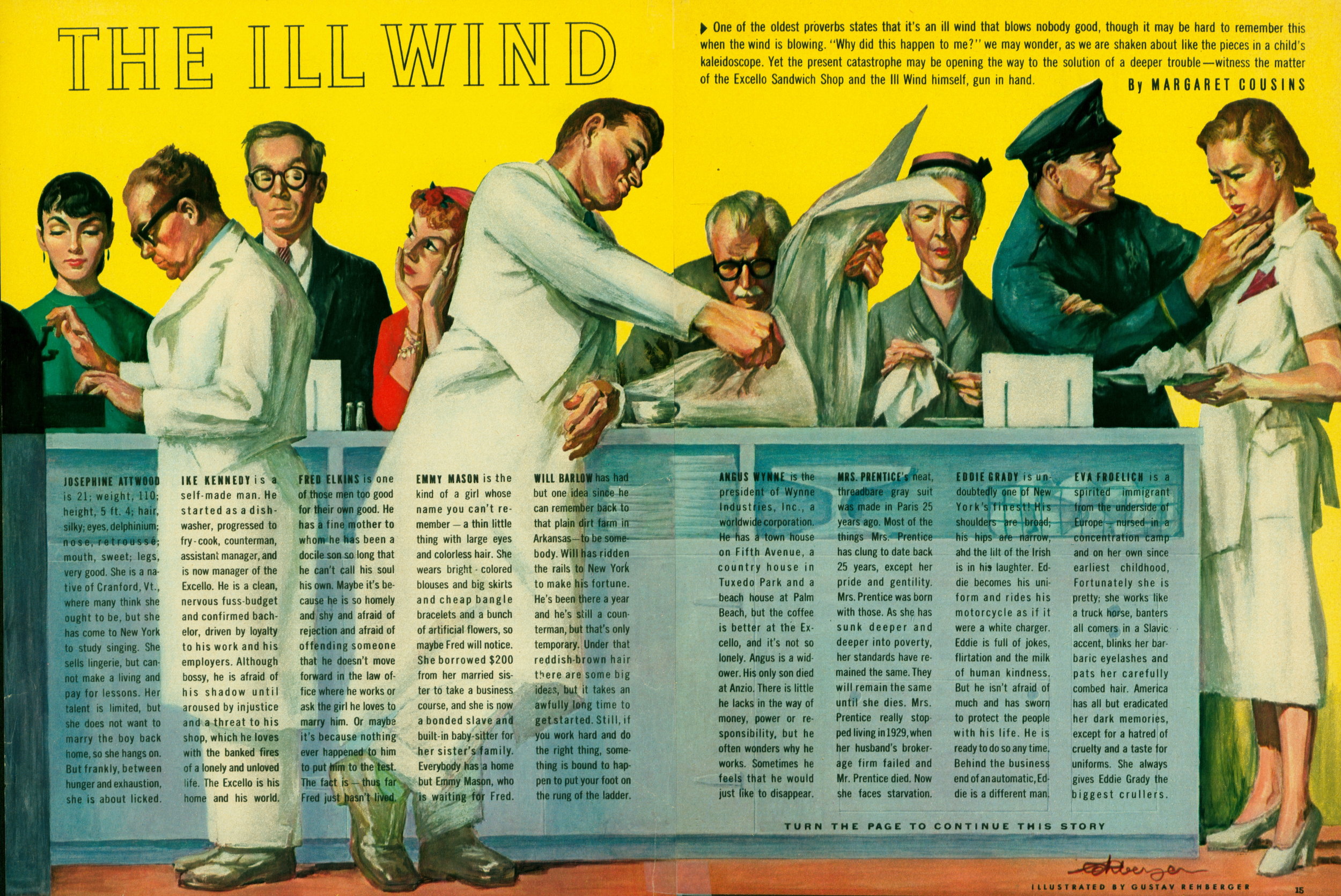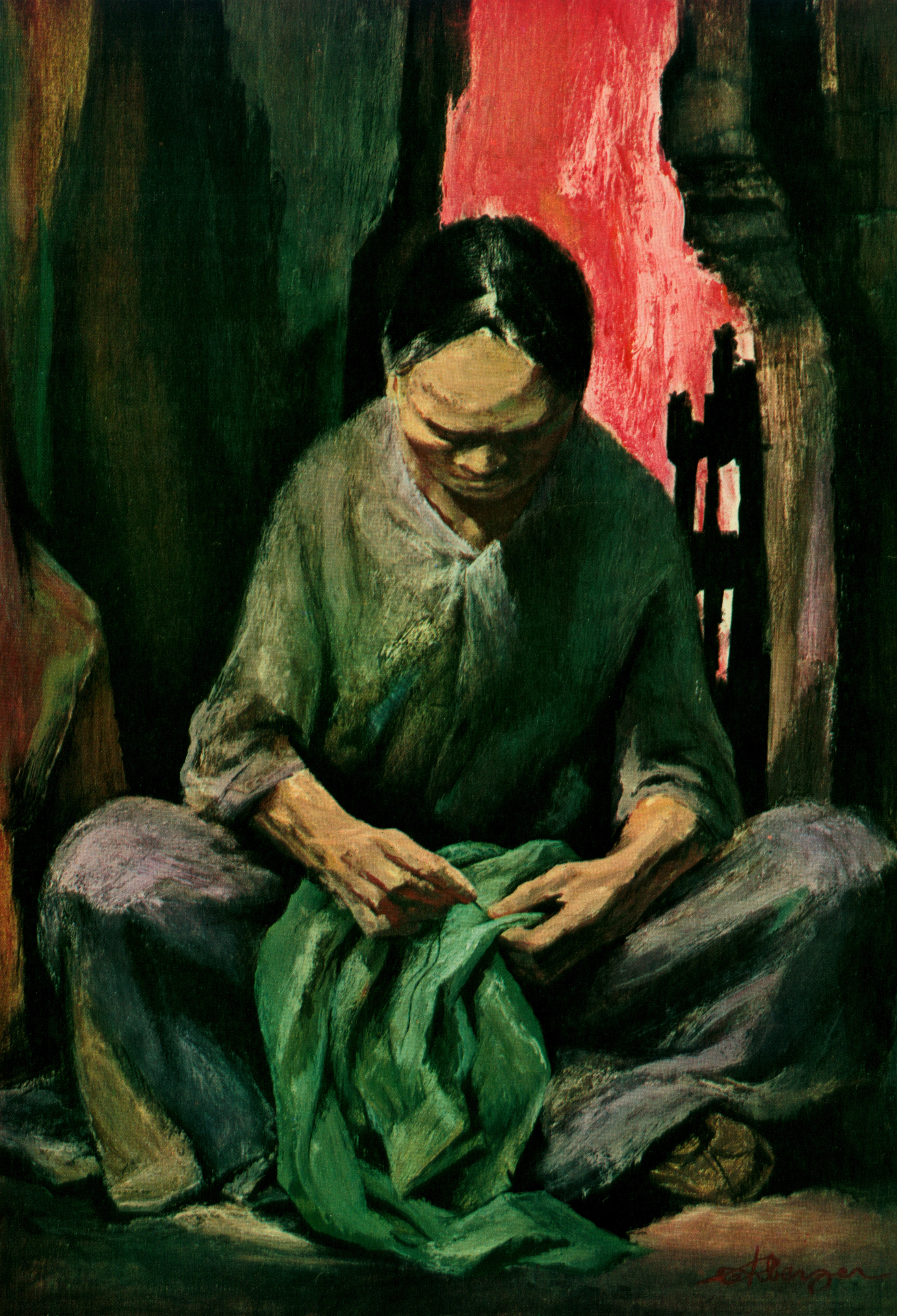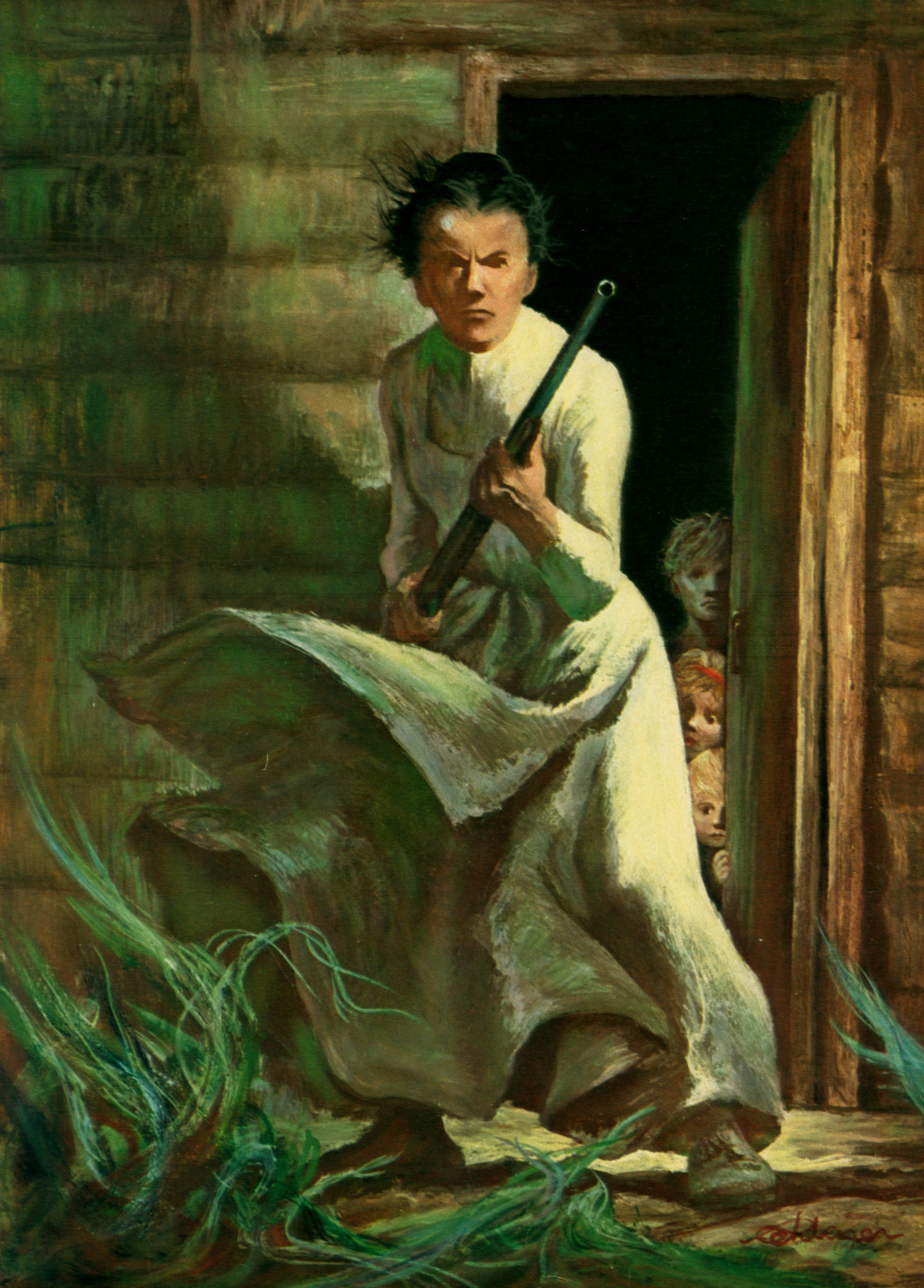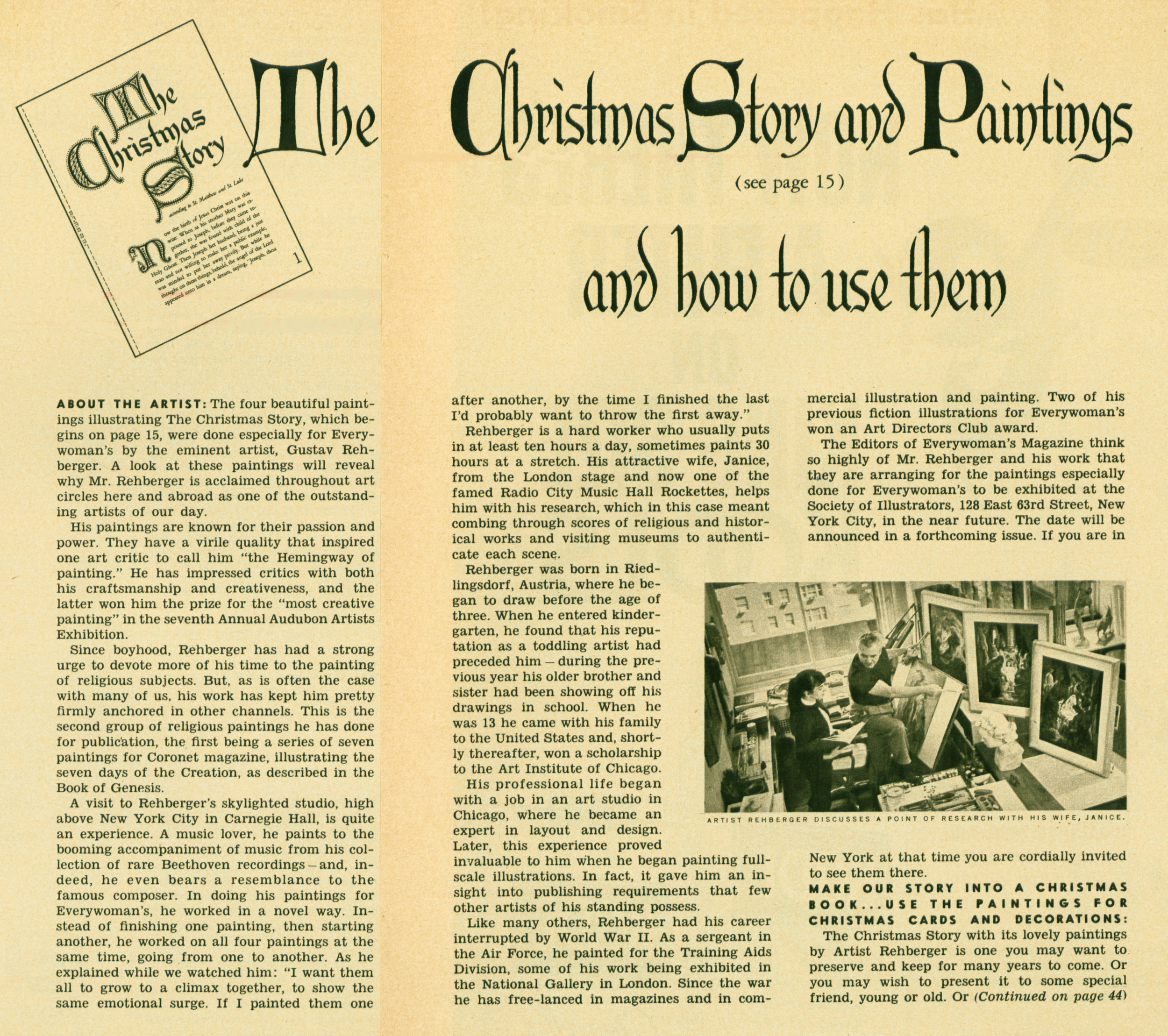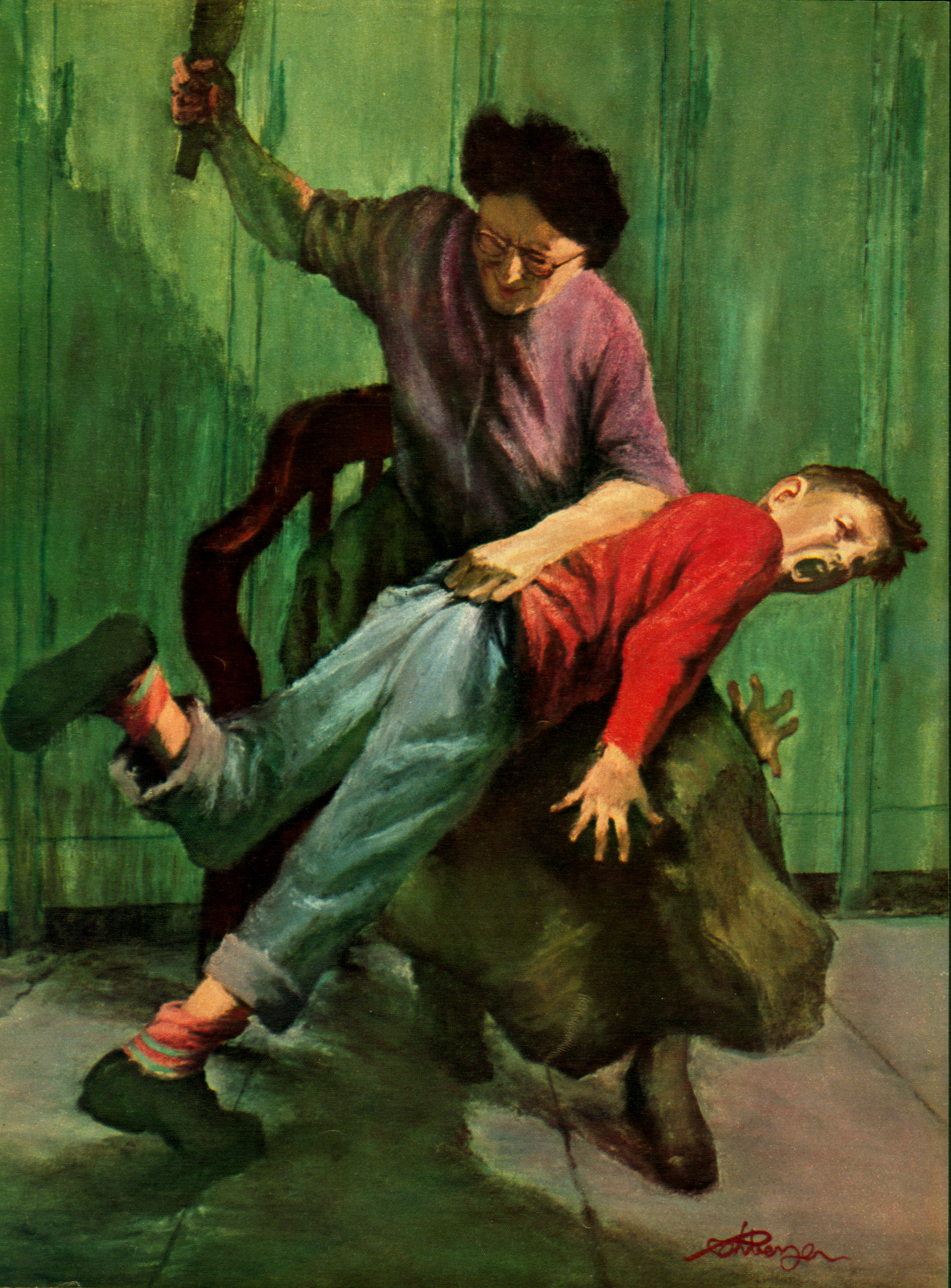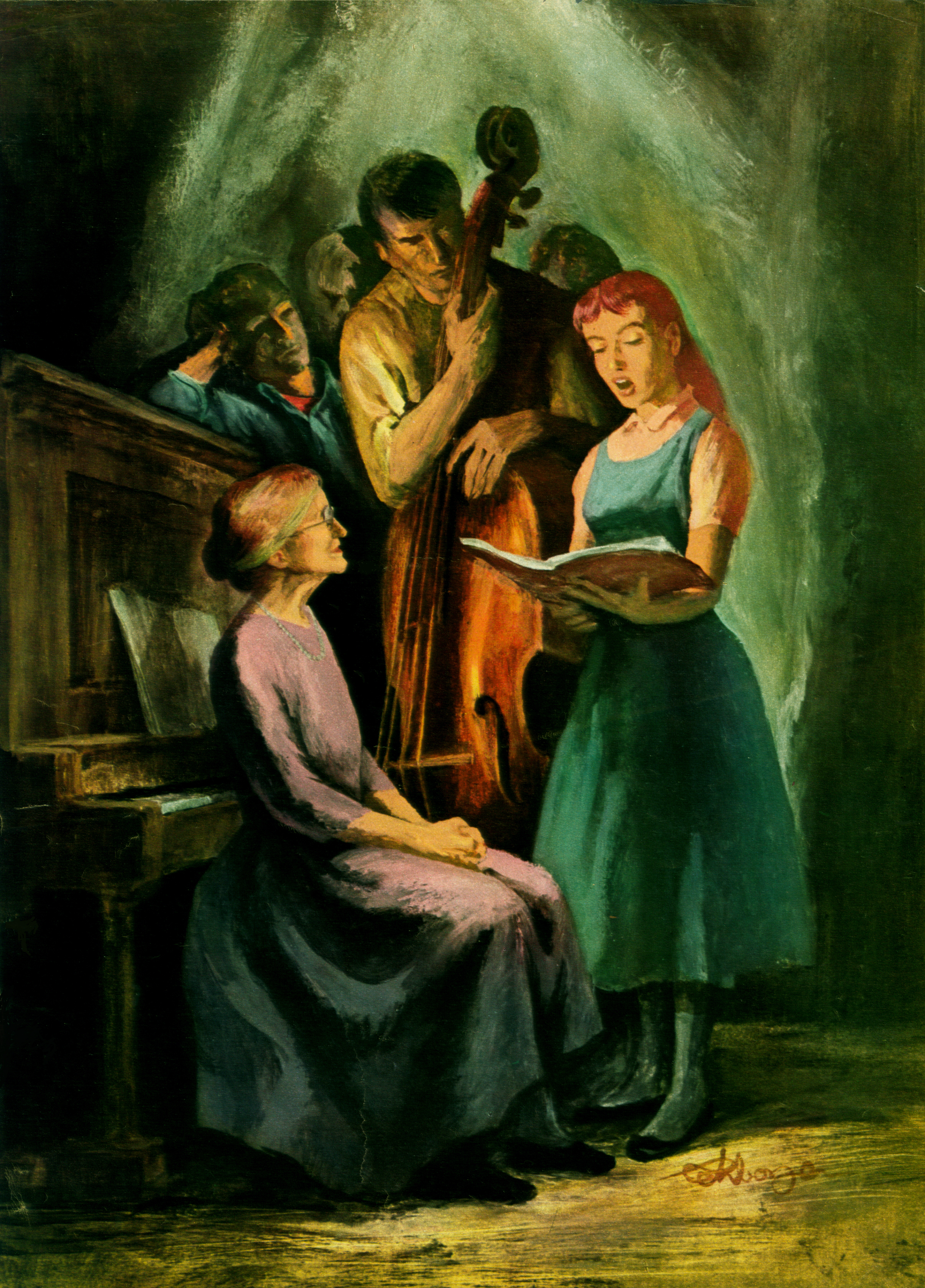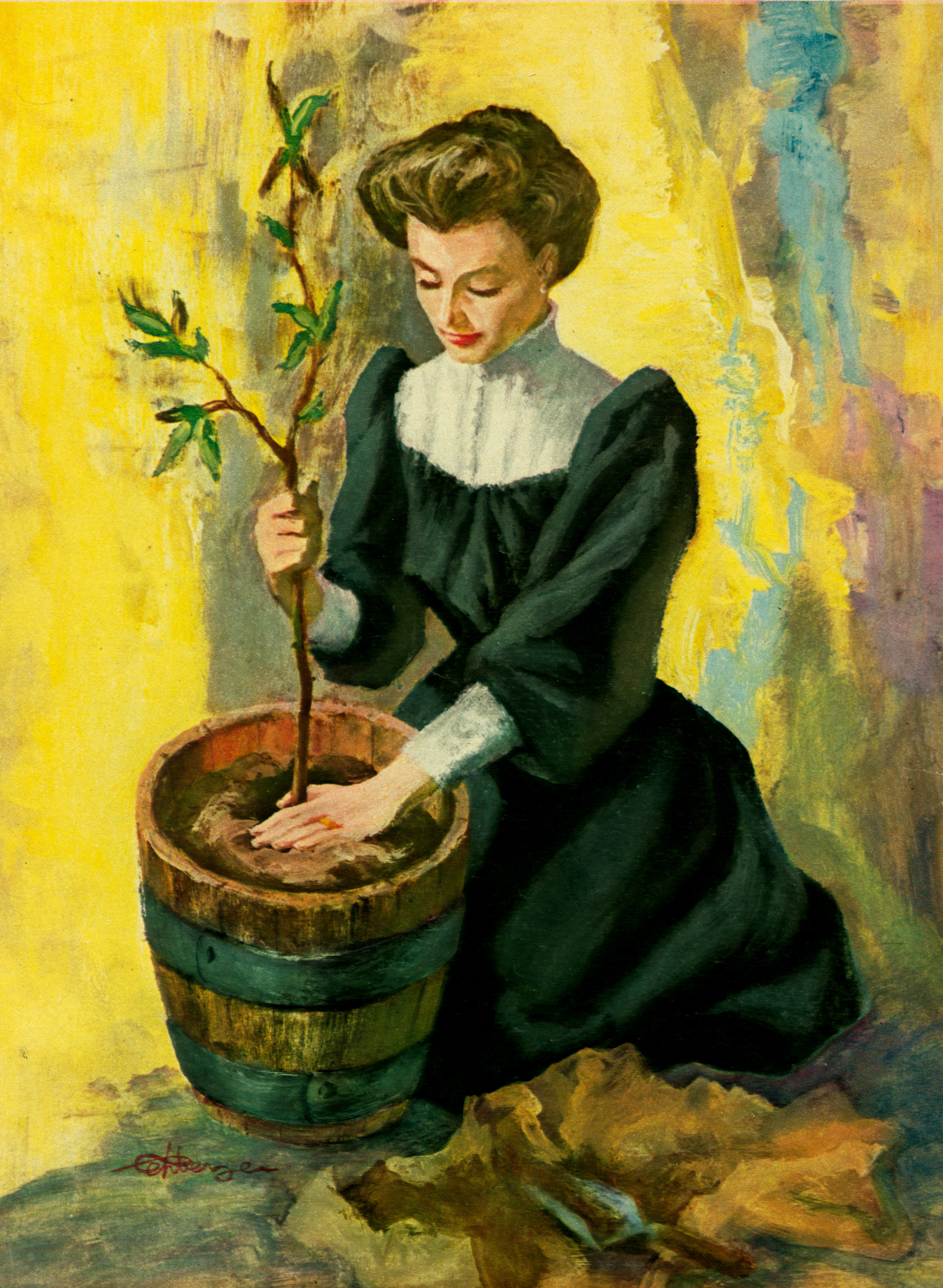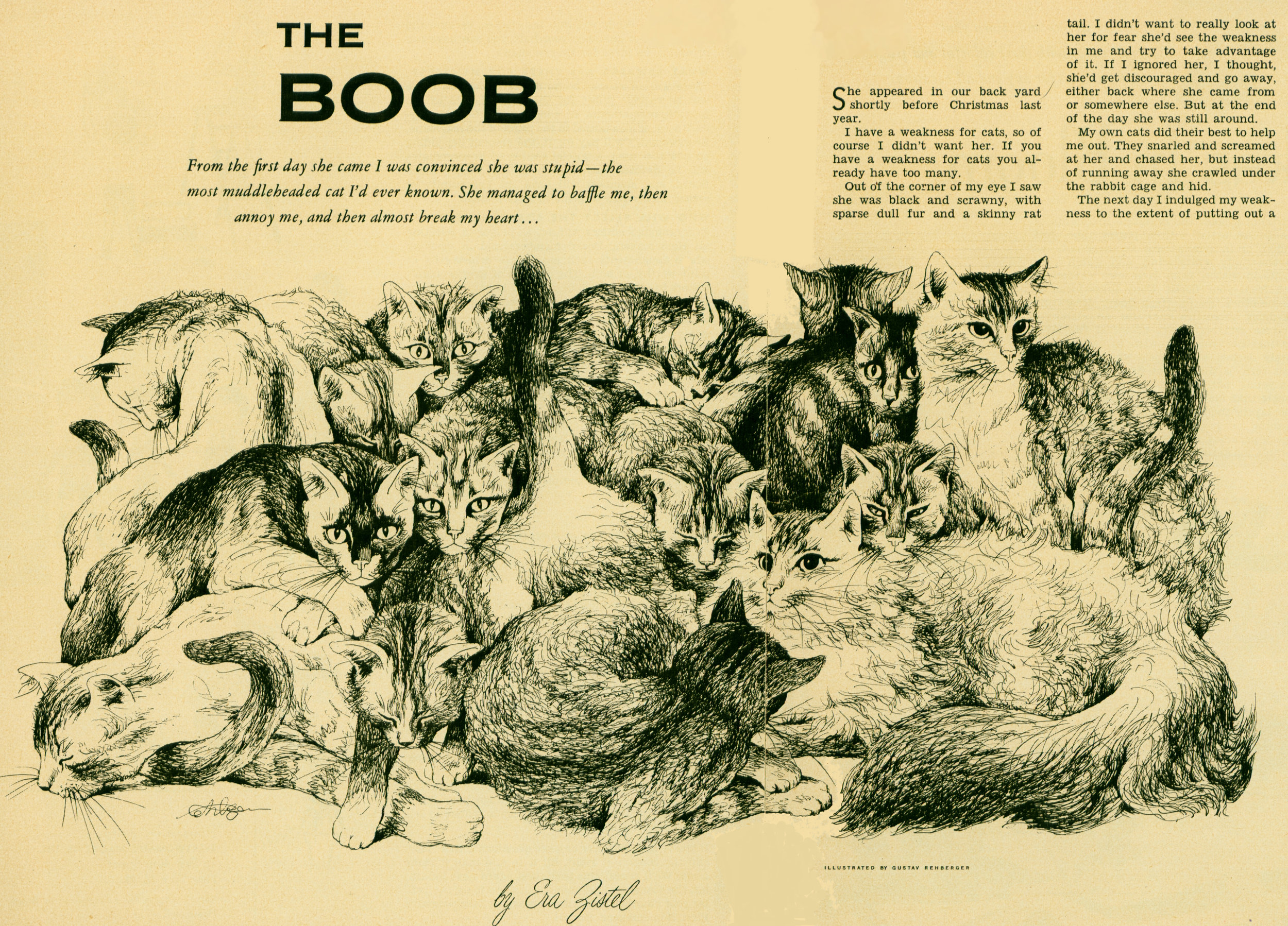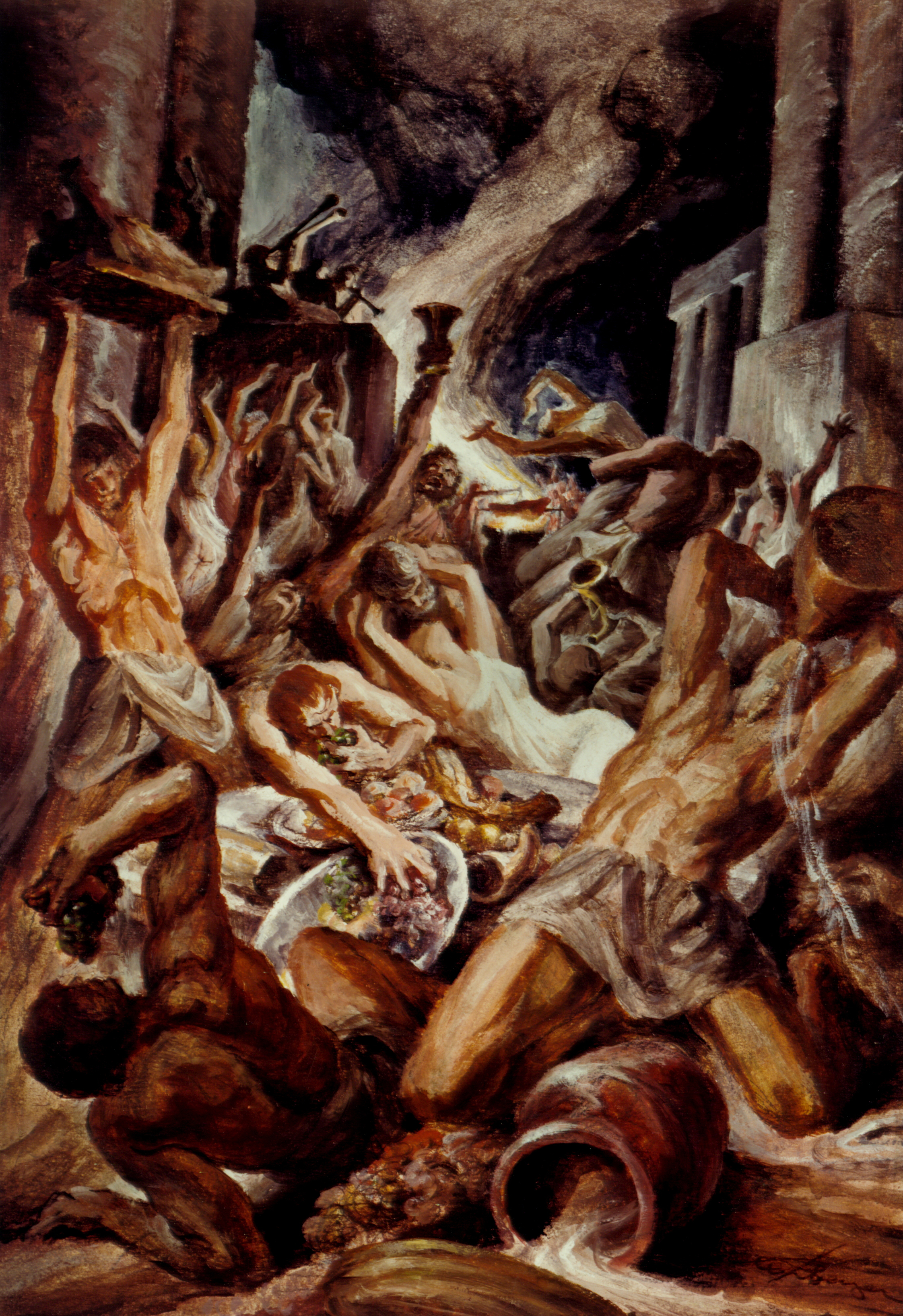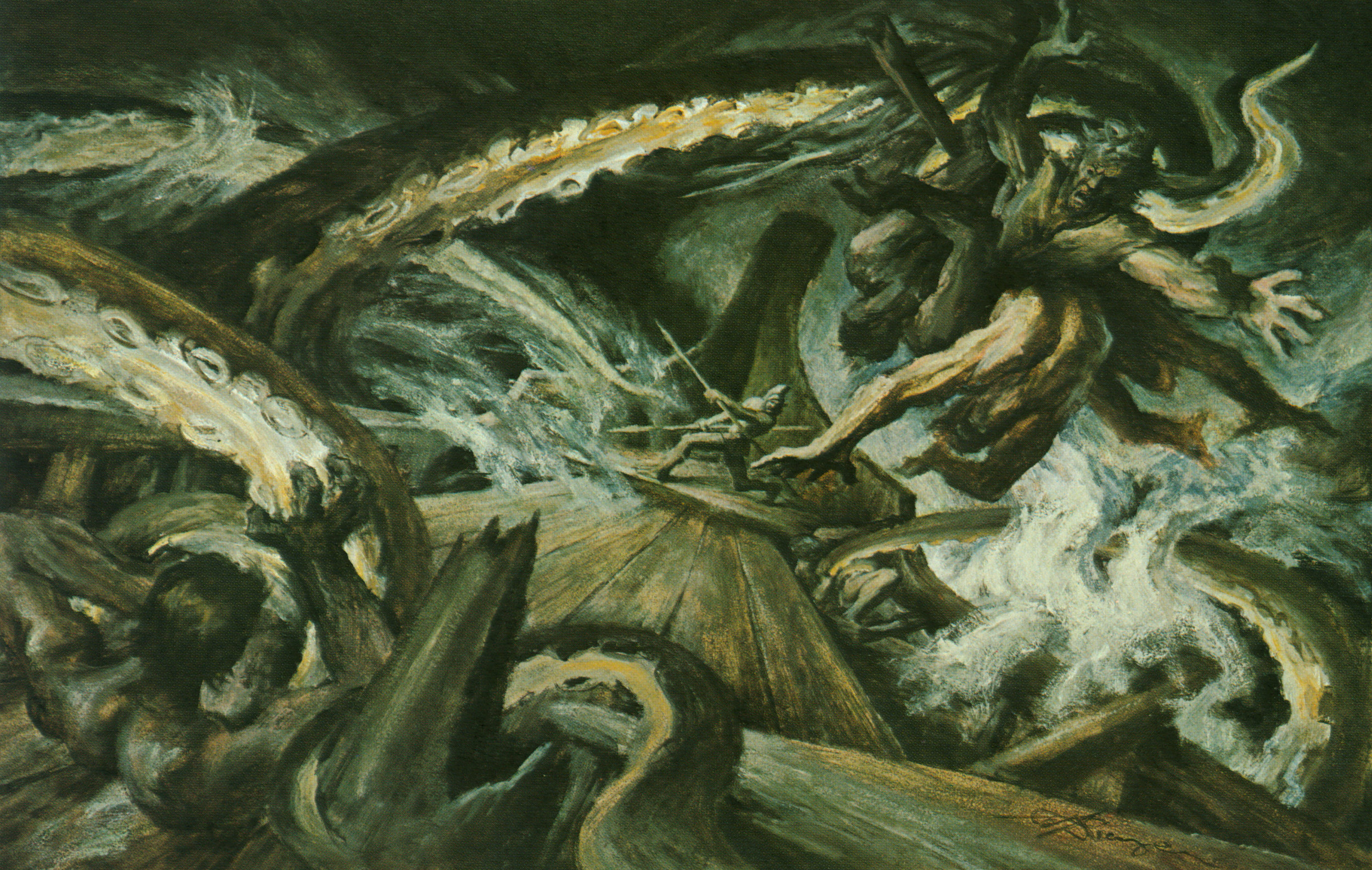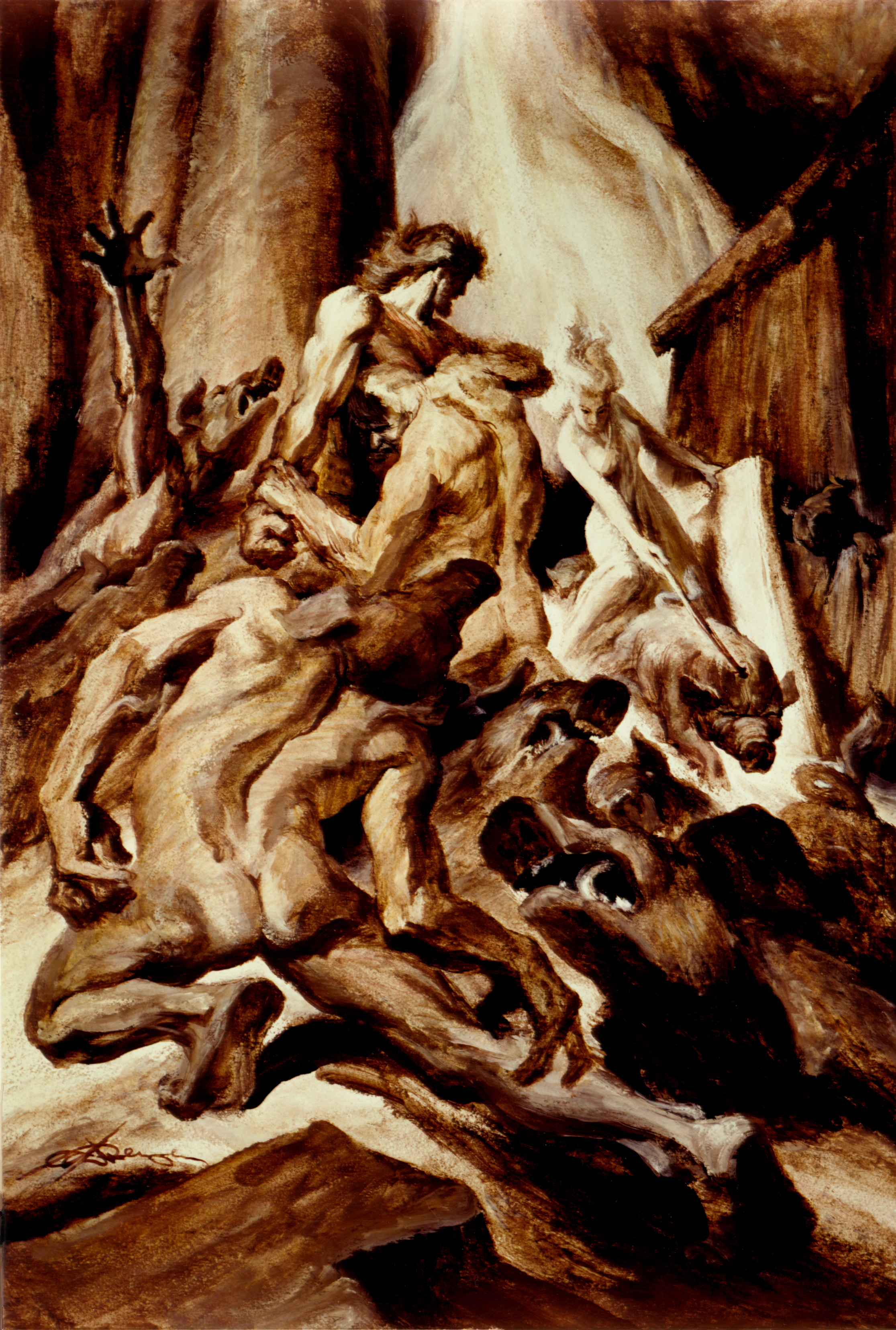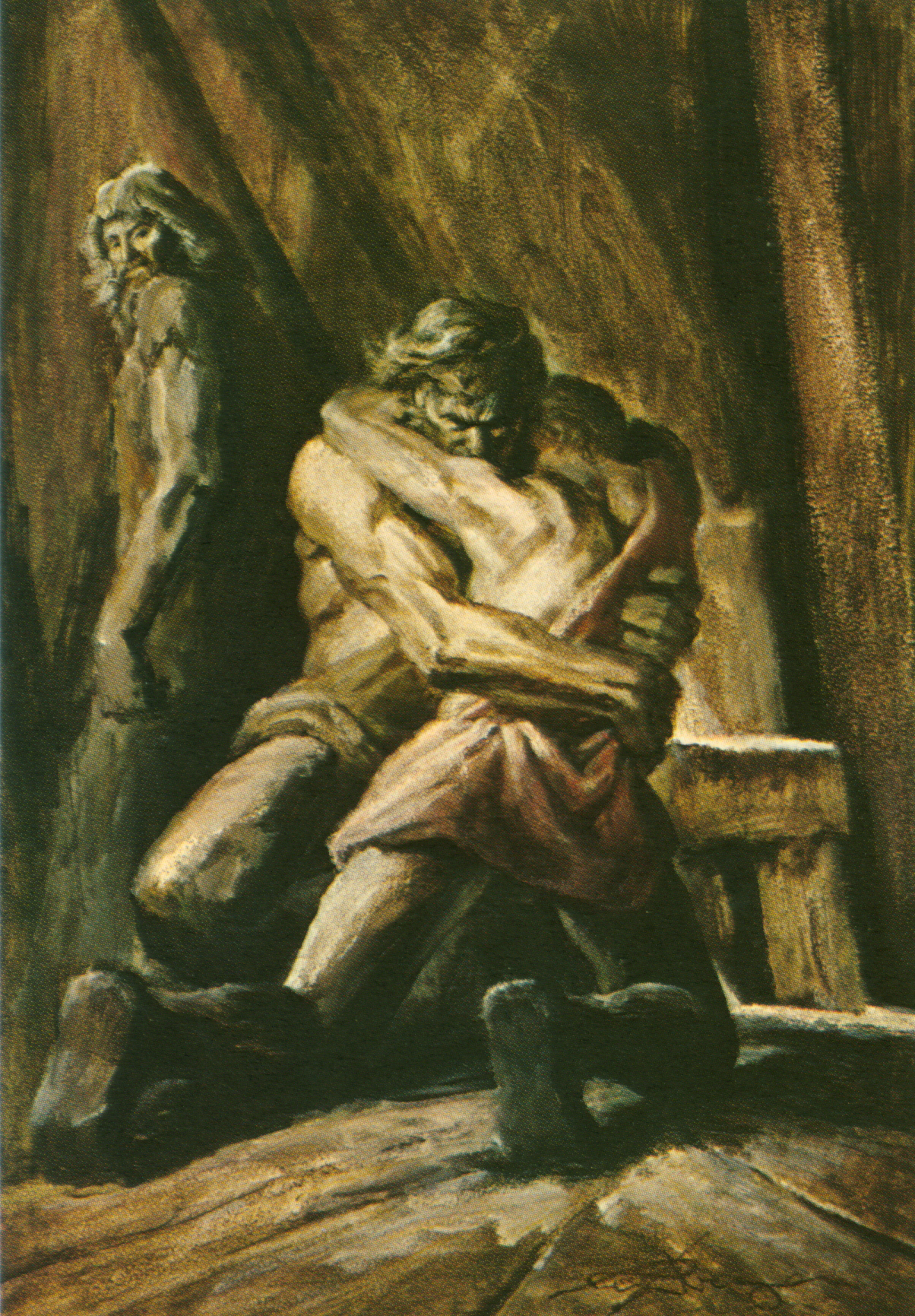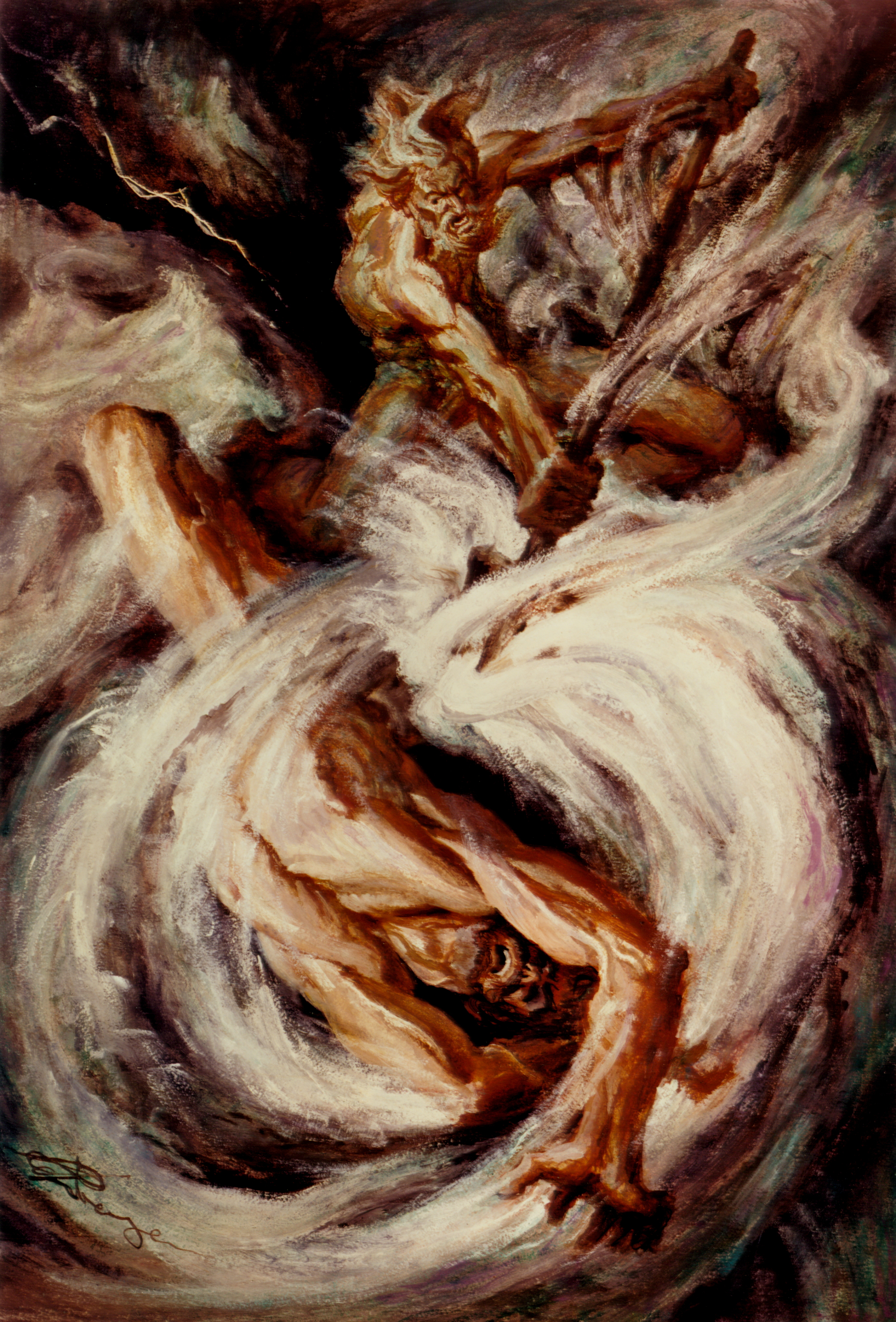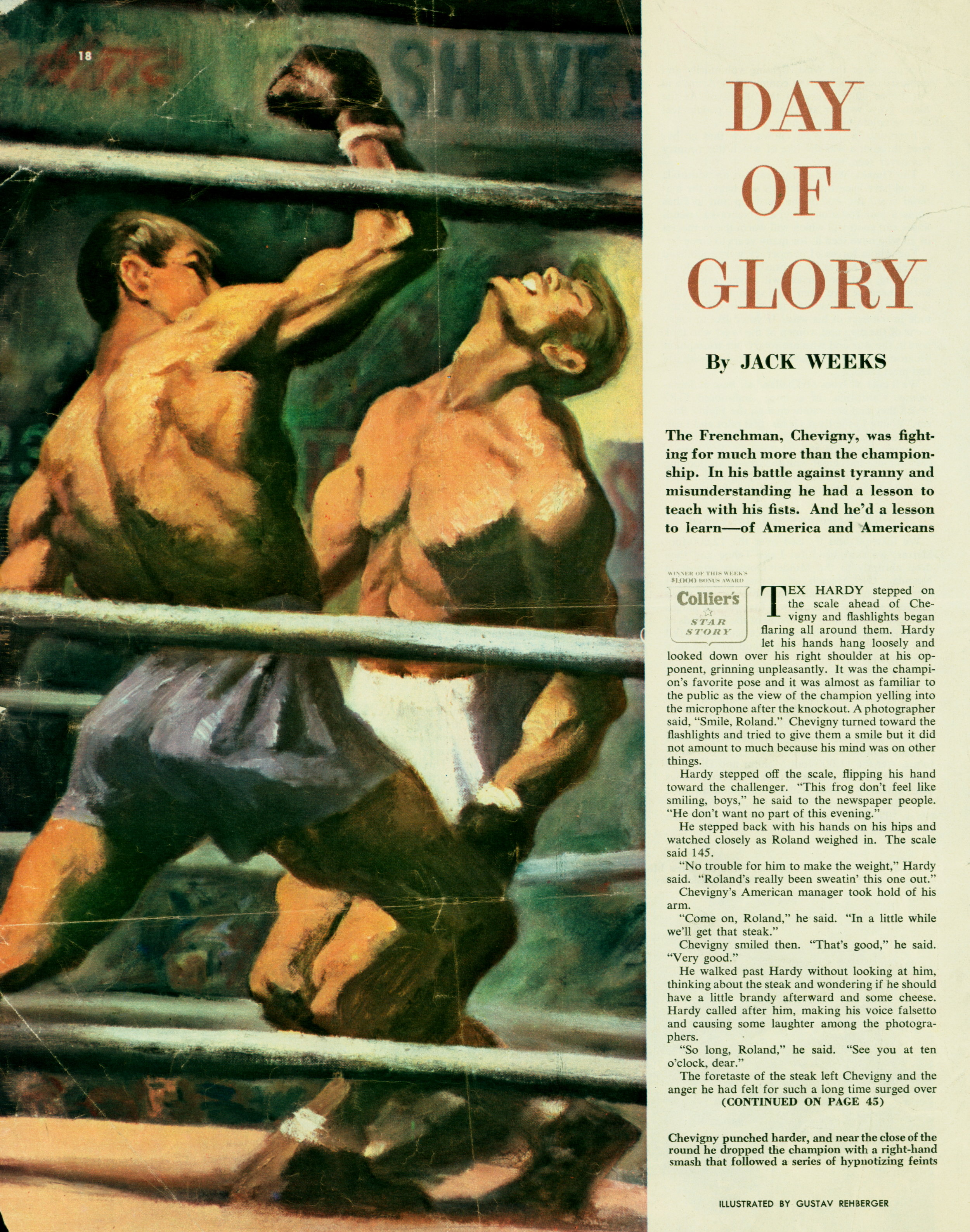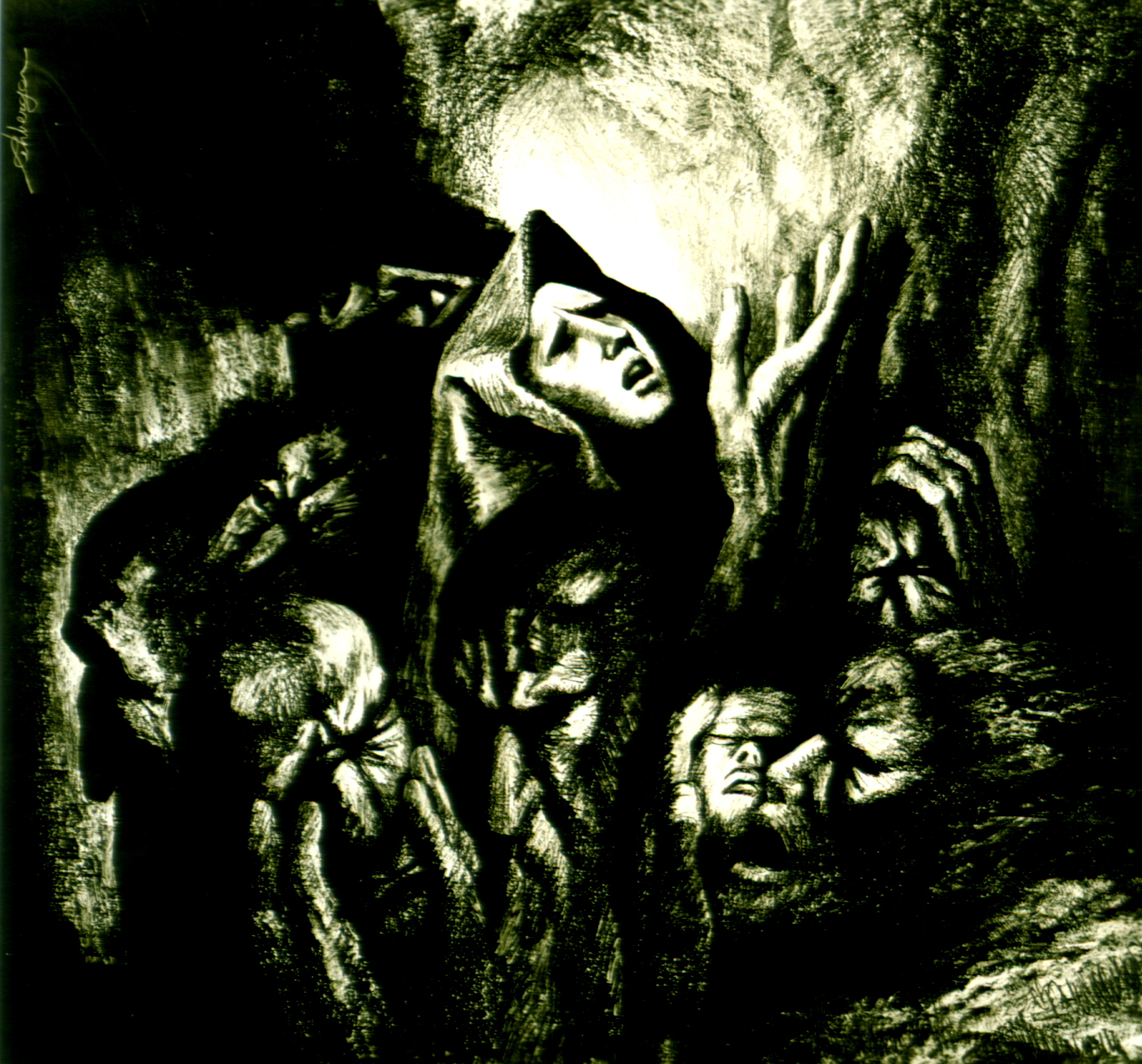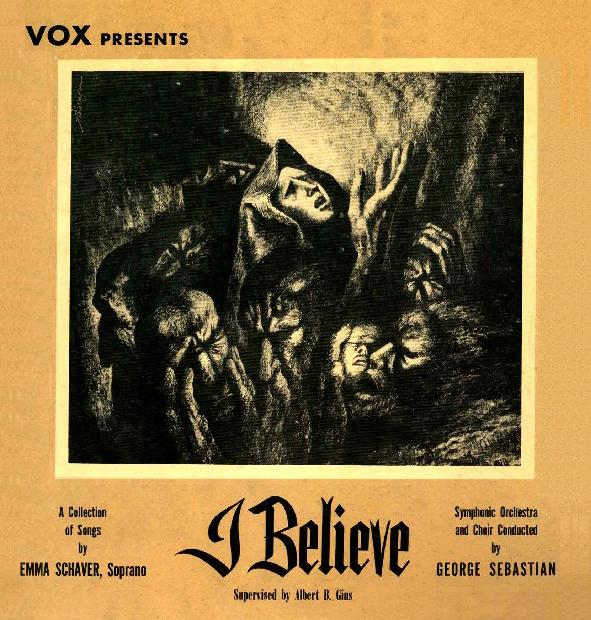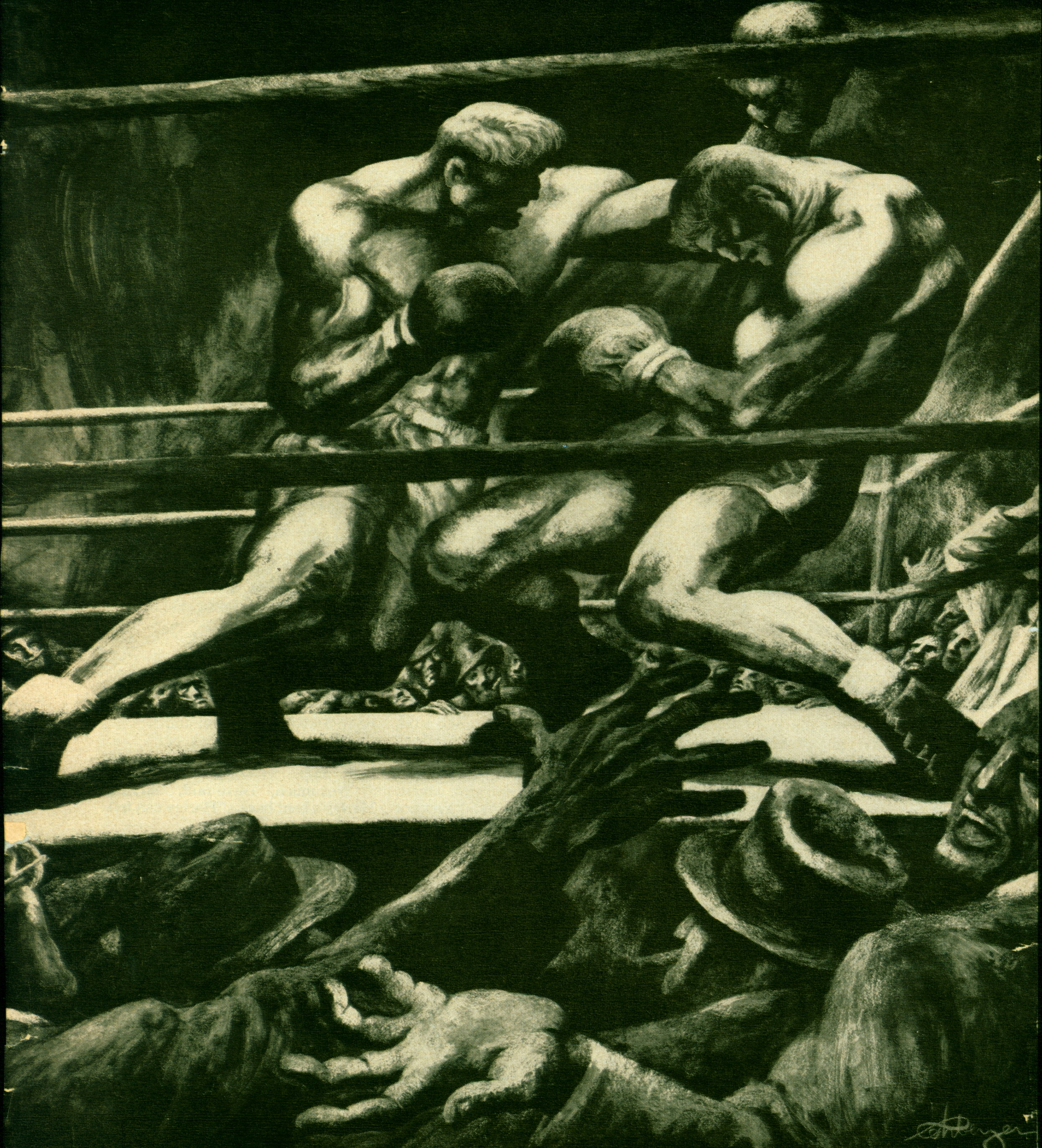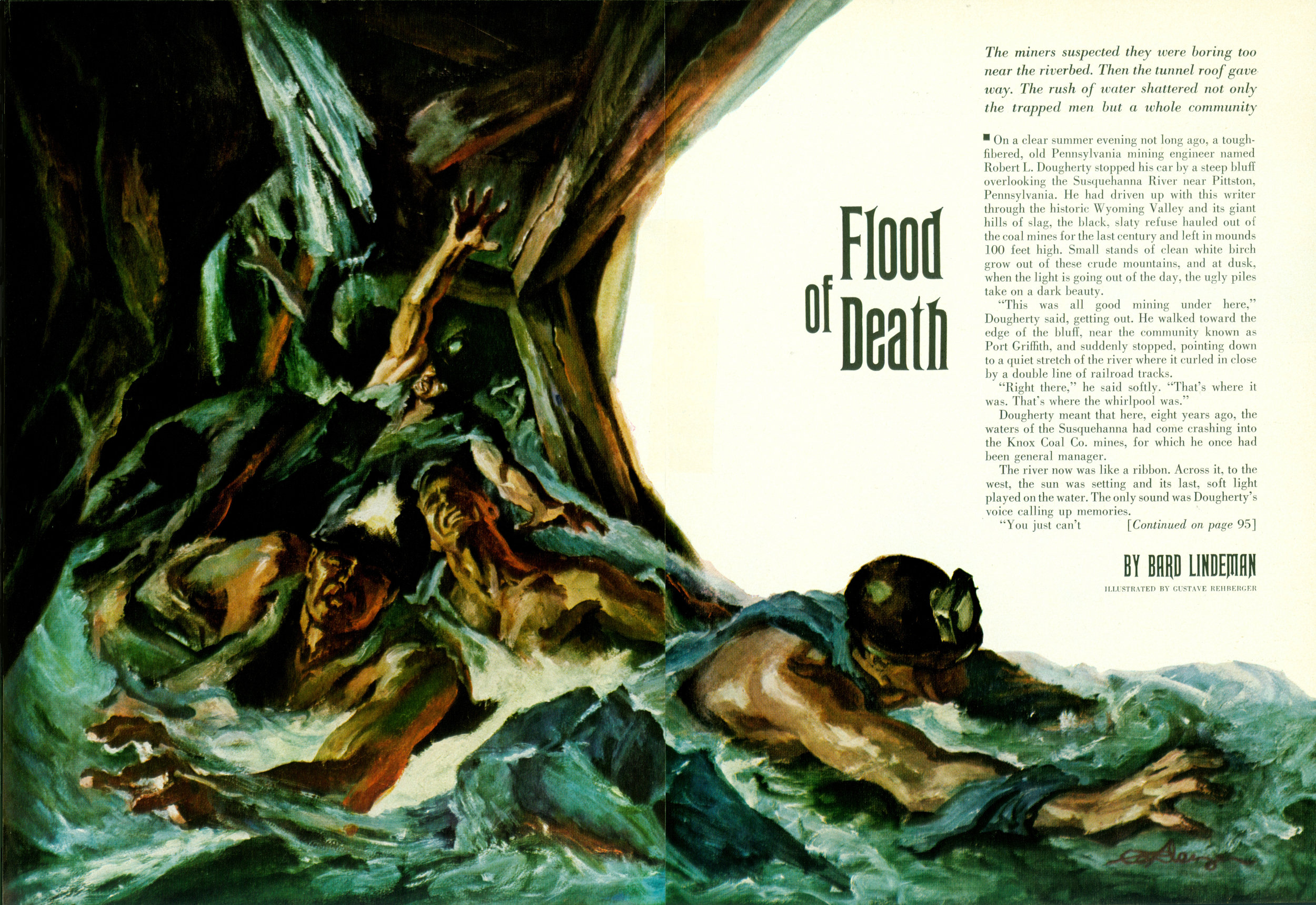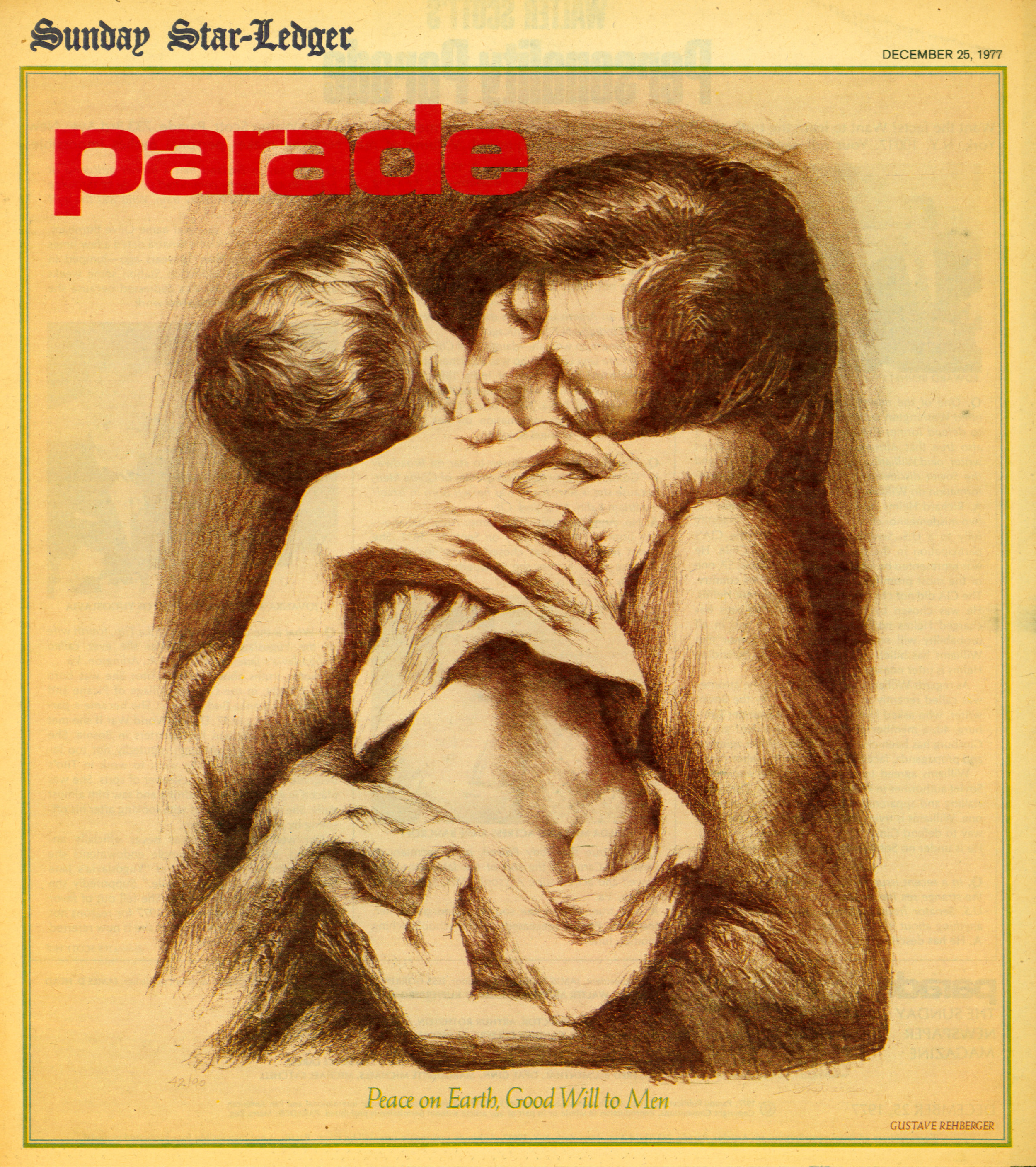Illustrations (1948-77)
After serving in the US Army as a distinguished Special Services Artist with the Fort Custer Illustrators and the Training Aids Division of the WWII Illustrations and Format Branch, Rehberger returned to civilian life. He resumed work as a commercial illustrator and created impassioned artwork that accompanied feature articles for American magazine classics including Esquire, Coronet, Everywoman's, Reader's Digest, Collier's and Parade Magazine. One critic, commenting on Rehberger's work, labelled him the "Hemingway of painting." Gustav Rehberger was considered a "pioneer in the use of expressionism in American illustration and design."
Jump to Section: "Collier's Magazine", "Coronet Magazine", "Esquire Magazine", “Everywoman's Magazine", "I Believe", “Nation’s Business”, "Parade Magazine", “Reader's-Digest", "True Magazine"
“RED HORIZON”
Esquire Magazine - July 1950
1948-49
"Backstage with Esquire"
July 1949
1948
“Esquire Magazine”
1949
1950
1951
1949-58
“CORONET MAGAZINE”
April 1949 - "Genesis - The Story of Creation on the Sixth Day"
May 1950 - Alexander the Great
December 1950 - The Magic of Music, Roland Hayes - American lyric tenor and composer
January 1951 - Napoleon
July 1953 - The Shot Heard Round the World
June 1954 - The Country of the Blind by H.G. Wells
July 1955 - The Shakespeare Murder Mystery
October 1958 - The Agony of the Caged Birdman
1953-57
“EVERYWOMAN'S MAGAZINE”
1969
“Reader’s Digest” Best Loved Books of Young Readers
1969 - The Odyssey by Homer
1949
“Collier's Magazine”
C. 1950
unknown publication
Prior to 1966, the term “Negro” was how most black Americans described themselves. The term “Negro” started its decline in 1966 and was totally uncouth by the mid-1980s. The turning point in the use of this term came when Stokely Carmichael, who was a prominent American socialist organizer in the civil rights movement persuasively argued that the term implied black inferiority. According to a 1968 Newsweek poll, more than two-thirds of black Americans still preferred the term “Negro”, but “African-American” or “Black” had become the majority socially acceptable preference by 1974.
“I BeliEve“
Circa 1950, Gustav Rehberger created this moving cover illustration for an album titled "I Believe." The album, produced by Vox Records, was a compilation of Musique dans les Ghettos or Music from the Camps featuring Soprano Emma Schaver. Ms. Schaver honed her skills as a soprano at the Chicago Conservatory and at the Julliard School of Music.
With her husband's encouragement, Emma became more active in American Jewish culture and in the late 1930s and early 1940's she began to collect and sing Yiddish and Hebrew songs. In 1945, she was invited by the World Jewish Congress with the purpose of bringing Jewish pride and culture back to survivors of the Holocaust. Ms. Schaver had been pushing to sing for survivors for over a year stating, “My feeling was, the first thing to do was to save them, to meet their bodily needs. The next thing was to give them something for the soul. That was something I could do.” She traveled all over Germany and Poland singing to survivors, and as she did, collected the songs of the concentration camps she heard from them. Originally scheduled to serve for three months, she insisted on staying six, afterwards traveling to Israel with her husband Morris. Upon returning to the US, Ms. Schaver produced an album of concentration camp songs entitled, "I Believe."

